The ideal room for nighttime rest is one where sleep will be sound and peaceful. A beige bedroom creates the best conditions for easy falling asleep and full night-time recovery, so light brown tones are so popular in decorating this part of the house. But how to make beige stylish and modern, since it is so customary and mundane? We tell and show in our article.
The Impact on People
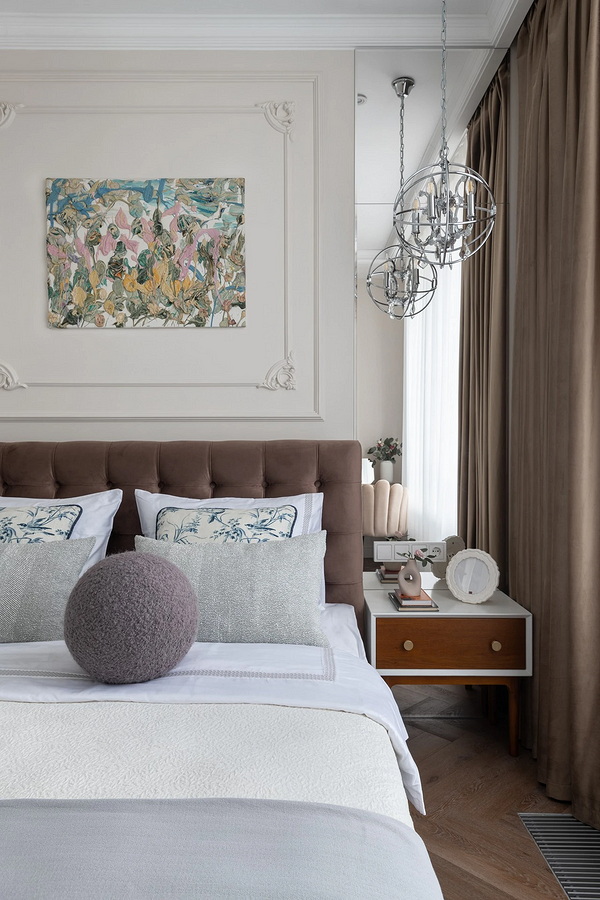
One of the main characteristics of beige is its naturalness. It’s the color of sand, natural fabrics, mown grass, and dried leaves, and many animals are painted in its shades. But beige is most closely associated with food: warm bread, fragrant homemade cookies, the froth on a cappuccino, tea with milk…
Thanks to all this, the light-brown palette is associated with consistency and protection. It helps relax and feel tranquility and confidence in the future.
Beige walls in the bedroom will be a good choice, as it’s easier to fall asleep surrounded by cream and light coffee tones. In such a room, you don’t want to argue, and all the daily troubles recede into the background. In such an environment, the mind calms, and turbulent emotions subside. Unlike many other colors, this shade does not cause rejection in most people. It’s too featureless and mundane to provoke negativity or aggression. But this is also its problem: in proud solitude, it can be boring and monotonous, and when there’s too much of it, it can make a person too passive and inert.
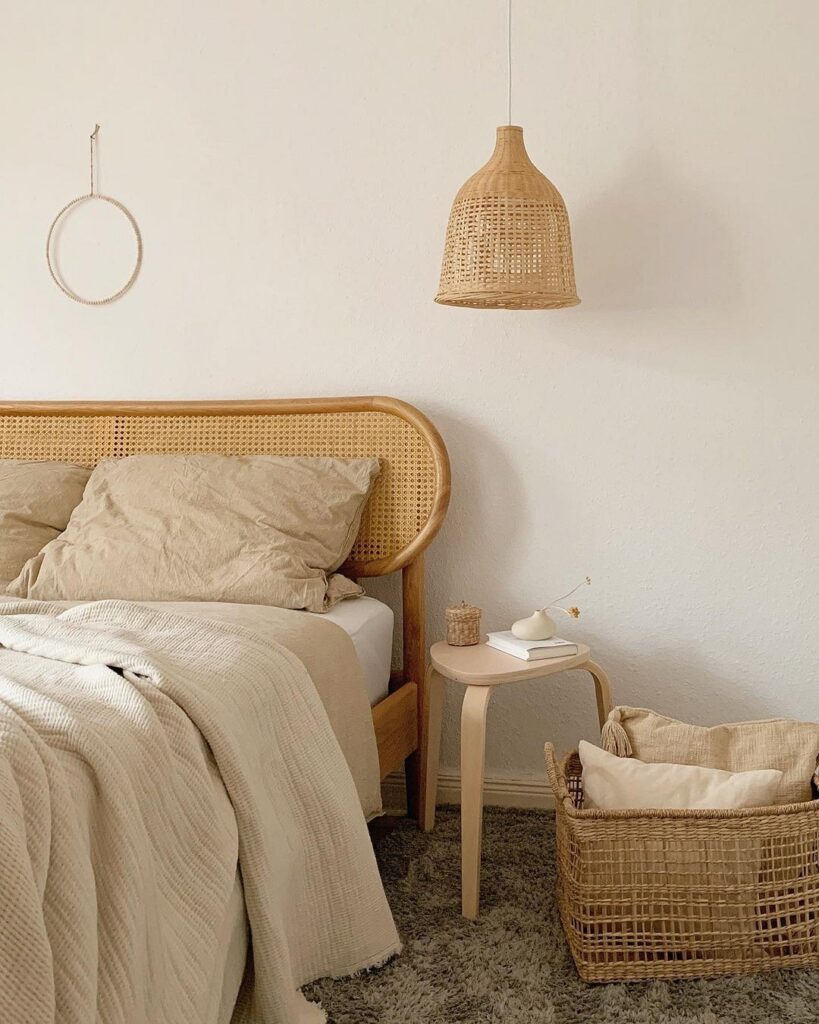
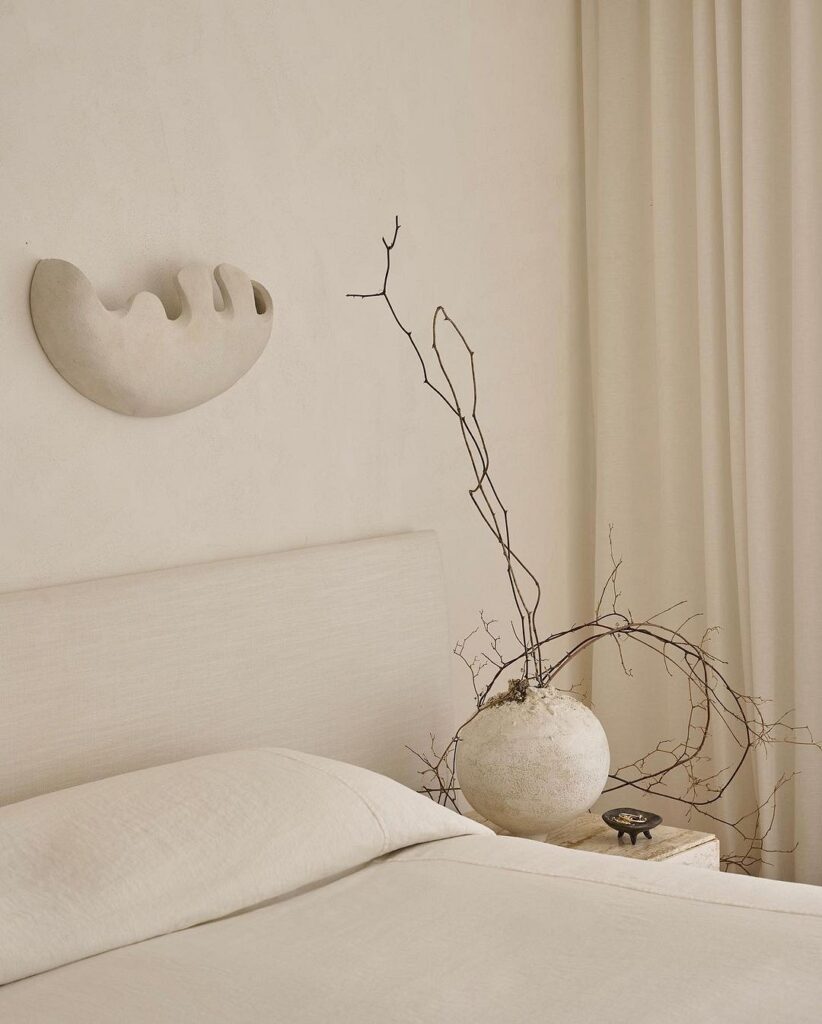
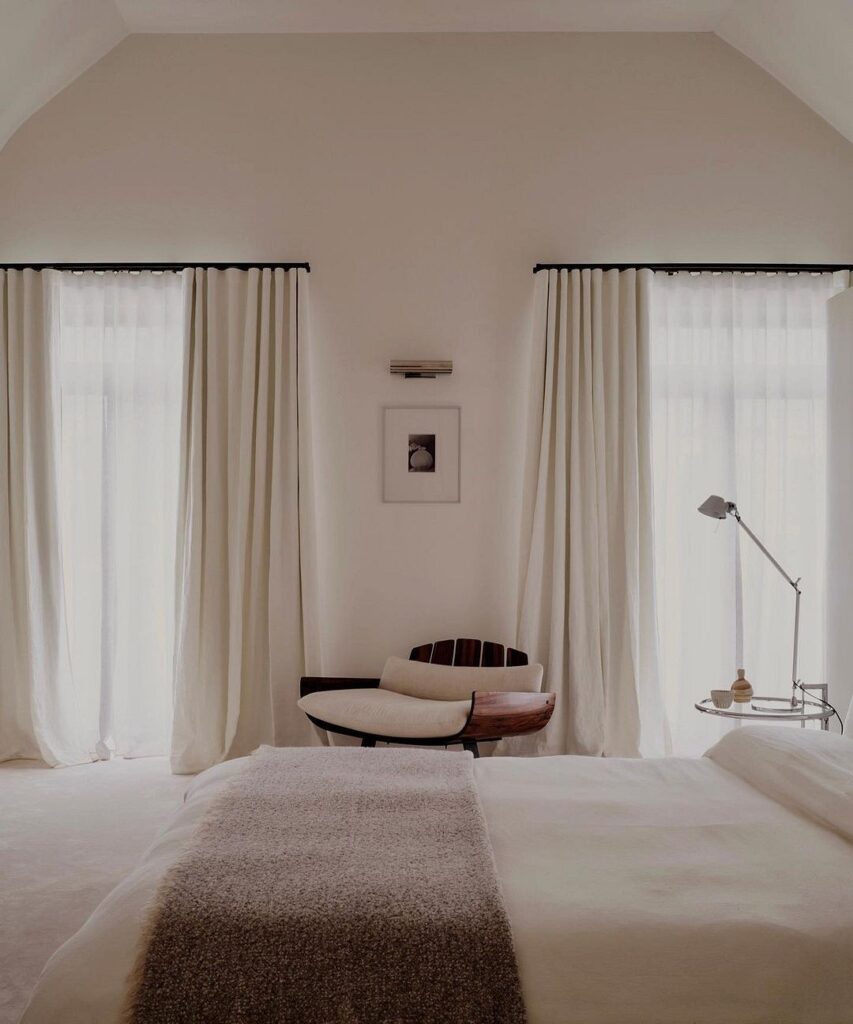
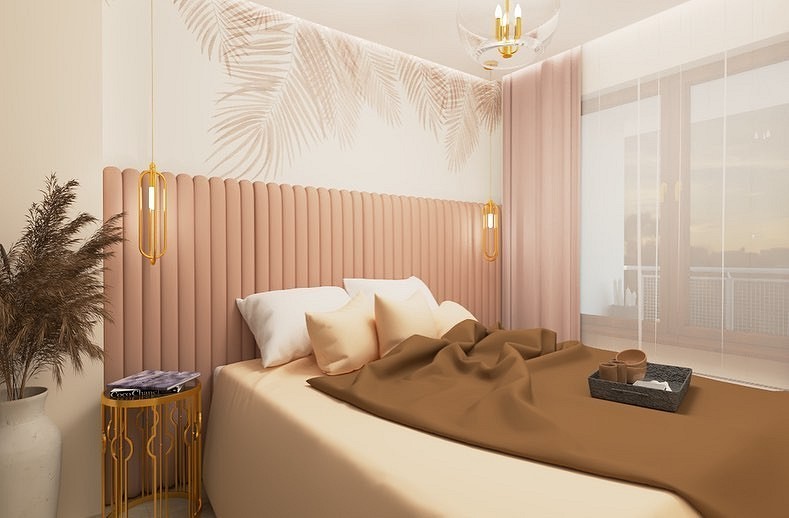
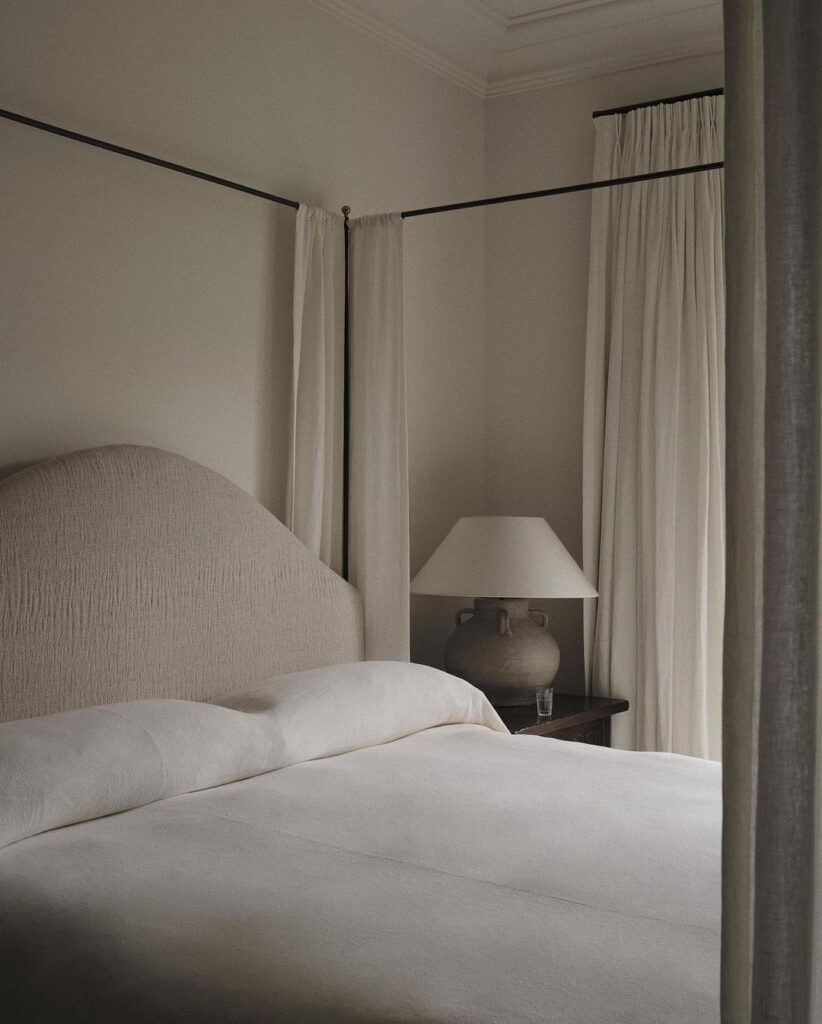



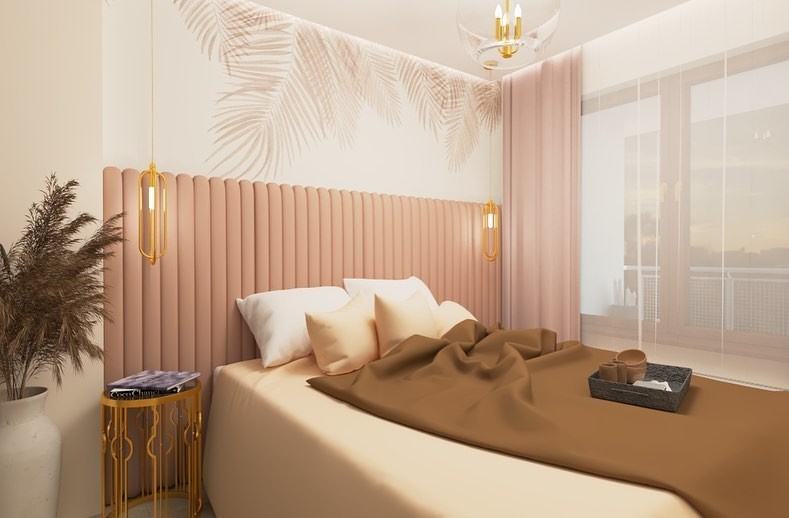
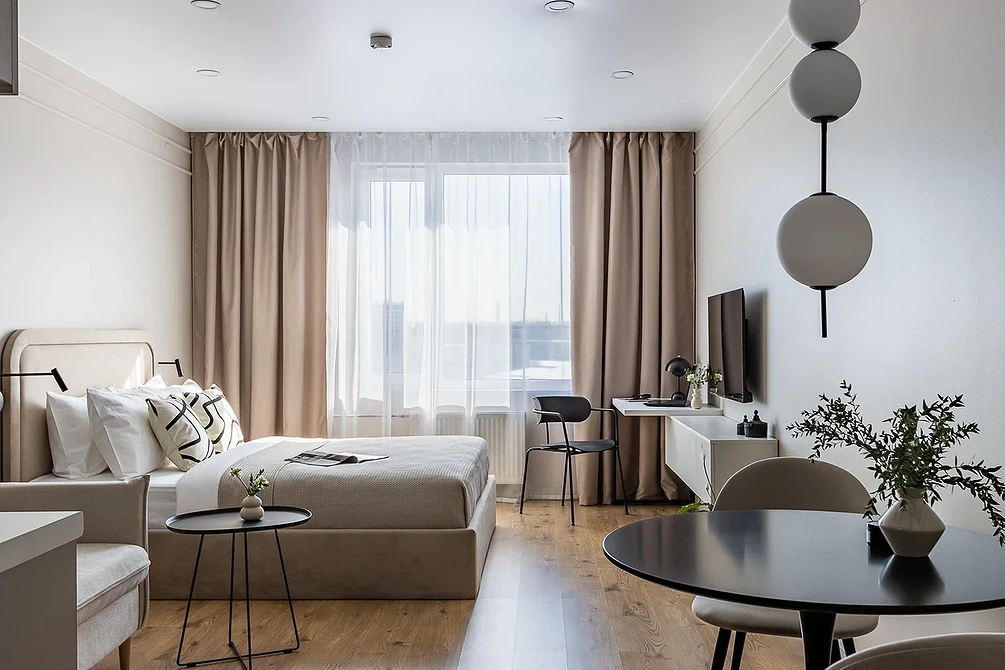
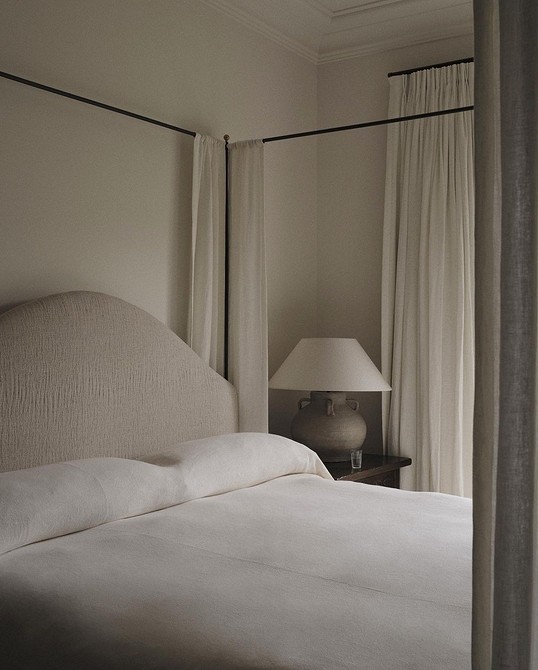
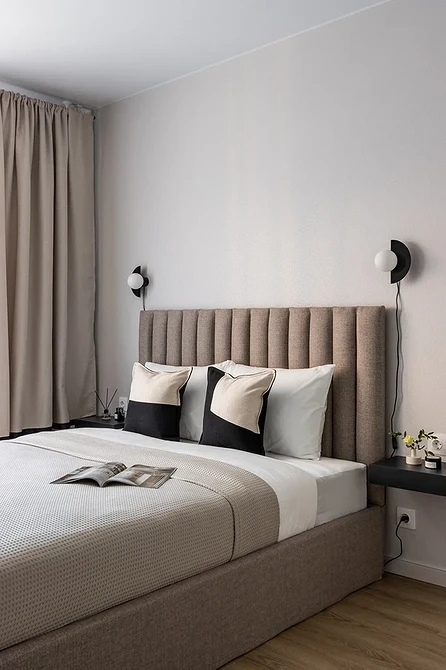
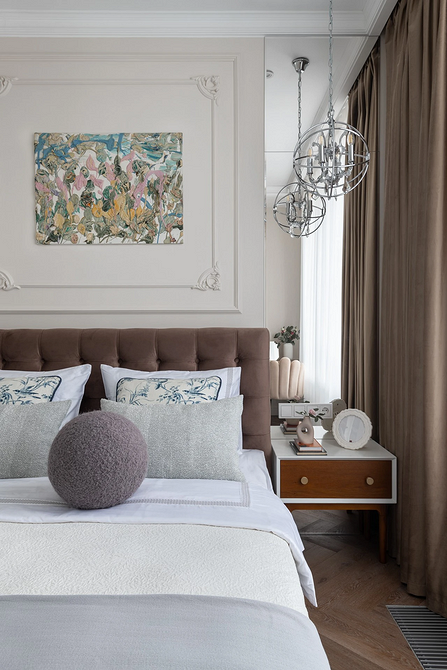

Pros and Cons
Beige has many virtues that make it worth loving. But there are also downsides, especially when it comes to an interior entirely in this shade.
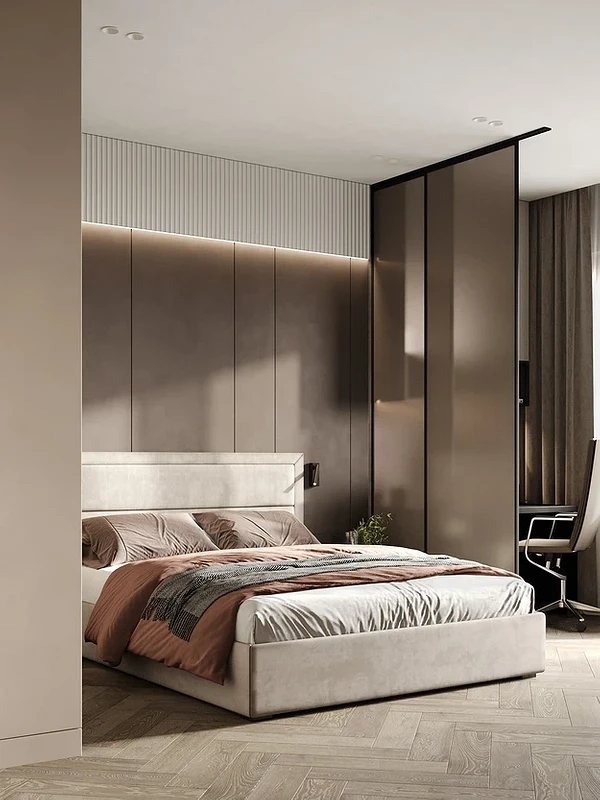
Advantages
- Makes the sleeping area cozy and conducive to full rest.
- The lightest shades (ivory, cream, dulce de leche) visually make the room wider and more spacious.
- Beige suits many interior styles and successfully combines with almost all colors of the spectrum.
- It becomes a good background for bright details and will not compete with them for attention.
- A beige-style bedroom looks neutral: this color is easy and pleasant to look at, so it won’t start to irritate, even years after renovation.
- For north-facing rooms, it makes them warmer and more light-filled.
- Beige excellently masks defects of walls and floors: with it, small skewness, dents, and unevenness will be unnoticeable.
- Finally, cream never goes out of fashion for decades, so a setting in such a palette will always be relevant.
Disadvantages
- Boredom and unexpressiveness when there’s too much of it. Therefore, a beige bedroom interior is often diluted with other paints or color accents.
- The trickiness of this color’s shades is that they can drastically change depending on the lighting: just switch from a ‘warm’ bulb to a ‘cold’ one (or vice versa), and the room turns from elegant to old-fashioned.
- Beige with a yellow tint can look stale. Therefore, for the bedroom, either the lightest tones are chosen or cooler ones.
- This setting does not tolerate leopard and zebra prints: in the company of wheat and cream colors, they turn the room into an African hunting lodge.
- In sunny rooms, such a color scheme can create a subjective feeling of stuffiness. To avoid this, details in blue or gray colors will help.
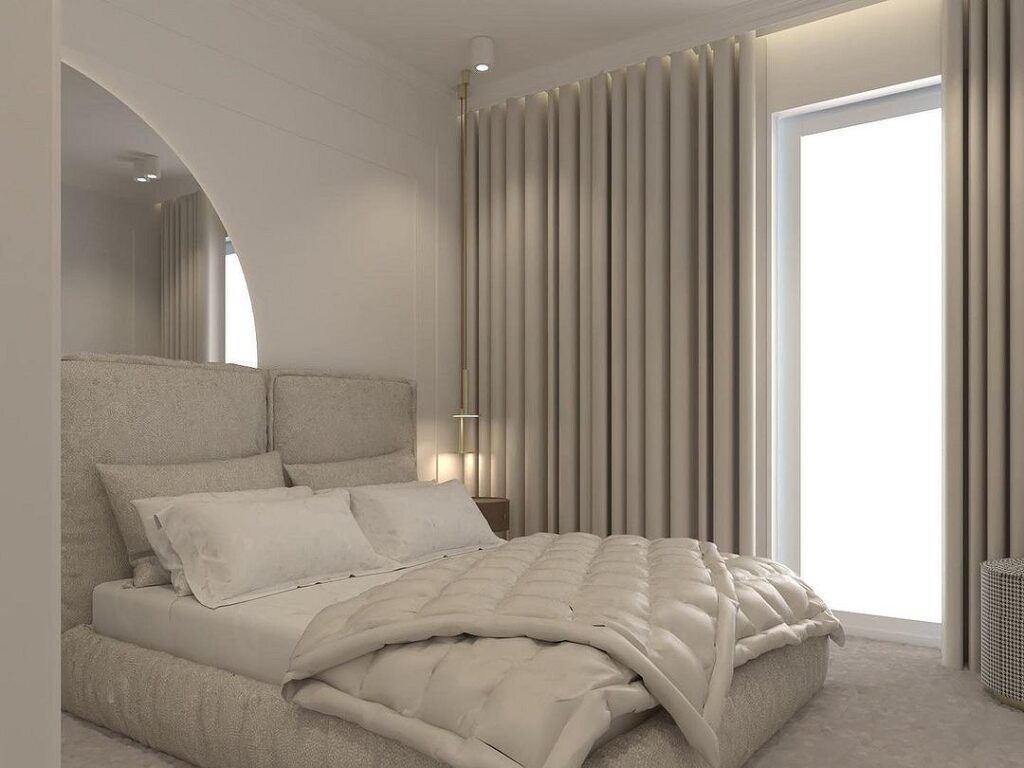
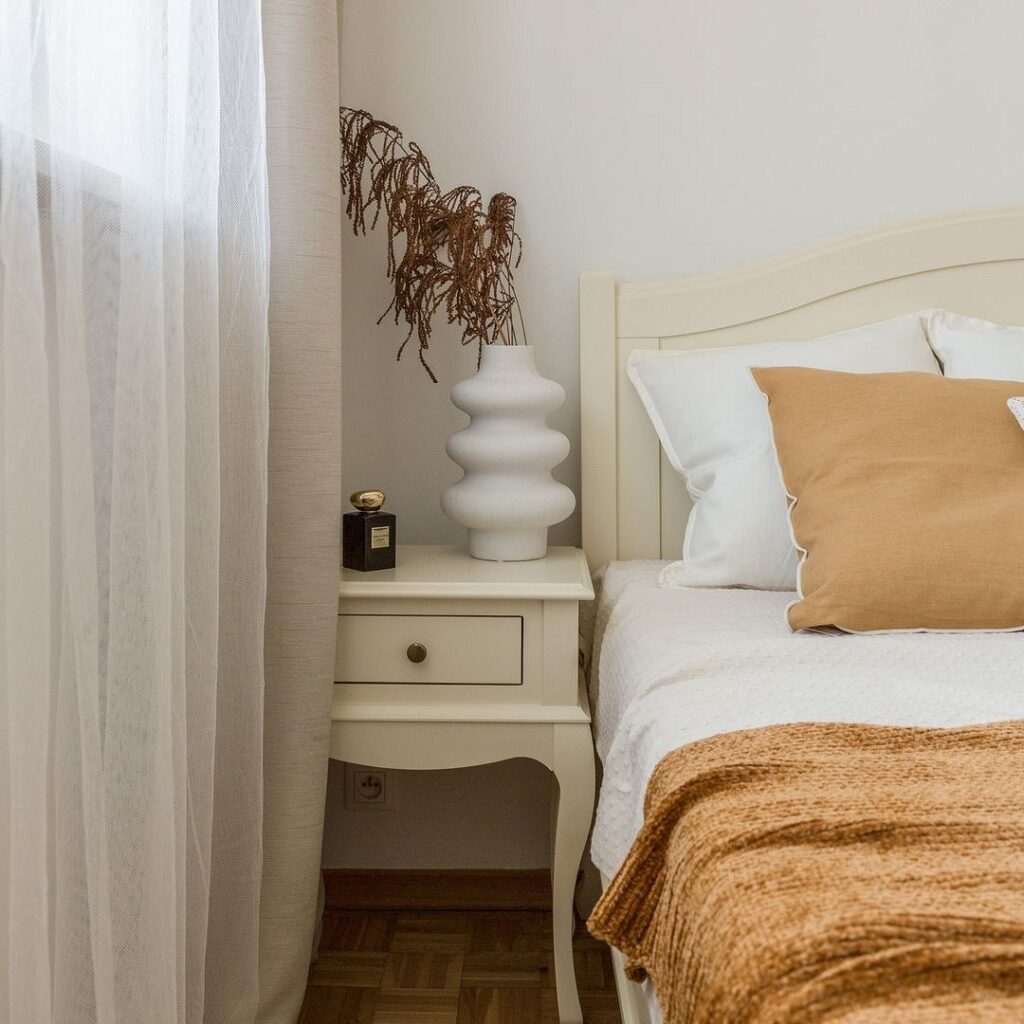
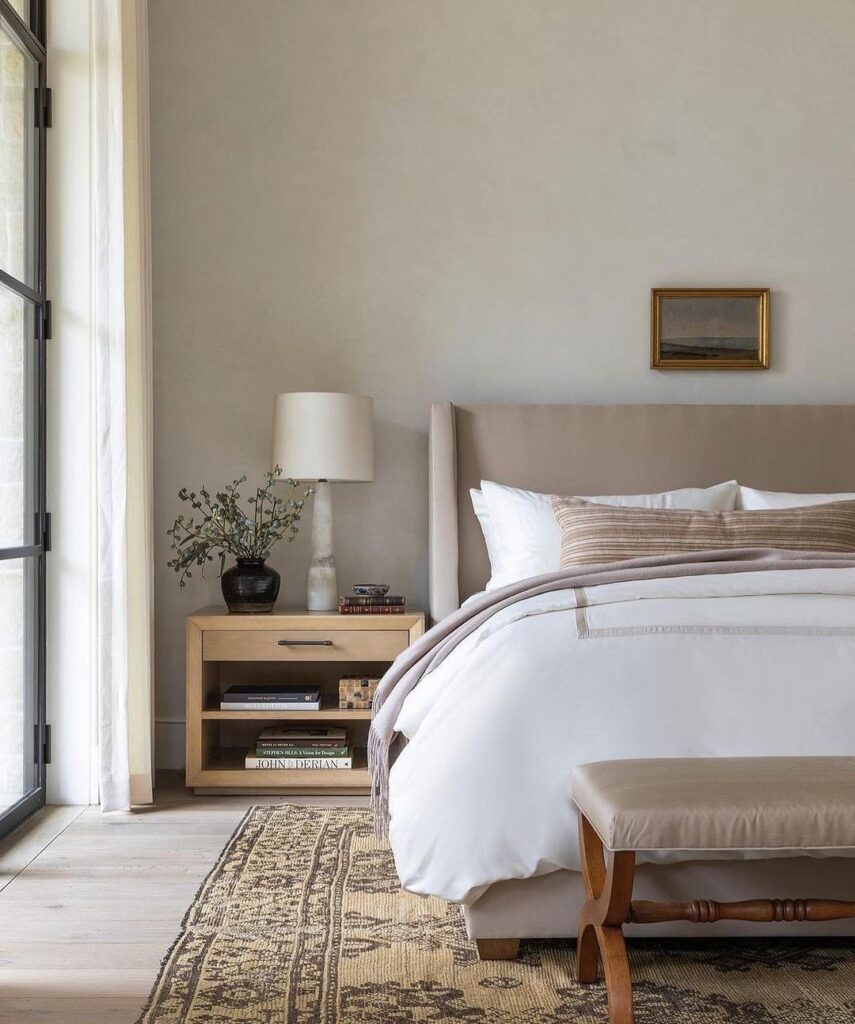
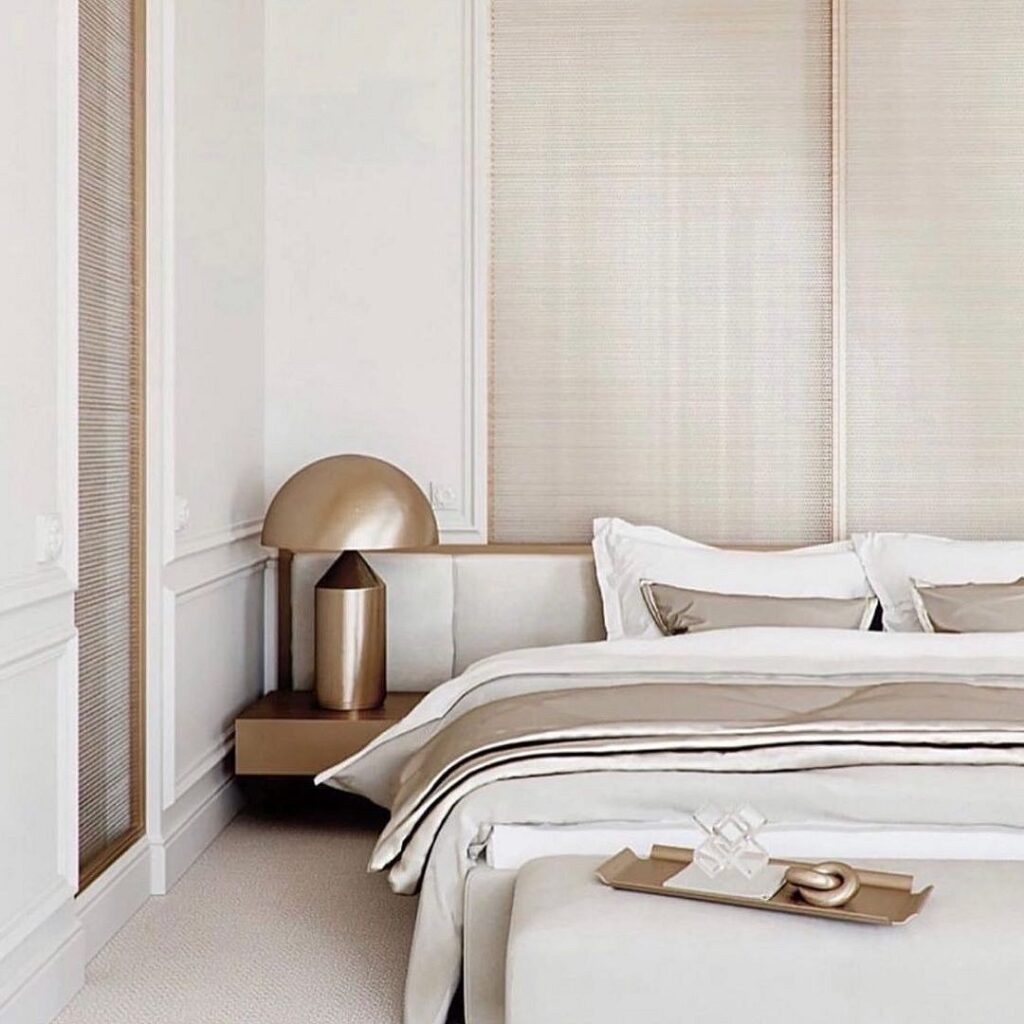
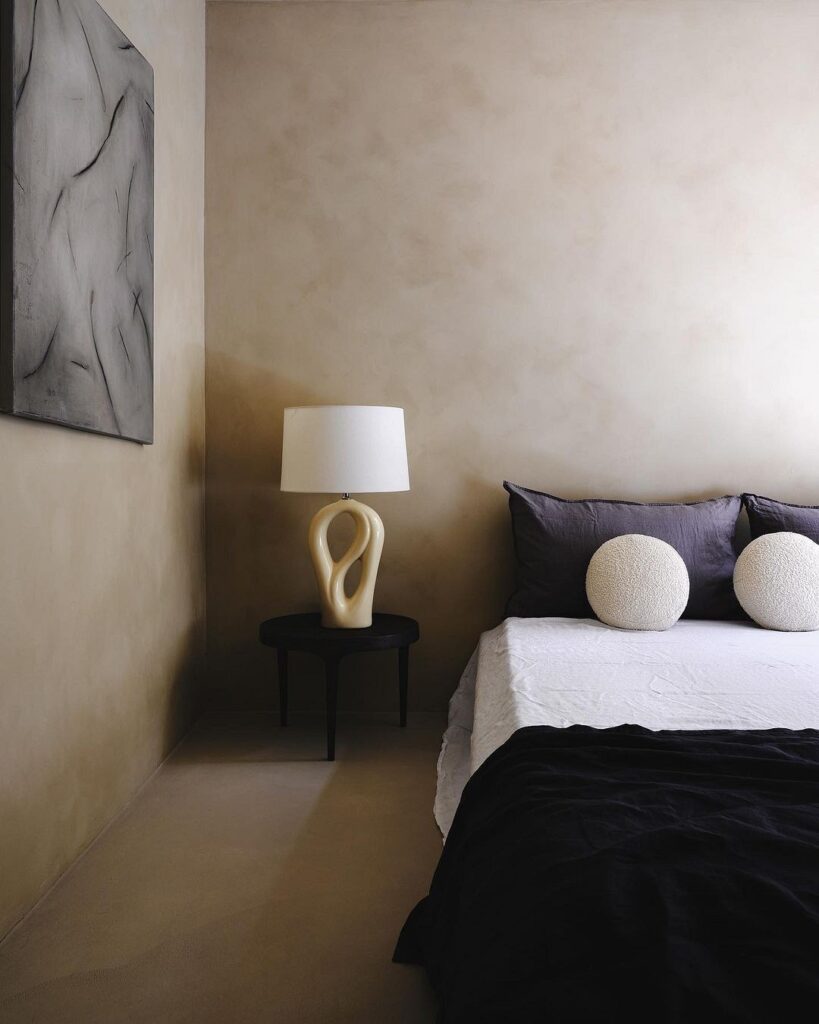
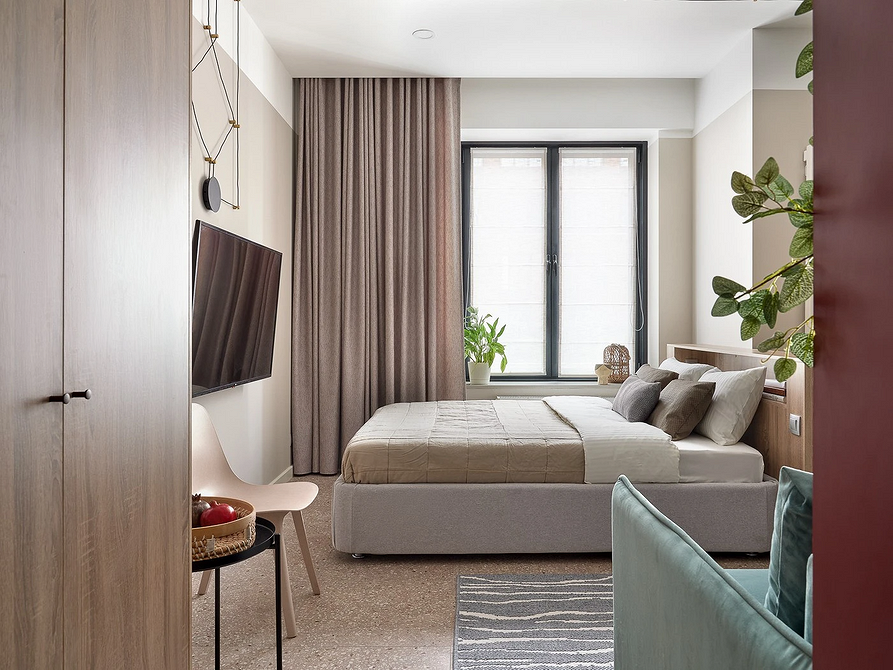
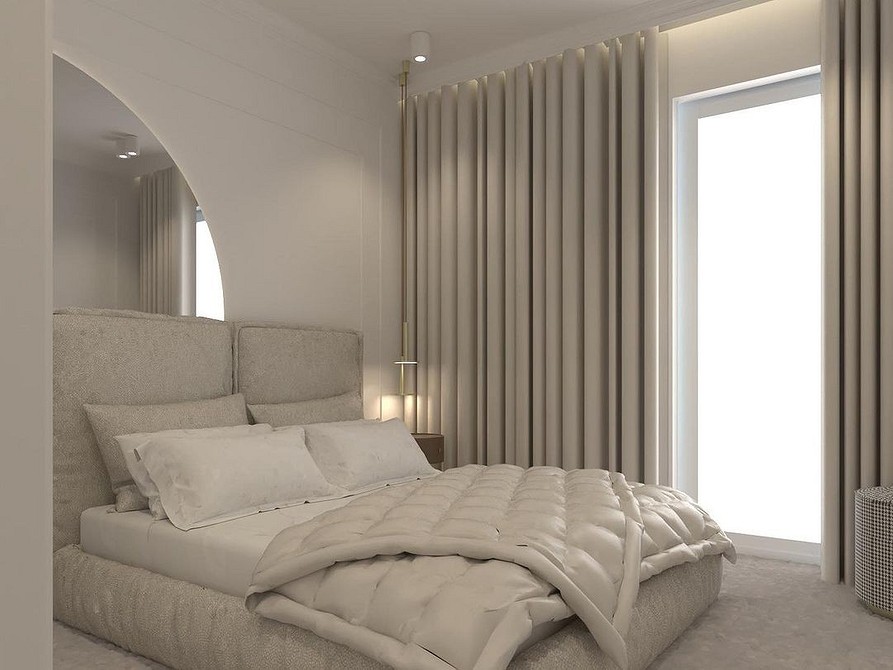
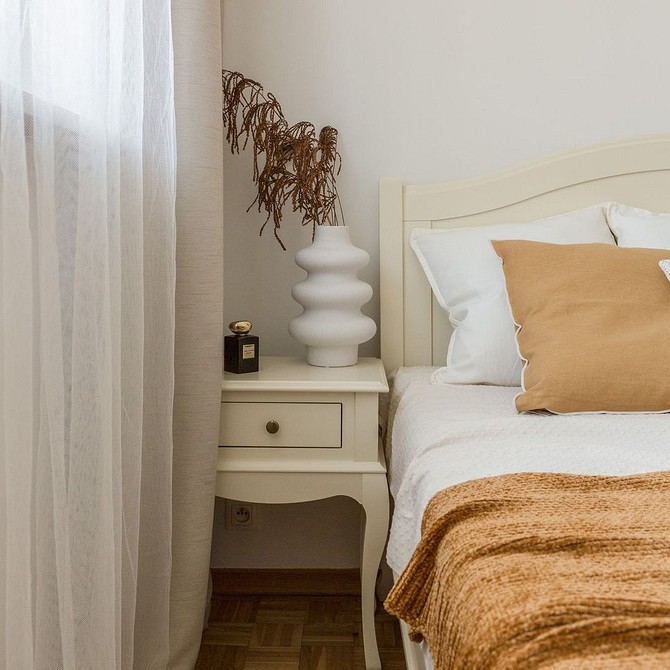
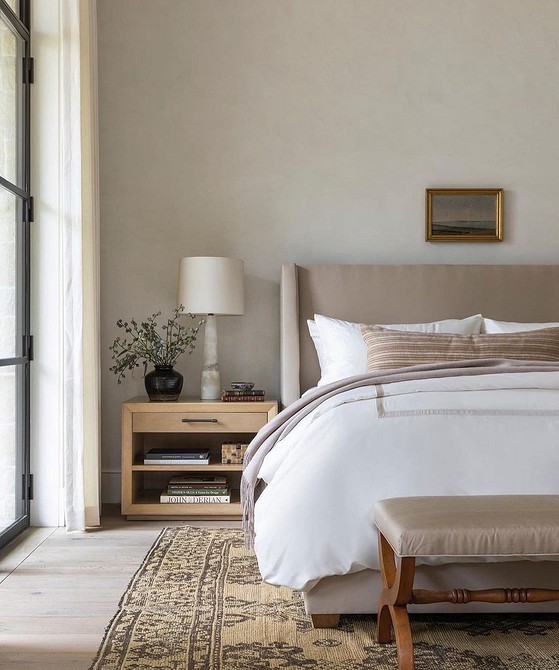

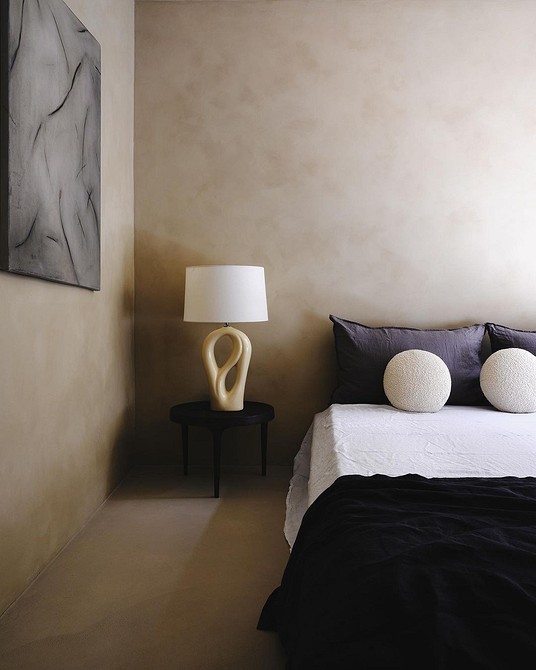

Colors that Pair Well with a Beige Bedroom
Neutral cream pairs well with most colors, but there are some proven combinations that always work.
Gray-Beige Bedroom
Any shade of gray makes beige even more austere and noble.
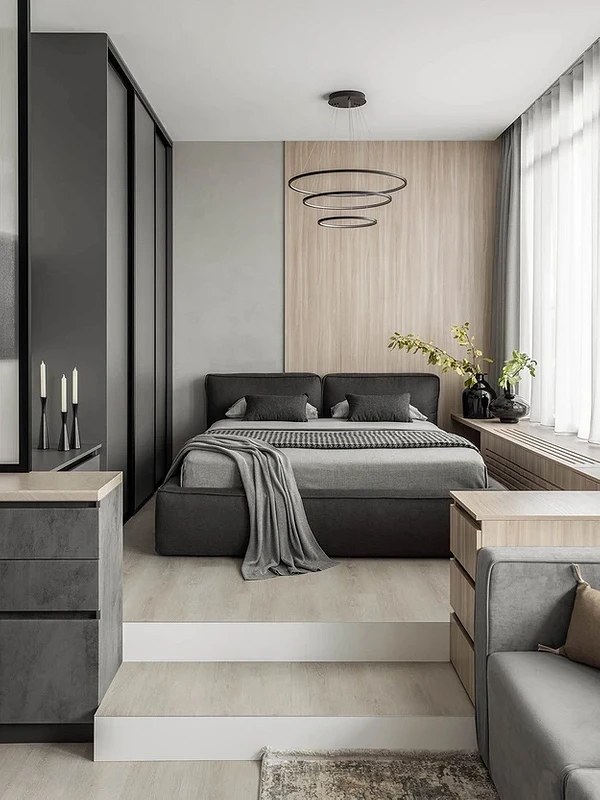
The room becomes aristocratic and cool, with no feeling of stuffiness. A gray-beige bedroom interior is also a nod to fashion: the combination of these tones is so popular that it even got its own name “greige” (from English grey+beige). Since both tones are neutral, they can be boldly complemented with decor in bright colors: sunny yellow, grass green, sky blue, and others. Muted colors like khaki, slate, or terracotta will also be appropriate.
White
A white-beige bedroom is absolute classic. After all, the classic interior style implies the use of these colors.
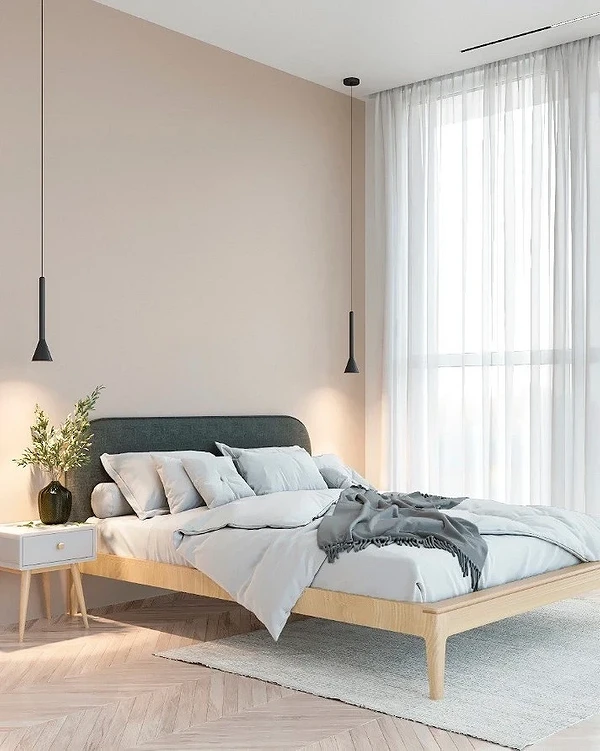
This combination is often found in luxury hotels: it always looks rich and dignified. Moreover, beige with dazzling white creates a sense of cleanliness and freshness, which is very important for a sleeping area.
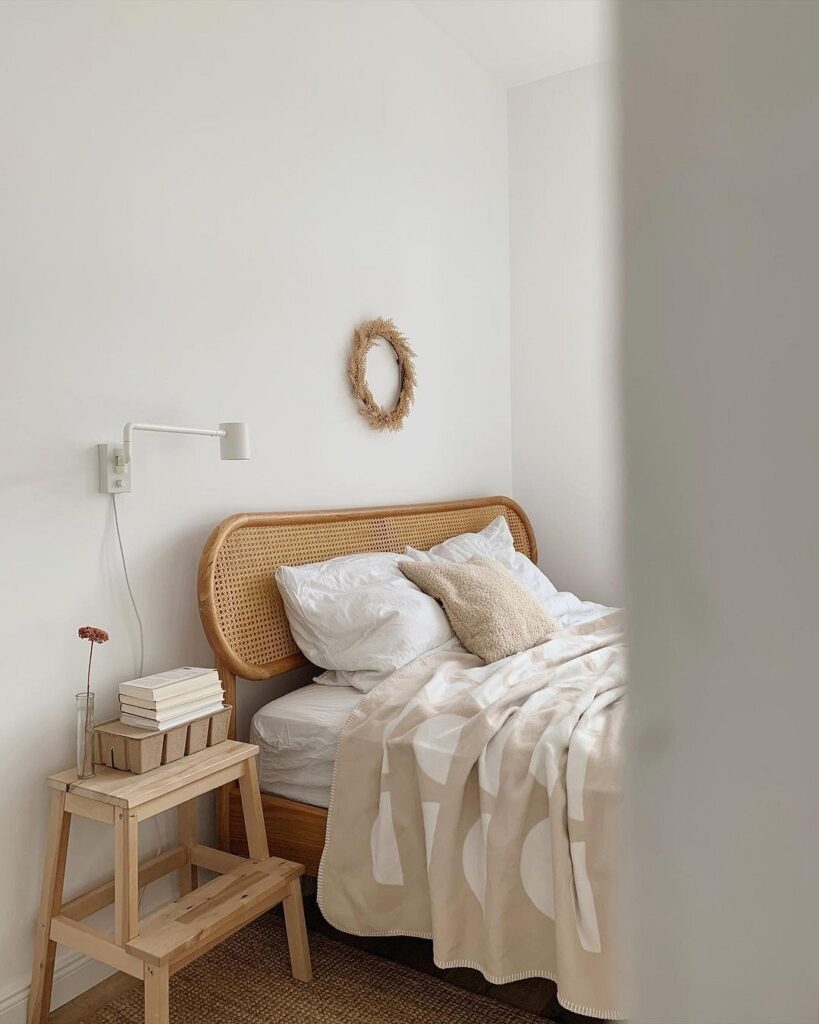
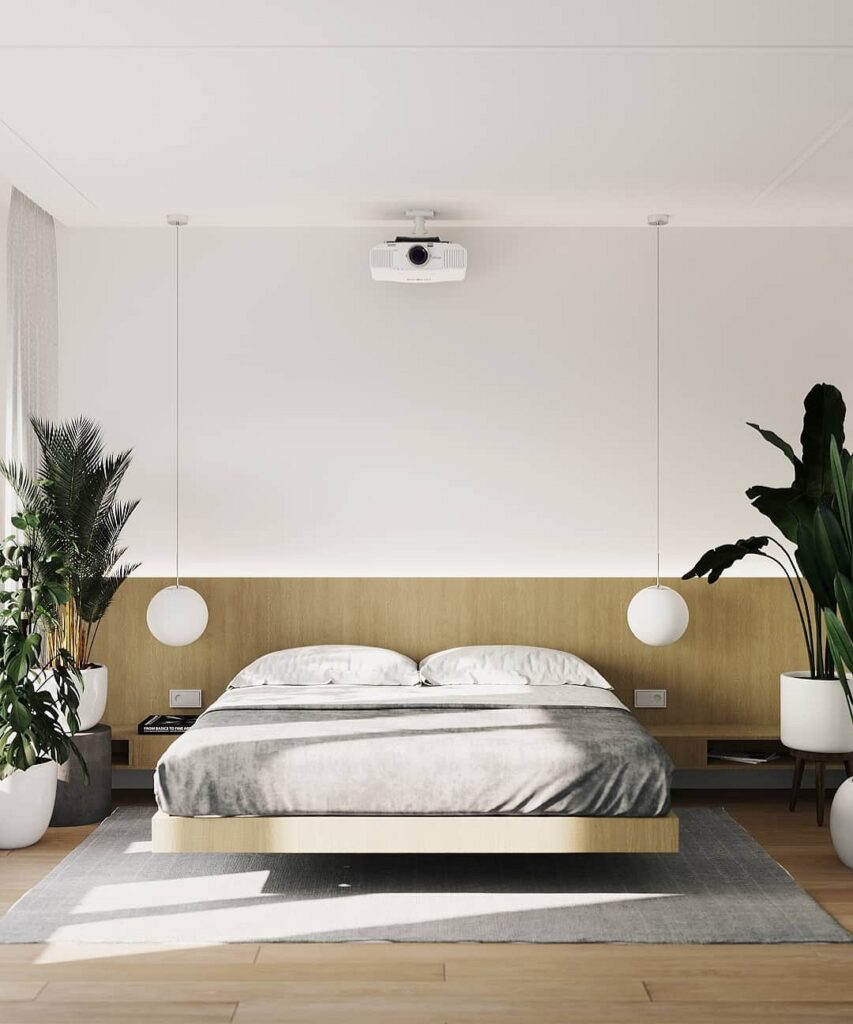
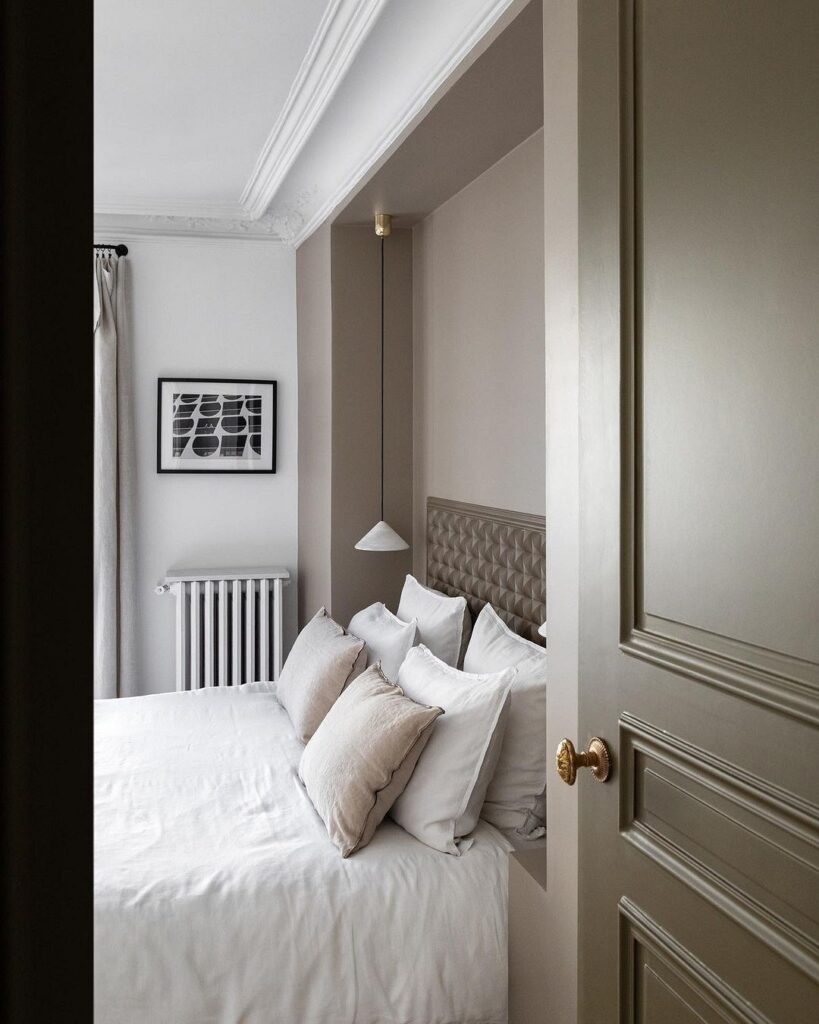
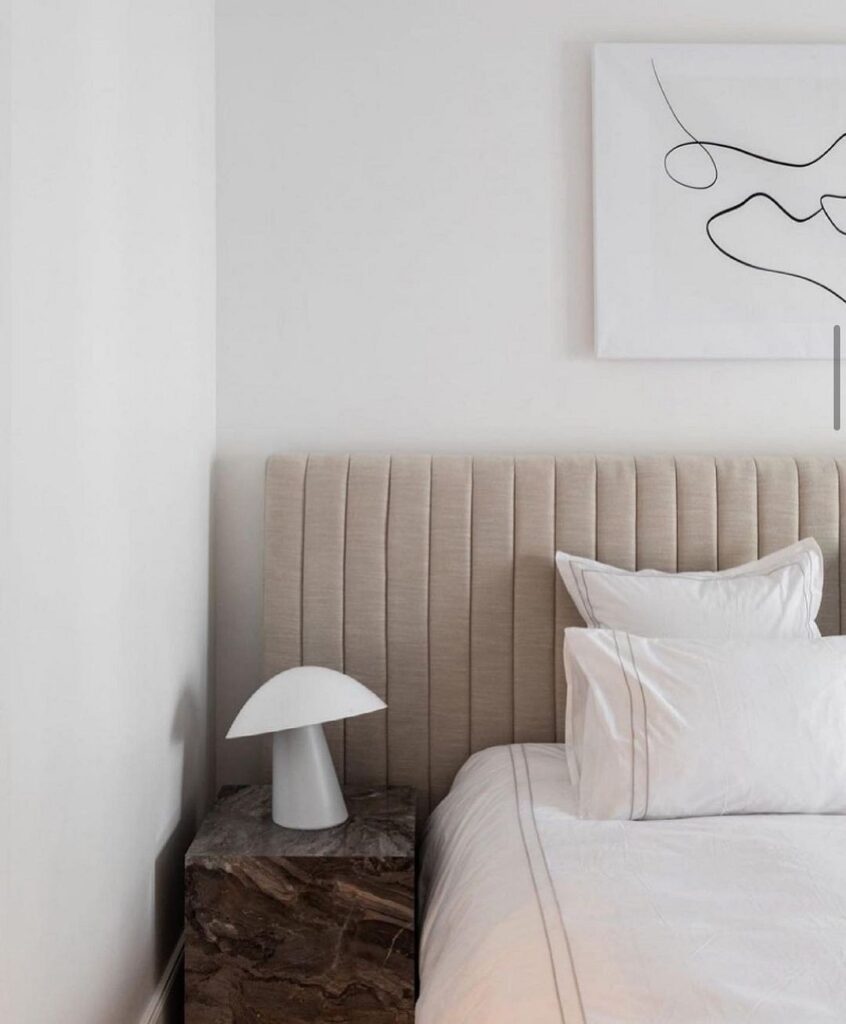
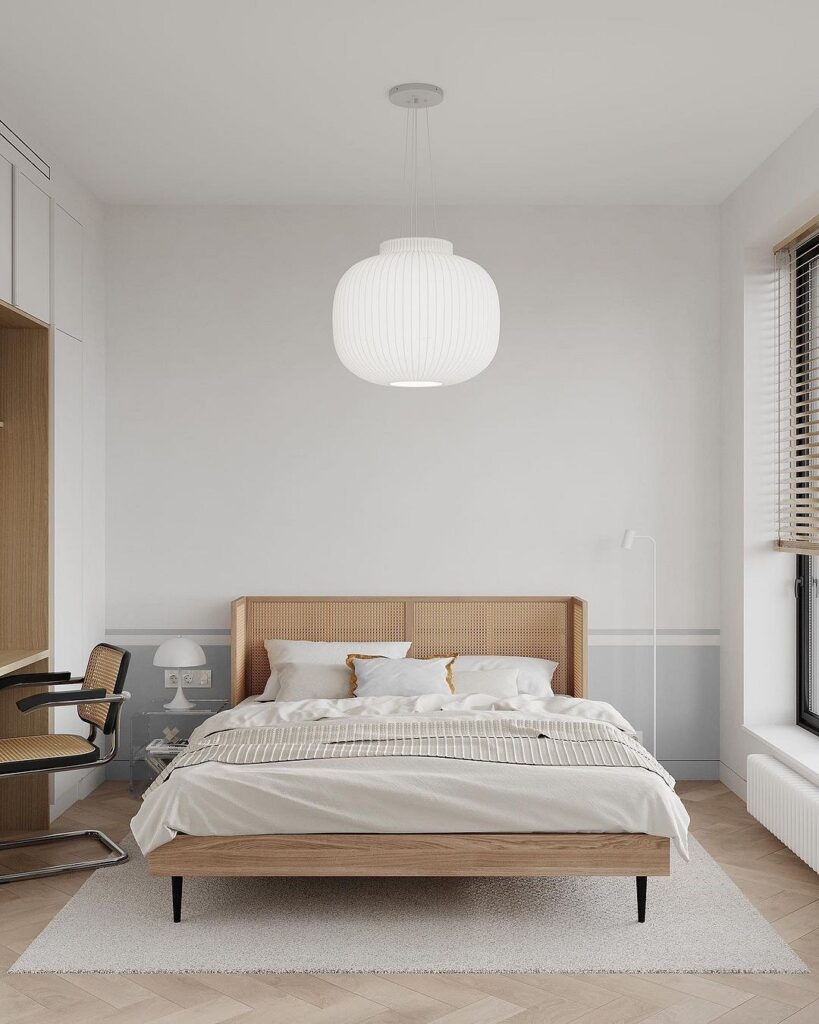
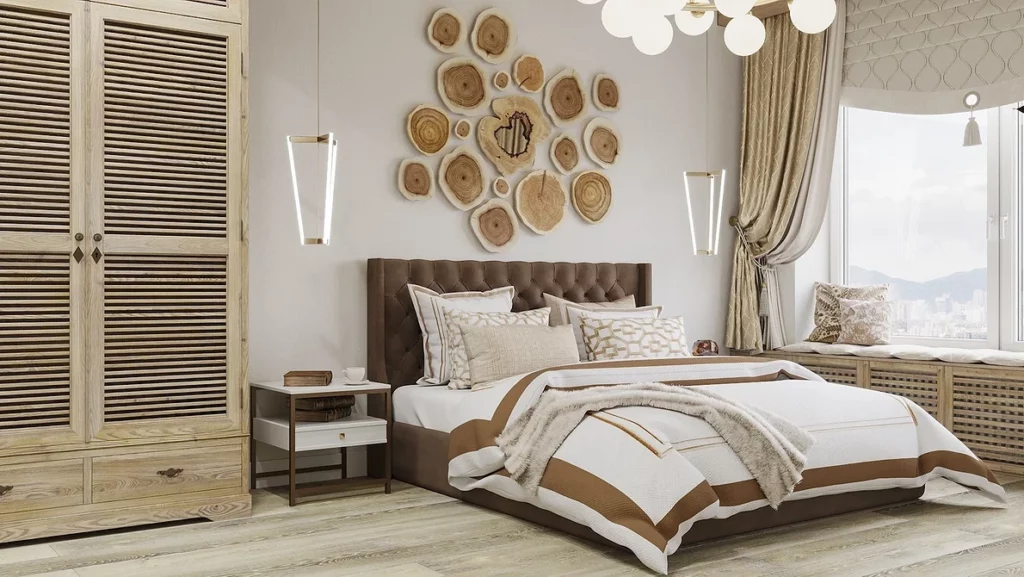
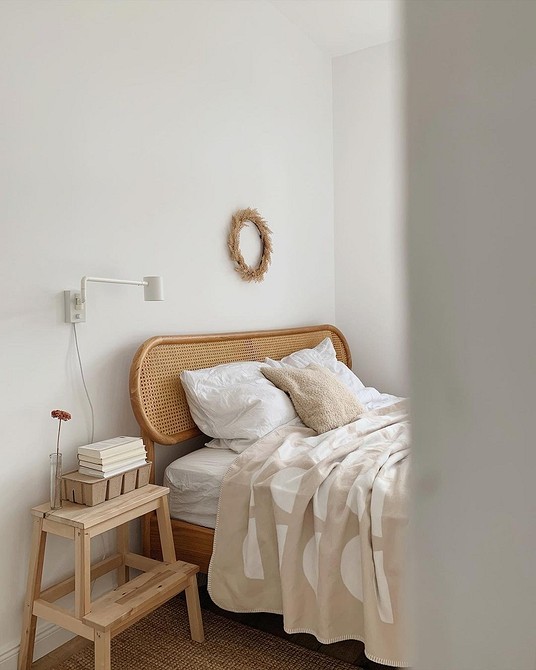
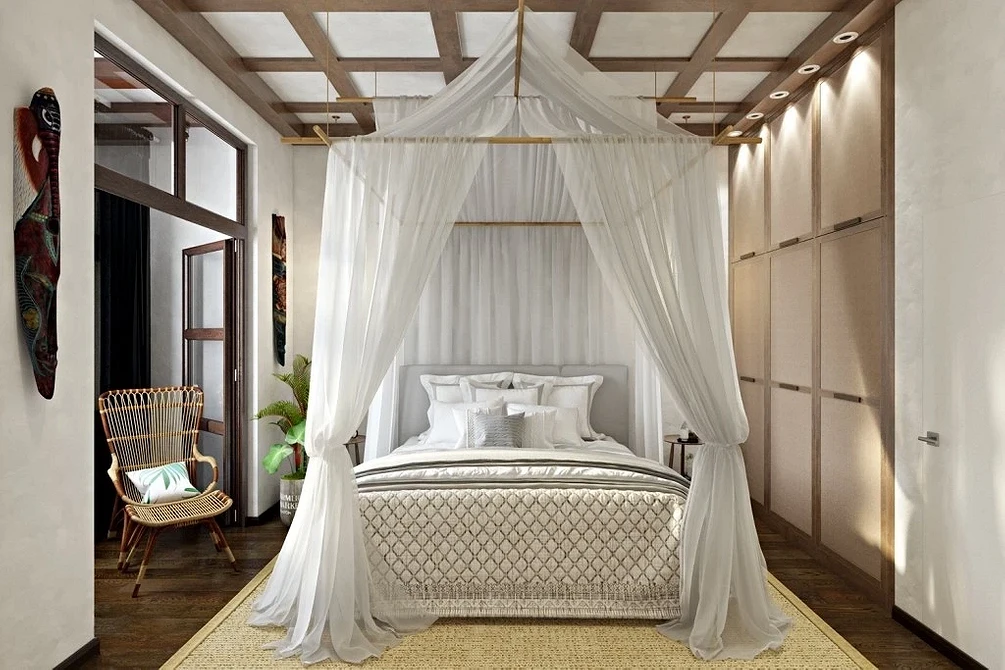
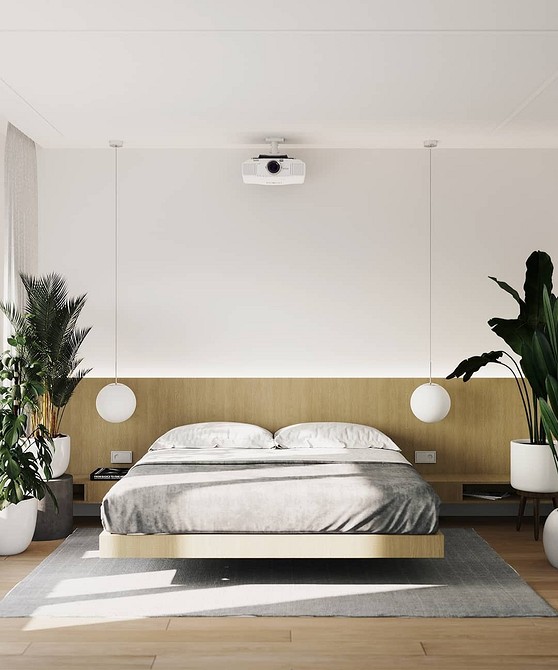
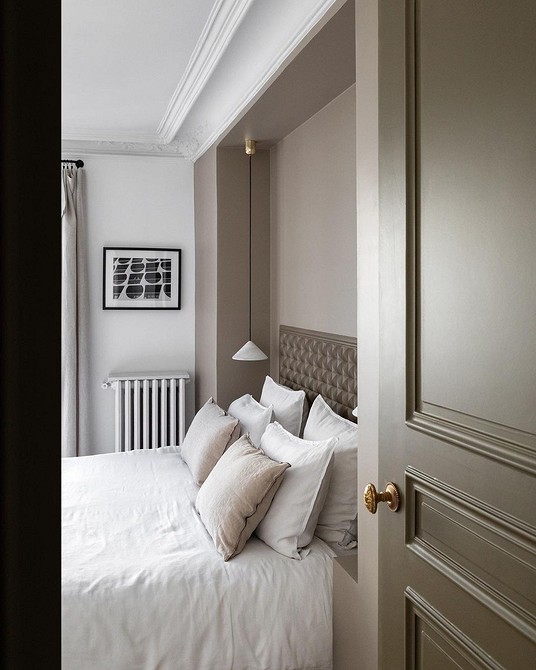
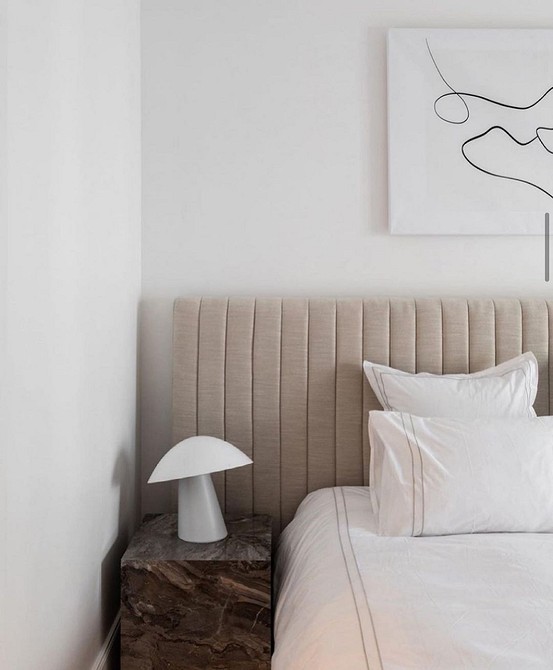

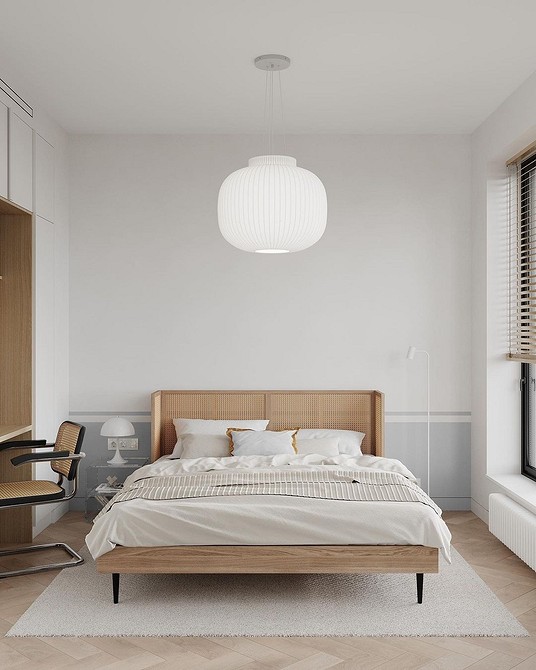
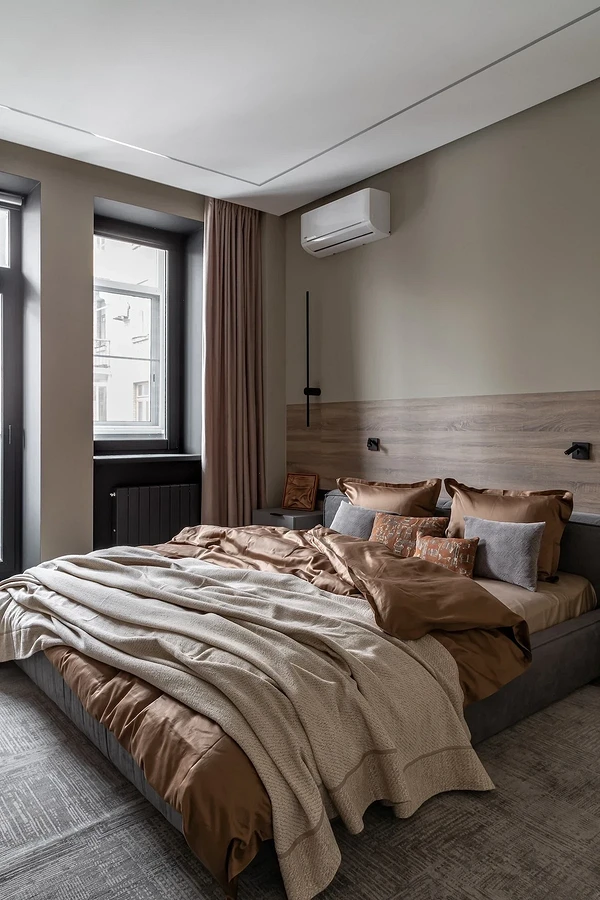
Brown
Looking at designer photos of bedrooms in beige tones, you can see that they are often complemented by darker variations of the same palette: chocolate, coffee, nutty.
Such combinations are always successful: tones of varying saturation and brightness create a soft contrast and add depth to the colors. A beige-brown bedroom possesses even greater coziness, which means relaxation before night rest will be maximized. Just don’t overdo it with this palette: in shades of cream and chocolate, it can be hard to wake up on a gloomy autumn morning. Then, it’s worth diversifying the interior with more invigorating shades: red, orange, turquoise, etc.
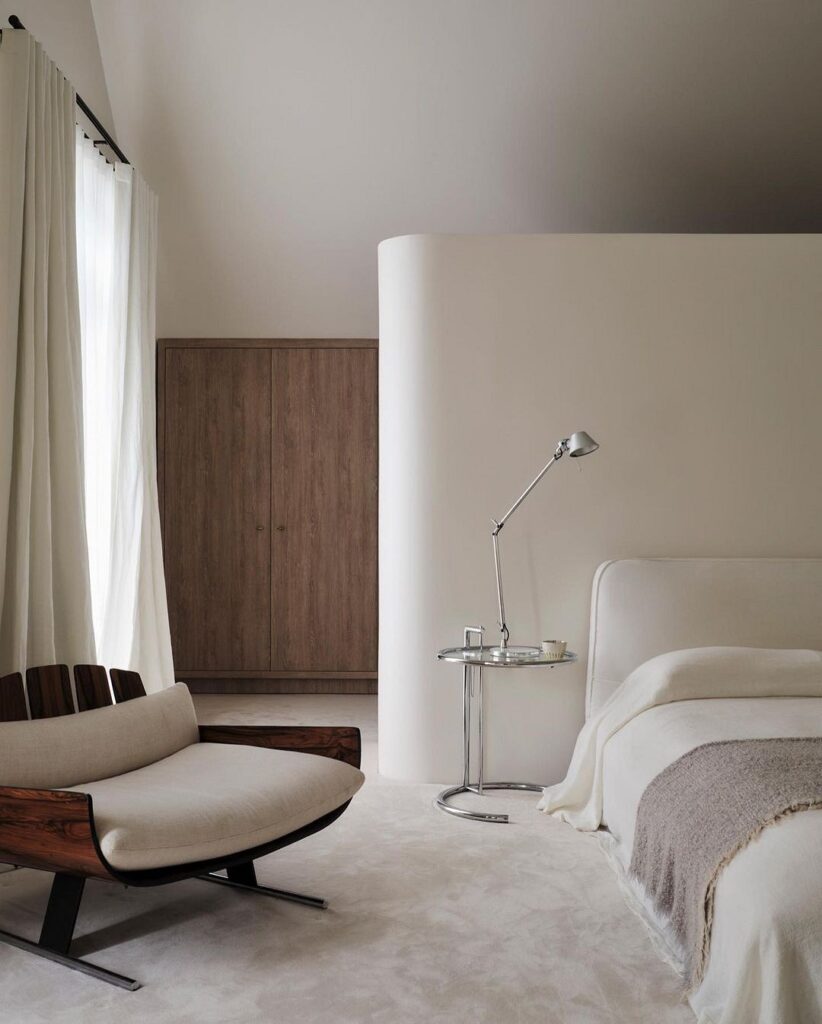
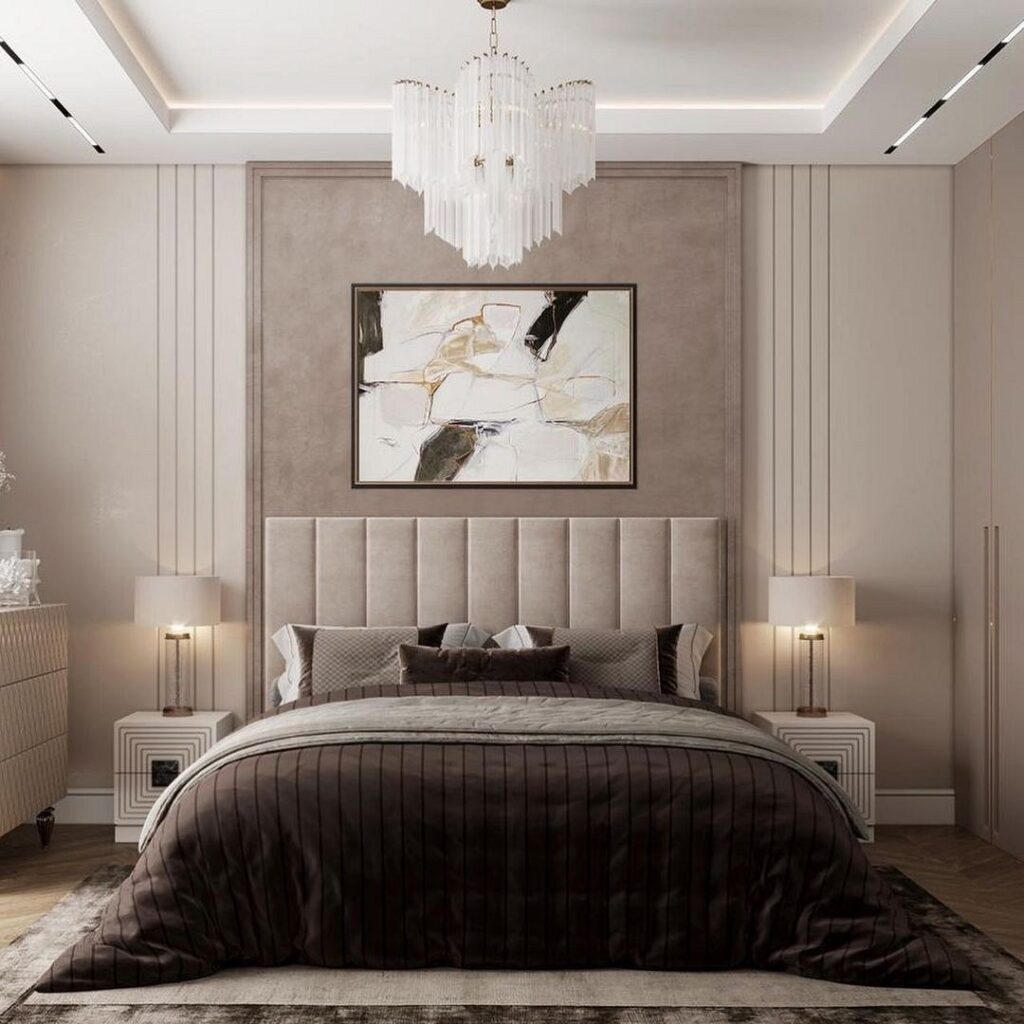
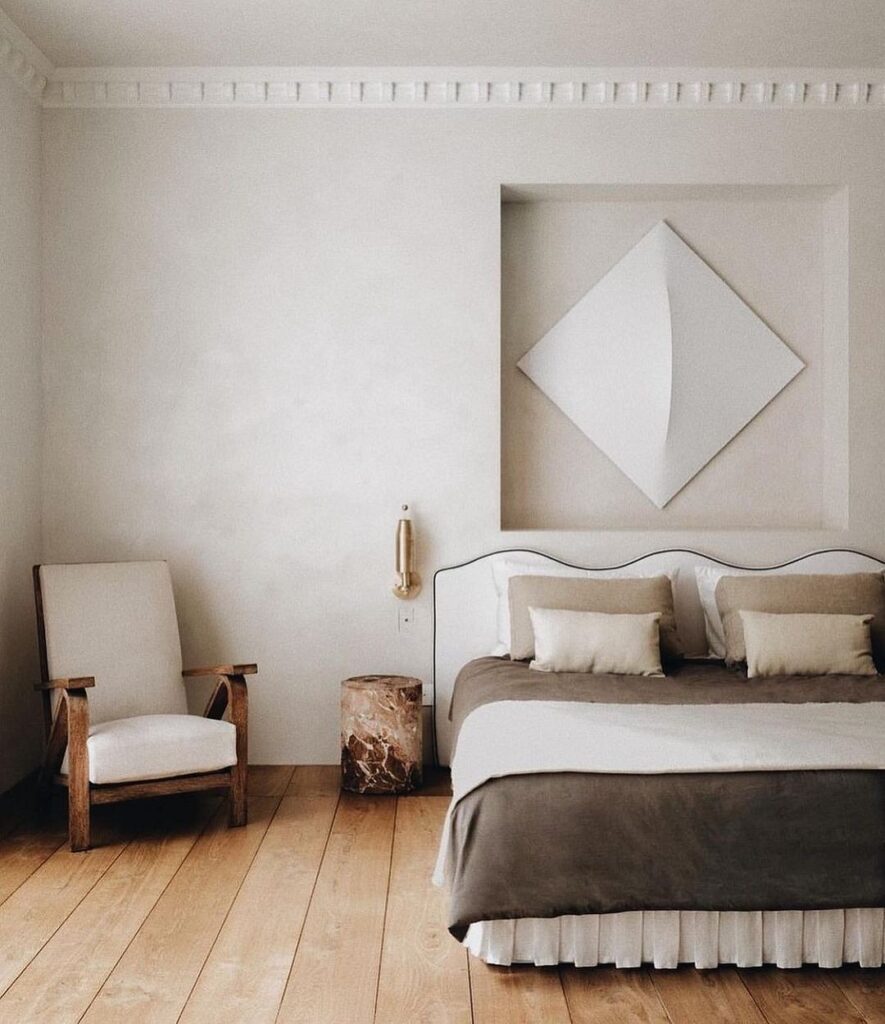

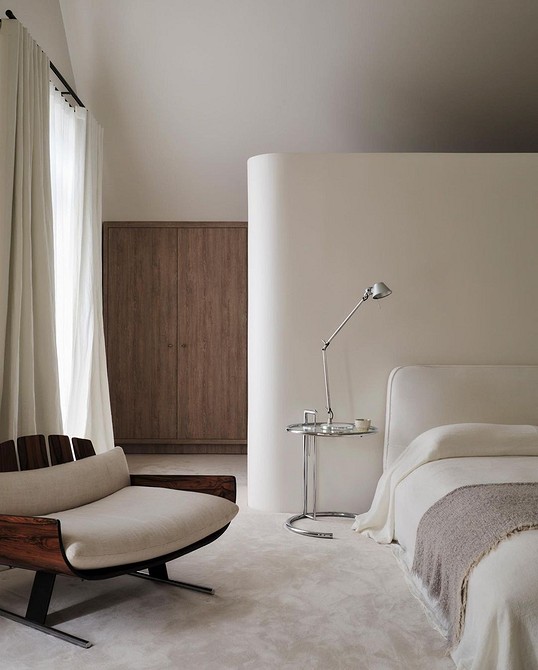
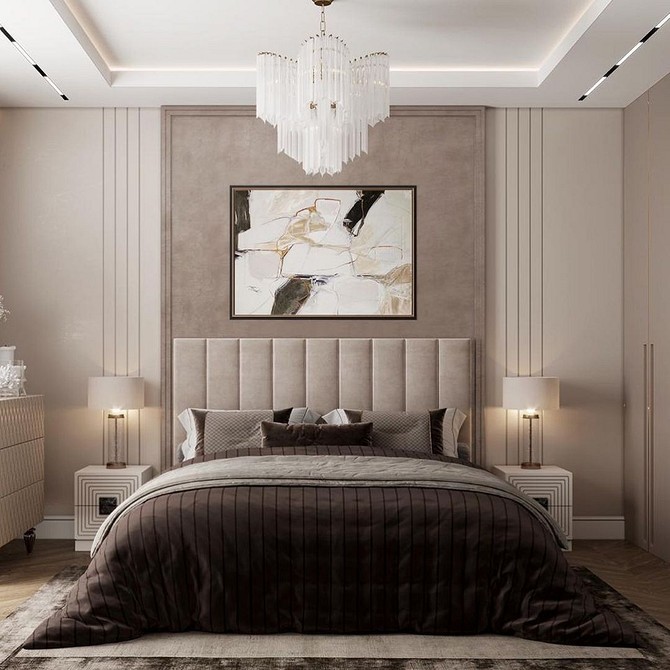
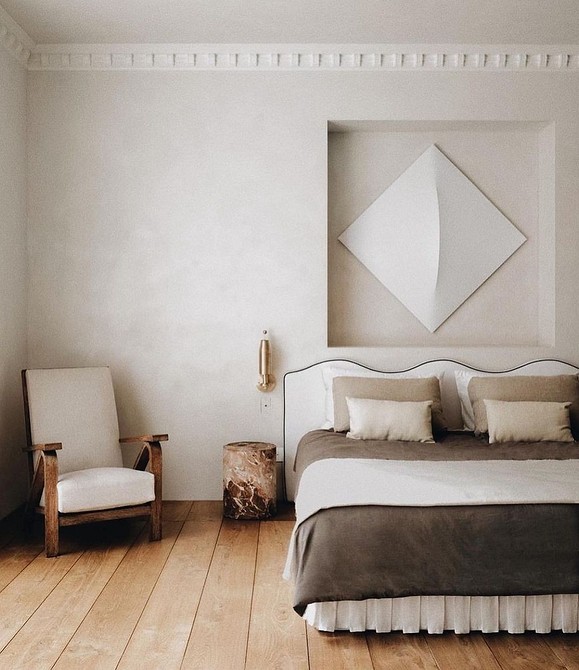
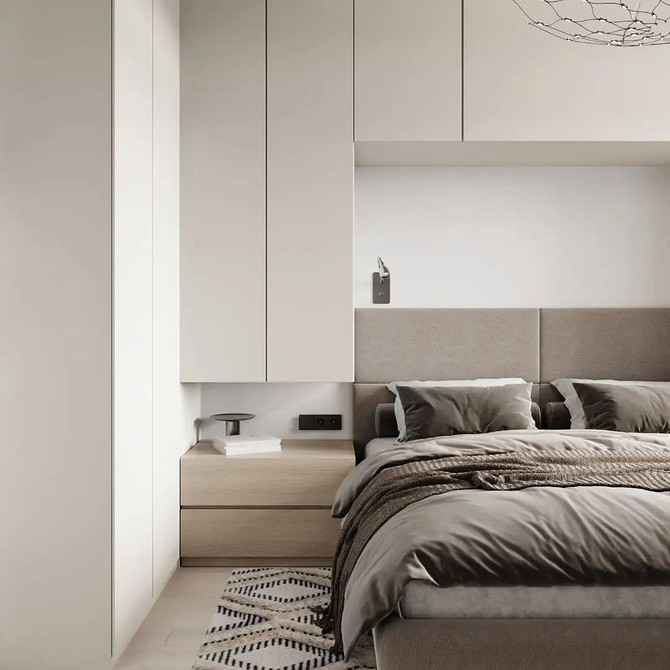
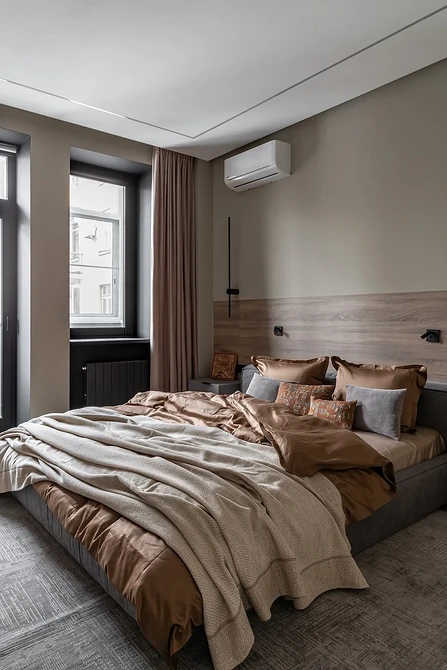
Blue
A bedroom in beige colors, shaded with light blue, looks refined and simultaneously romantic.
Beige and blue remind one of a deserted beach by the ocean — a landscape that evokes only pleasant feelings. To fully reveal the advantages of these shades, choose multifaceted and ambiguous tones: linen, seashell, peach, and grayish, forget-me-not or hyacinth blue.
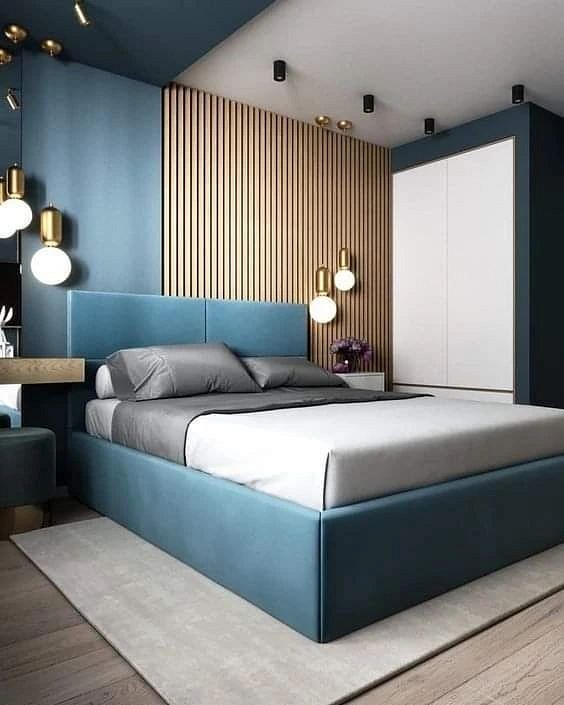
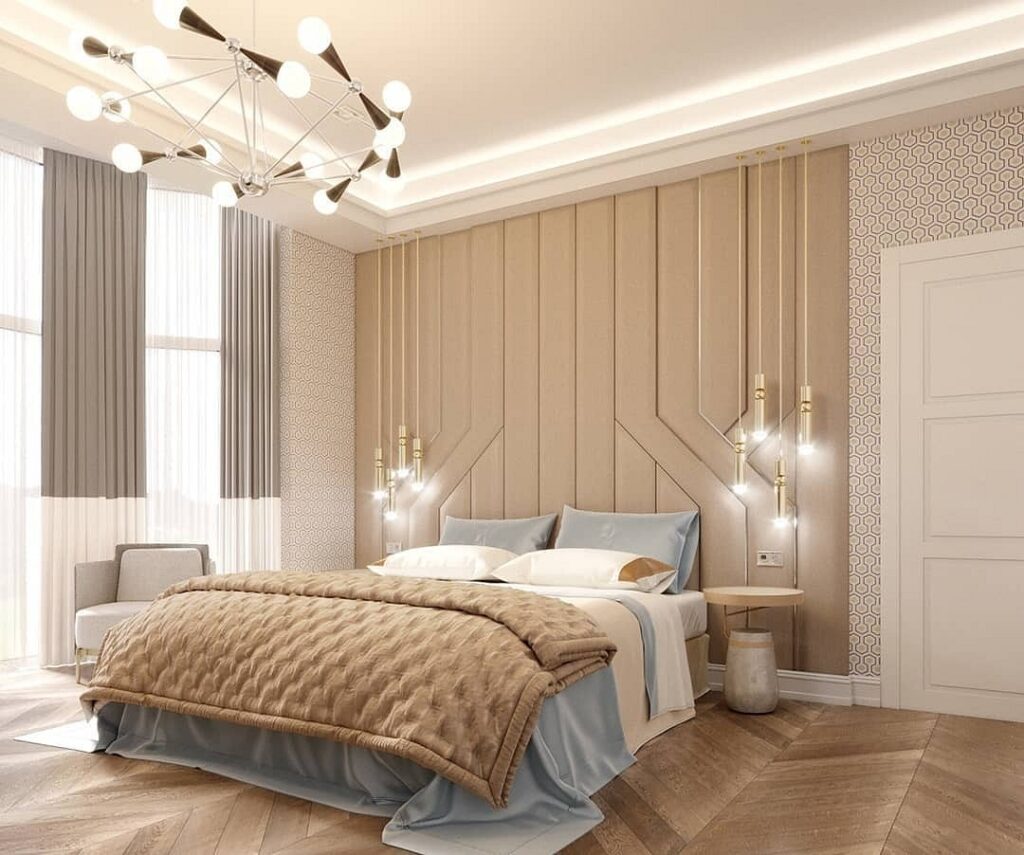
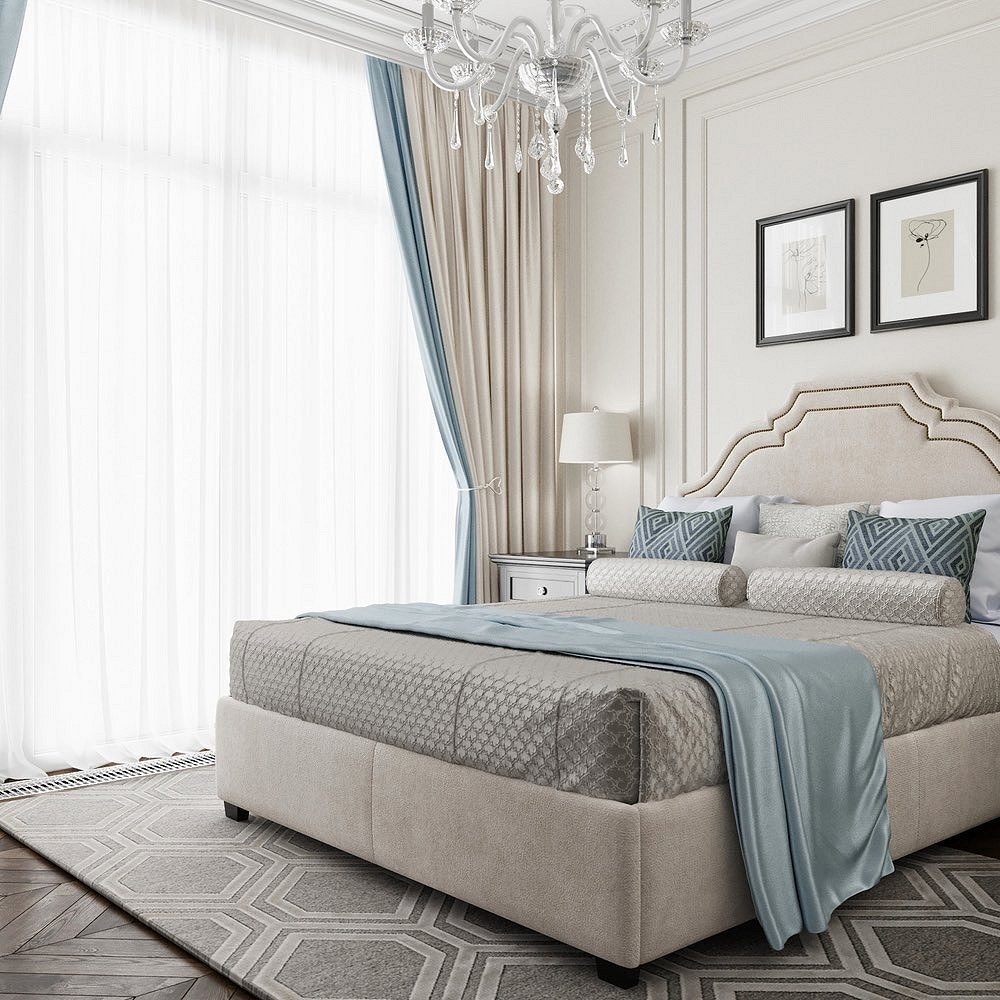
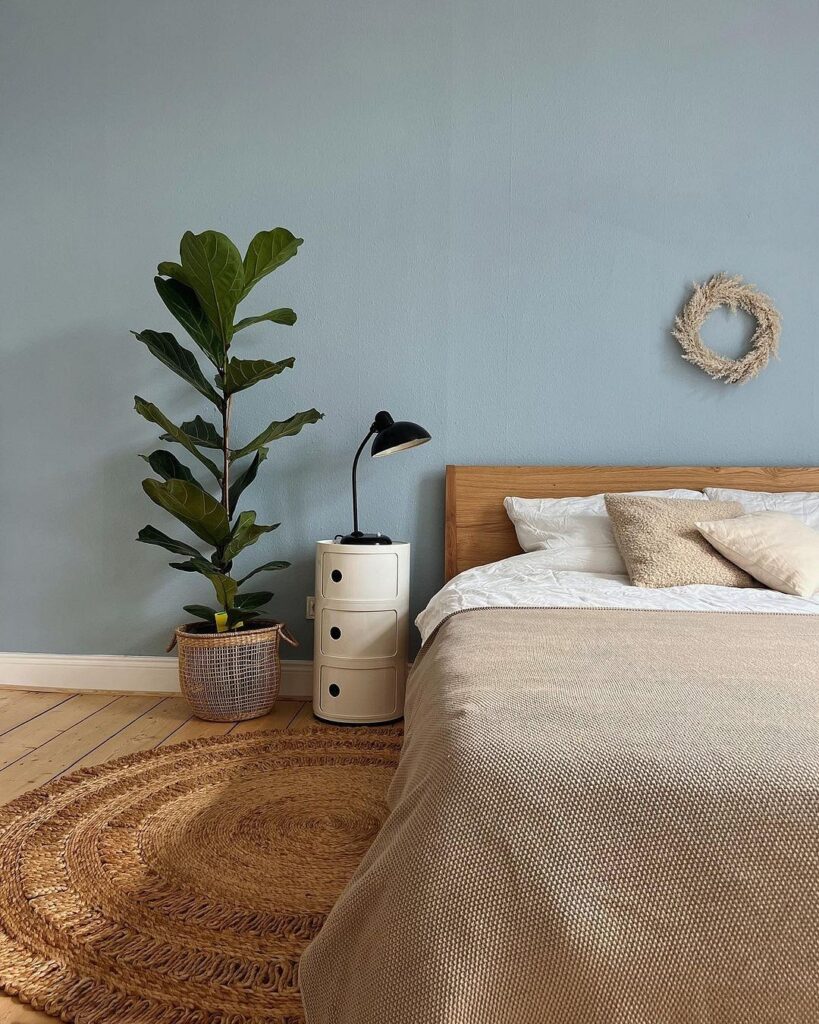
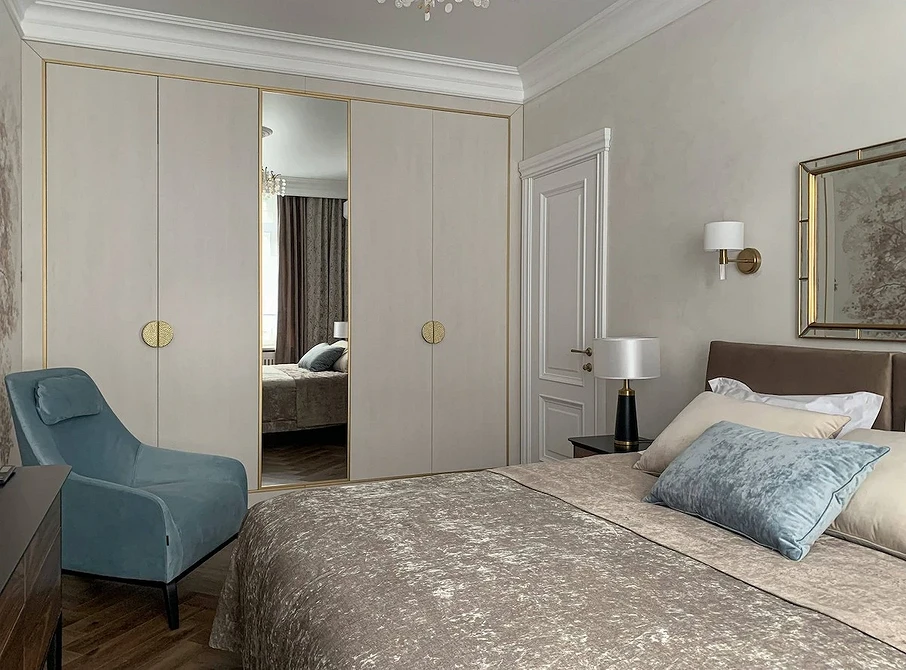
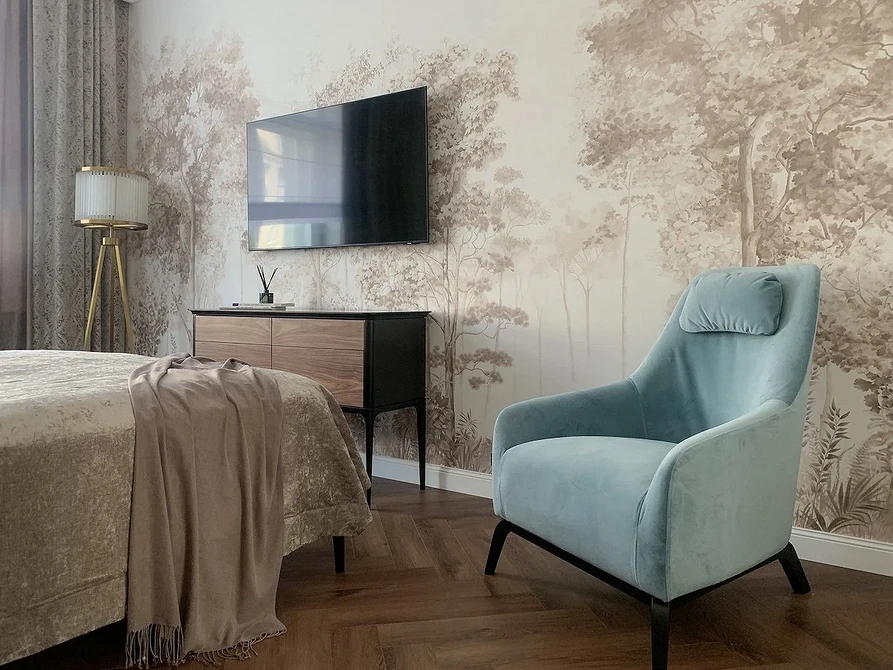
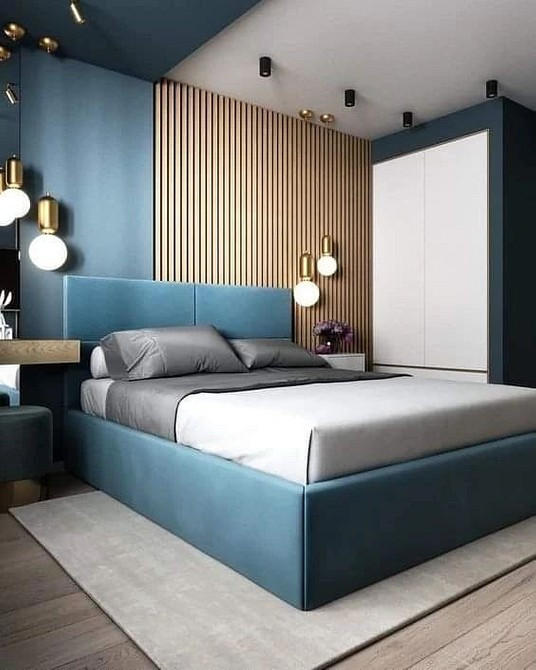
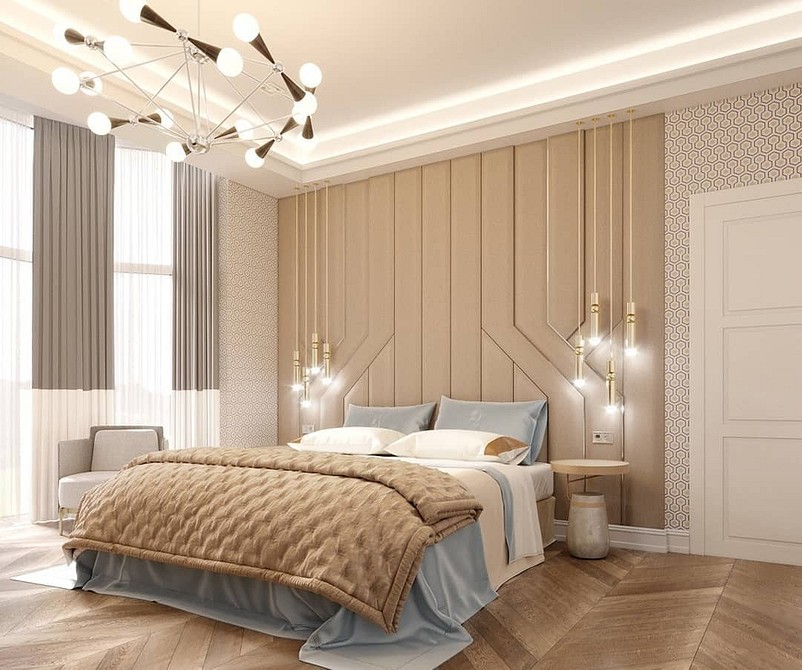

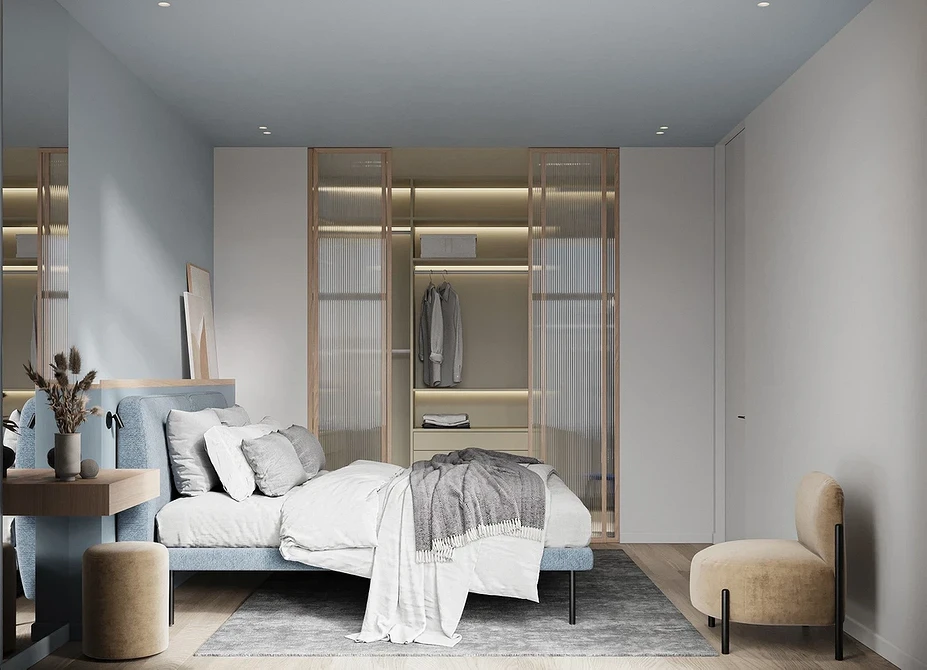
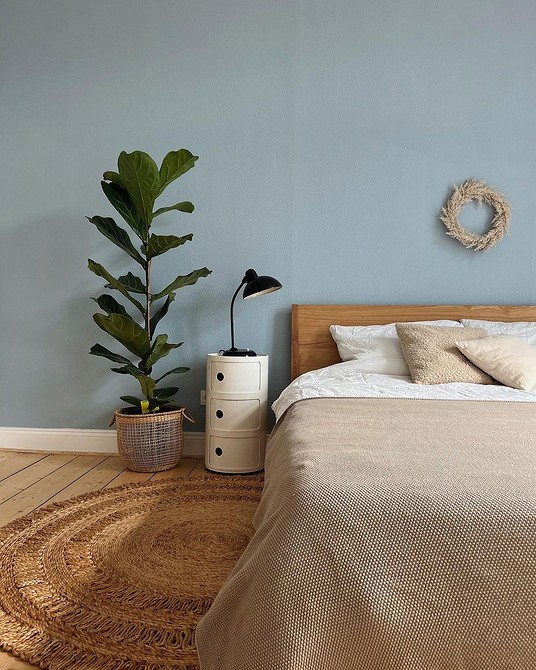
Pink
Combining beige and pink in a bedroom creates one of the most delicate and cozy palettes.
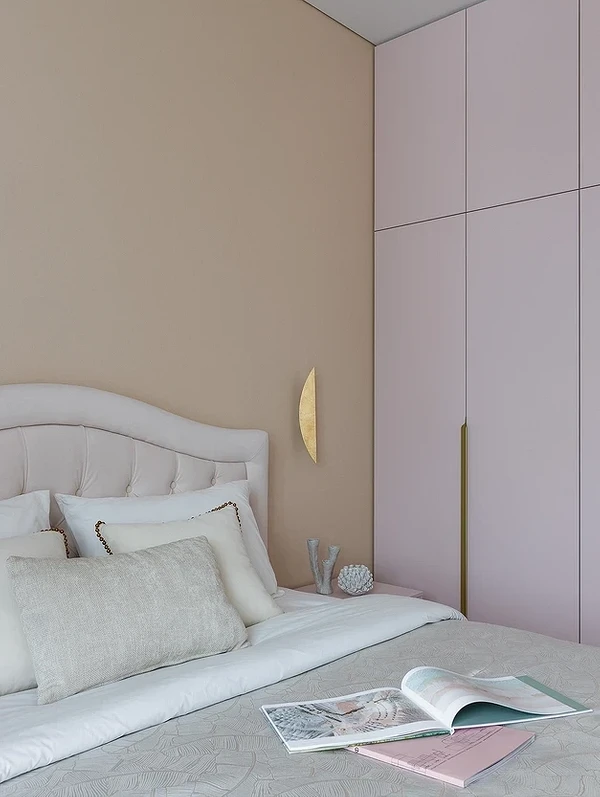
This combination often associates with femininity, but selecting the right shades makes it suitable for a couple’s room or even a single man’s space. For a more light-hearted interior, choose bright warm shades, while more serious settings benefit from colors with a grey undertone, and a pastel range turns the room soft and “vanilla-like”.
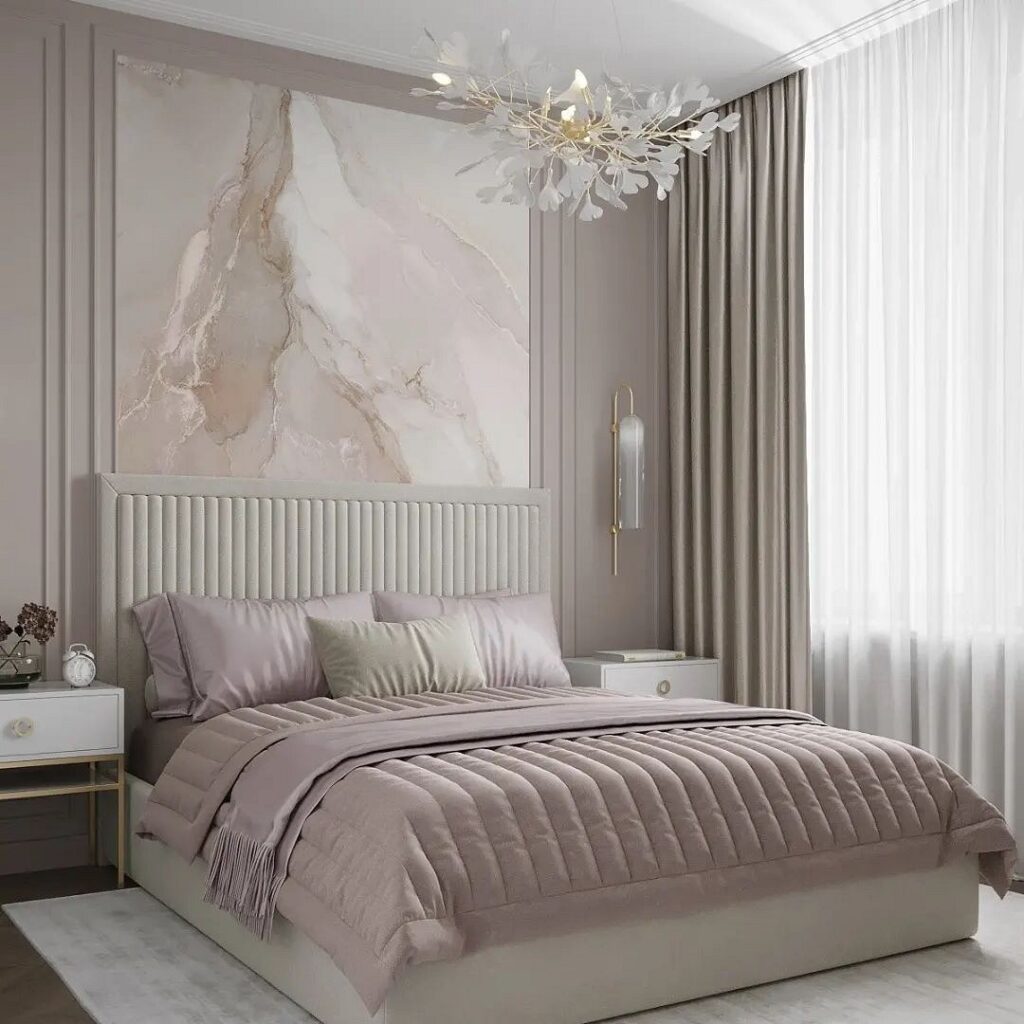
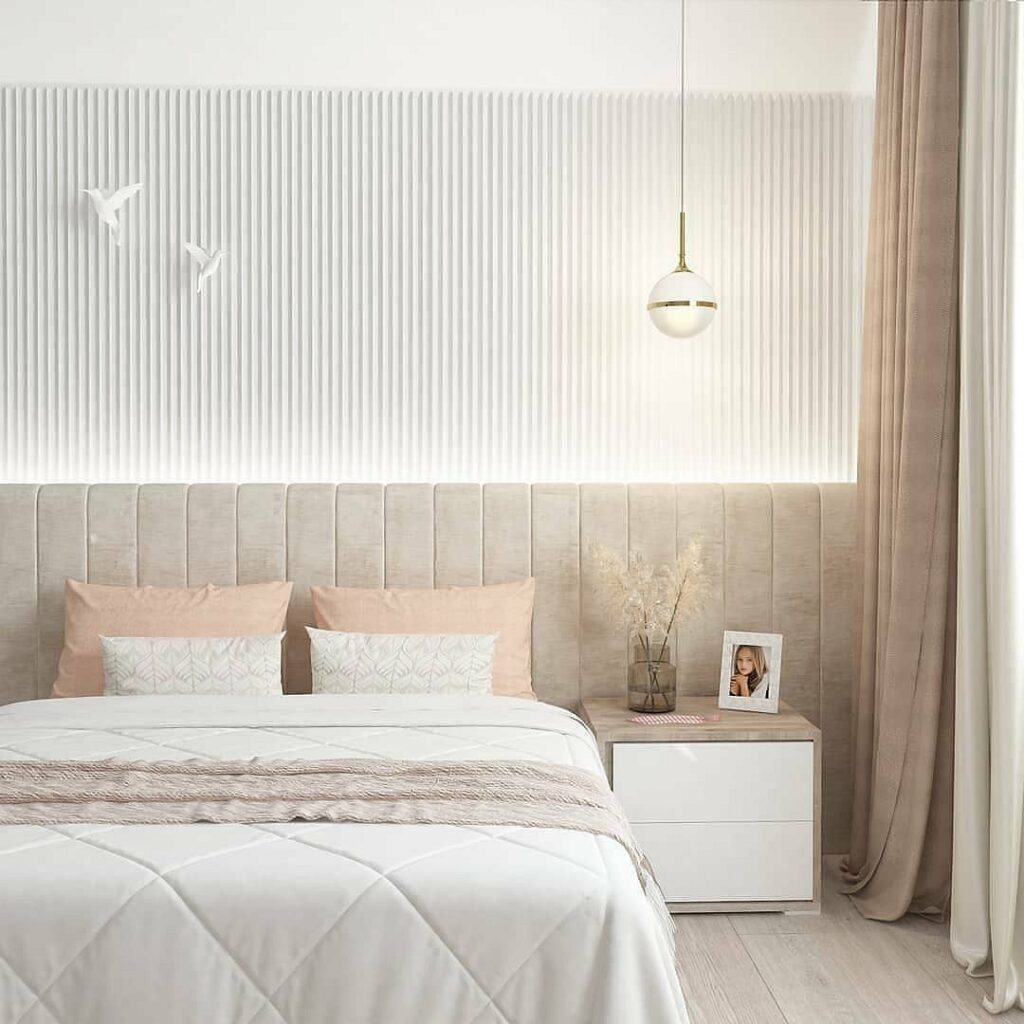
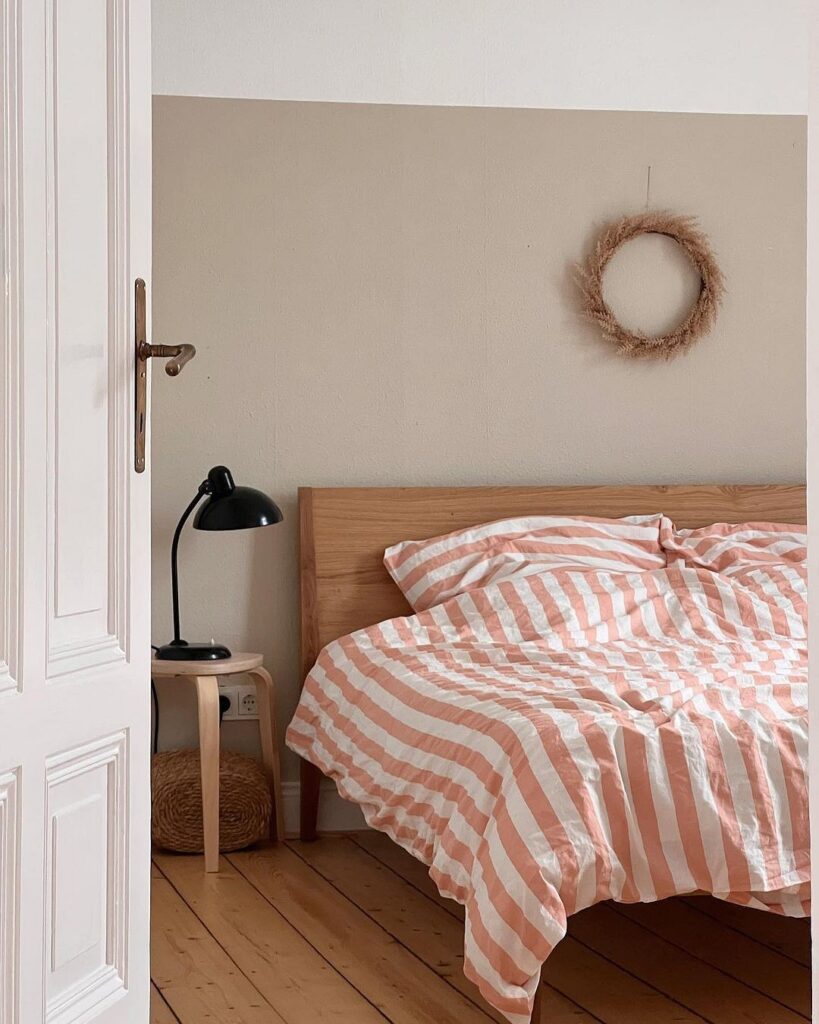
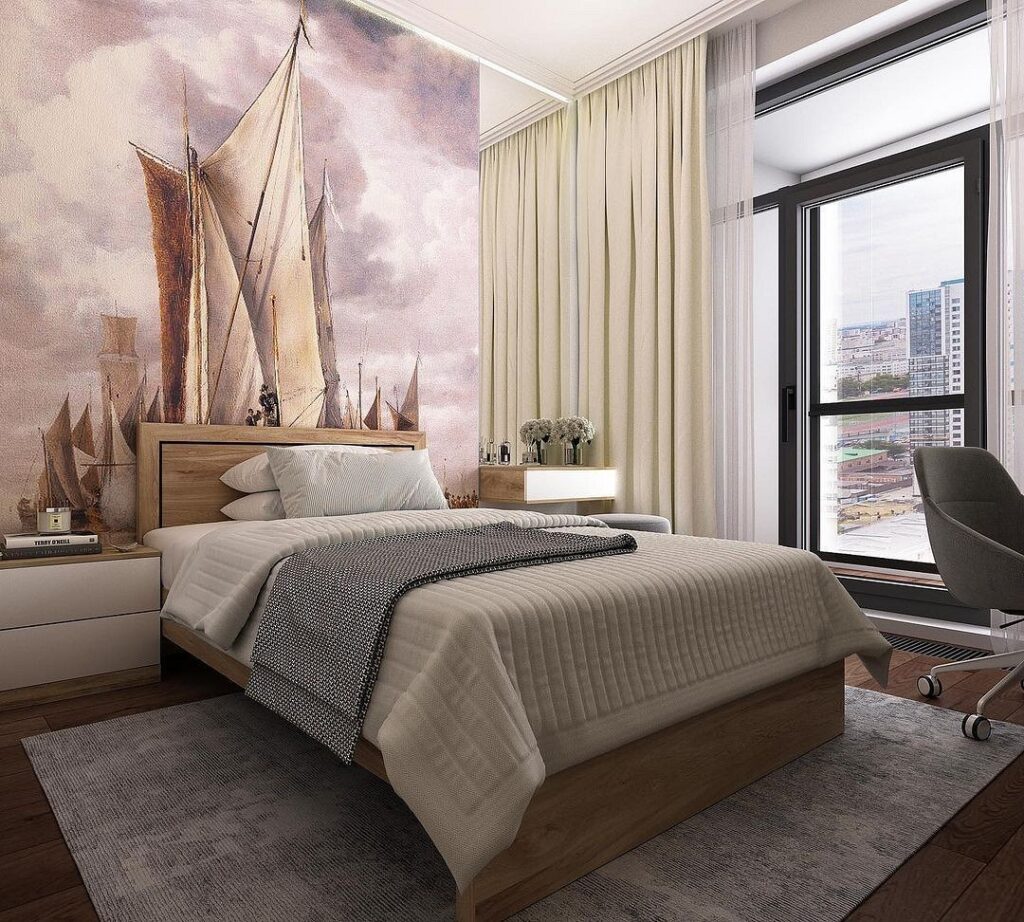
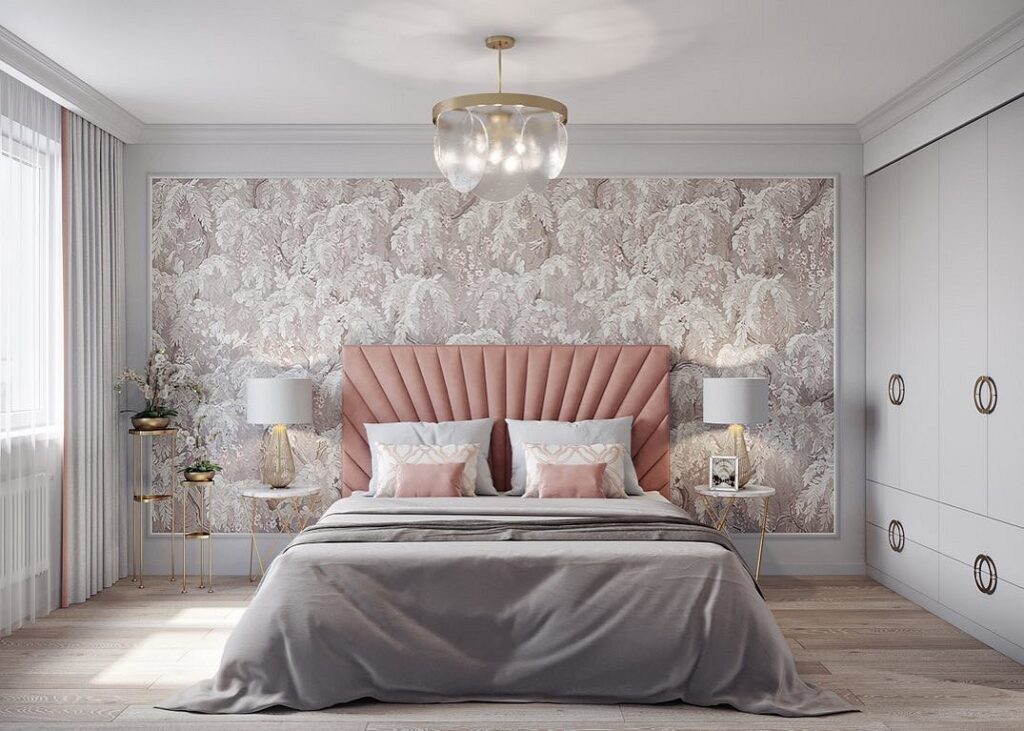
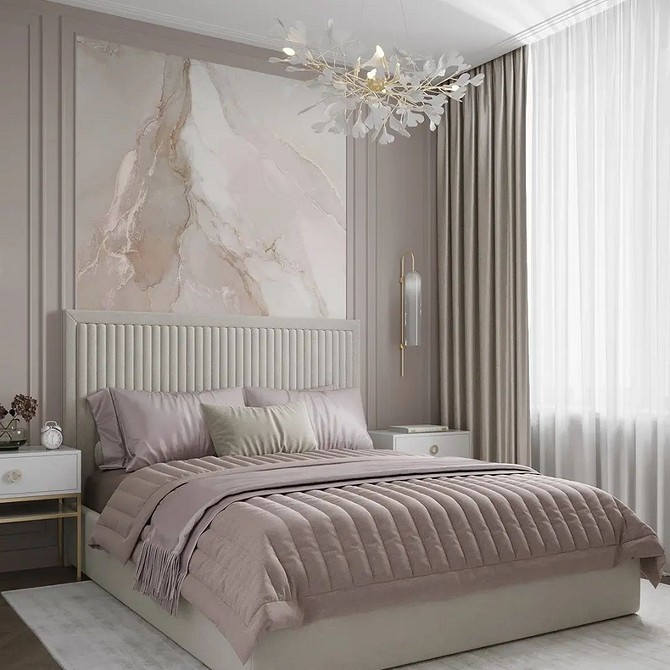
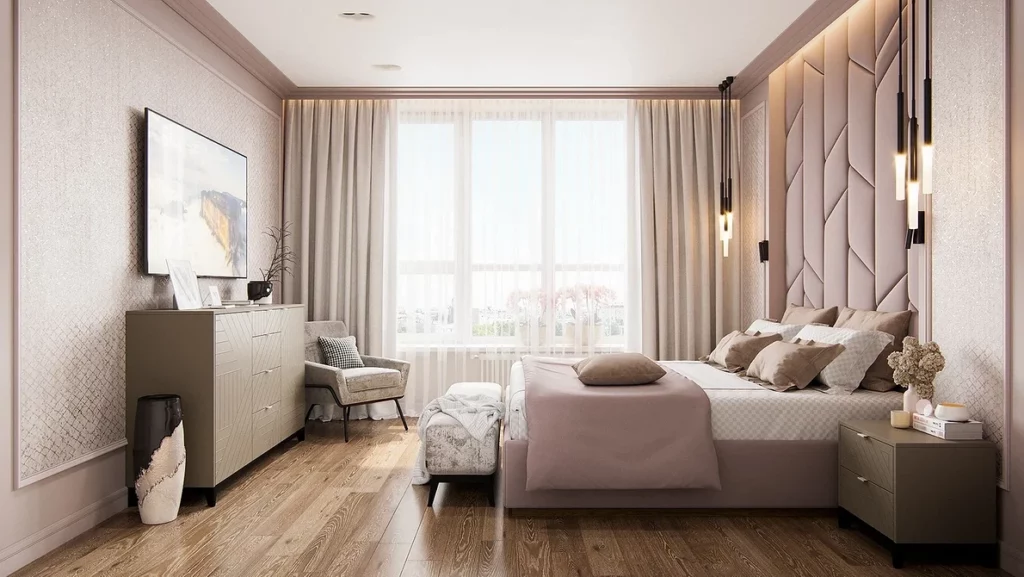
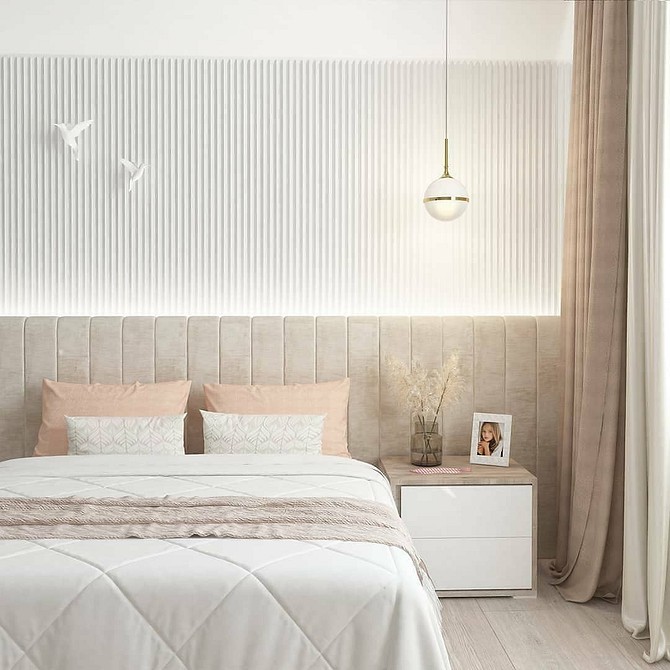
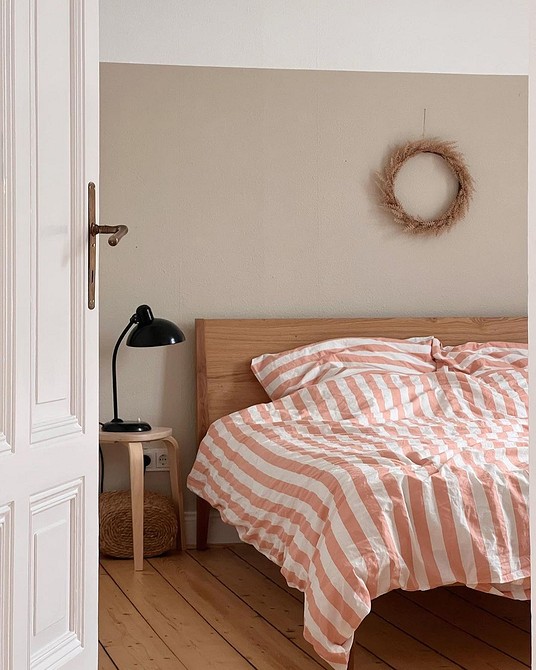
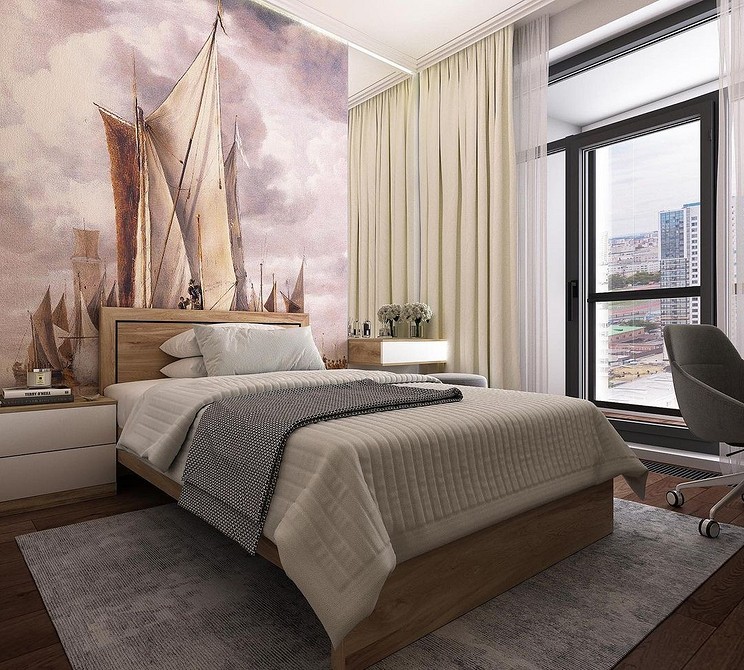
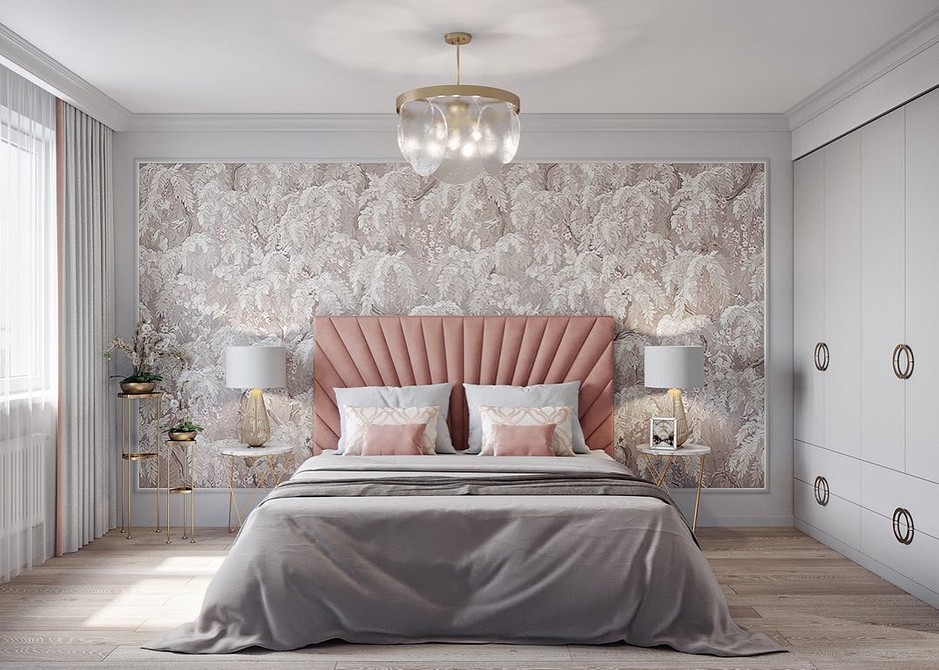

Green
A beige-green bedroom fits well into the eco-trend: this design involves the use of natural colors often found in nature.

The tones should be soft, calm, and even muted. In other styles, this combination can include brighter colors: for instance, a rich lime green adds liveliness and brightness to austere modernism or minimalism. For classical styles, more restrained and refined tones are typical: emerald, mint, and wormwood.
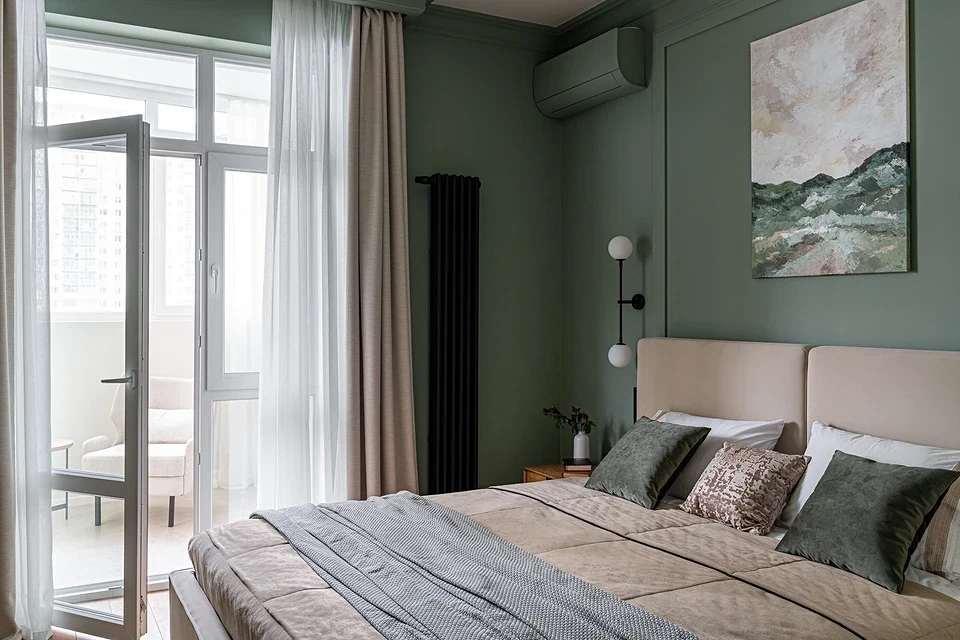
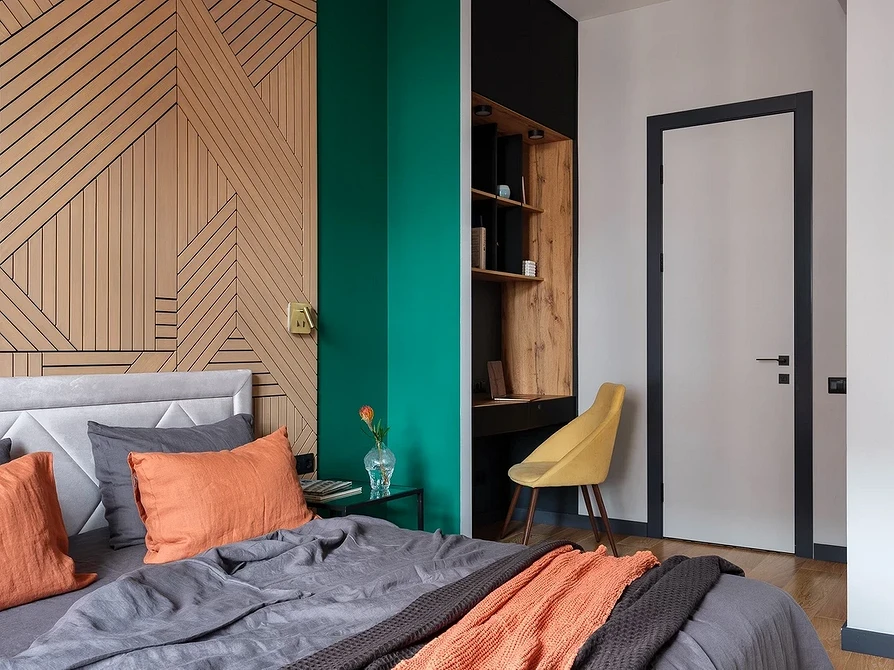
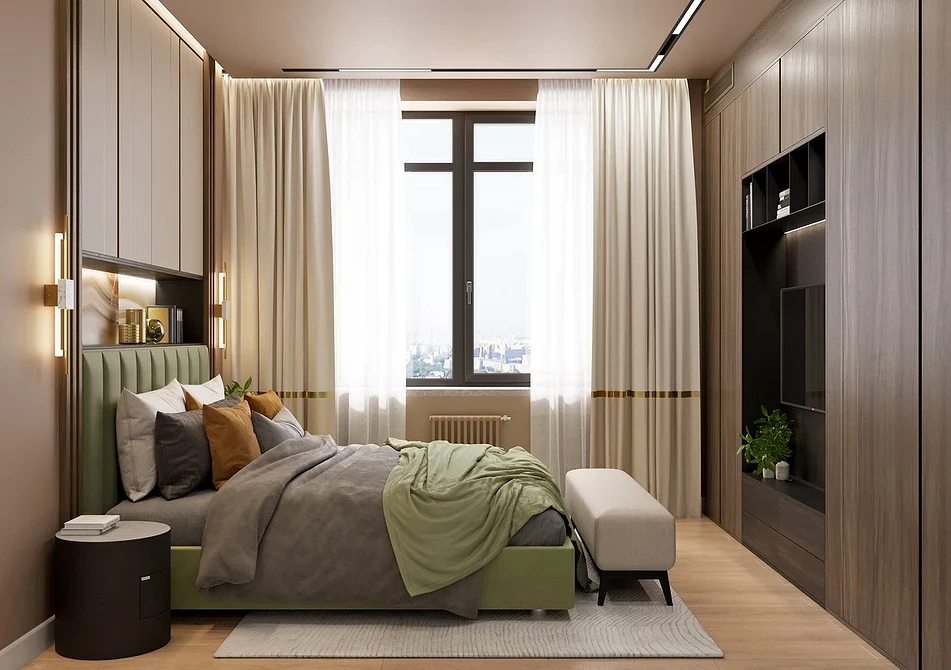
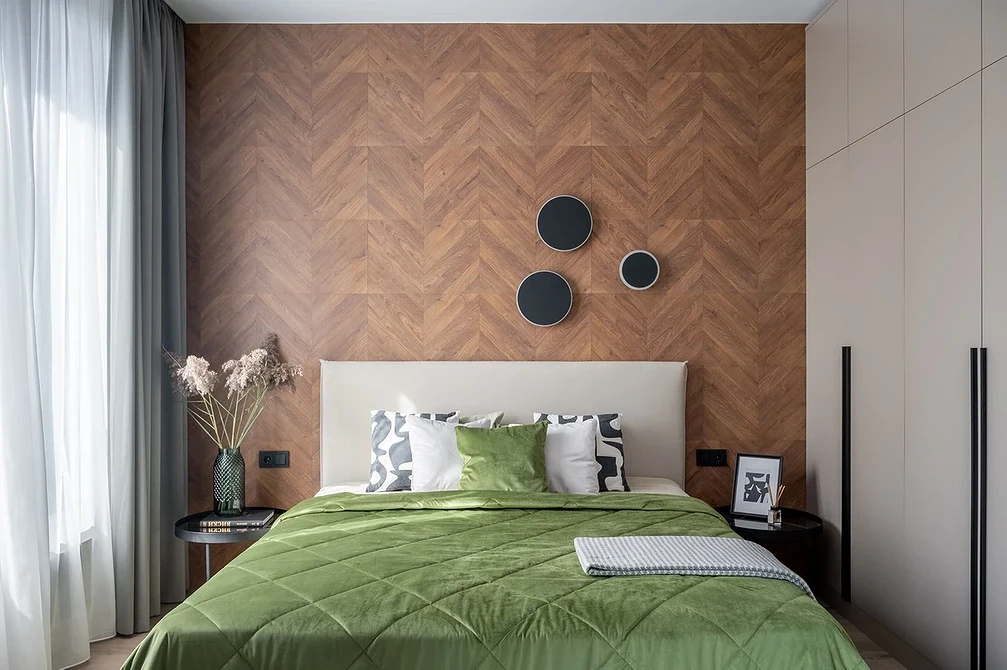
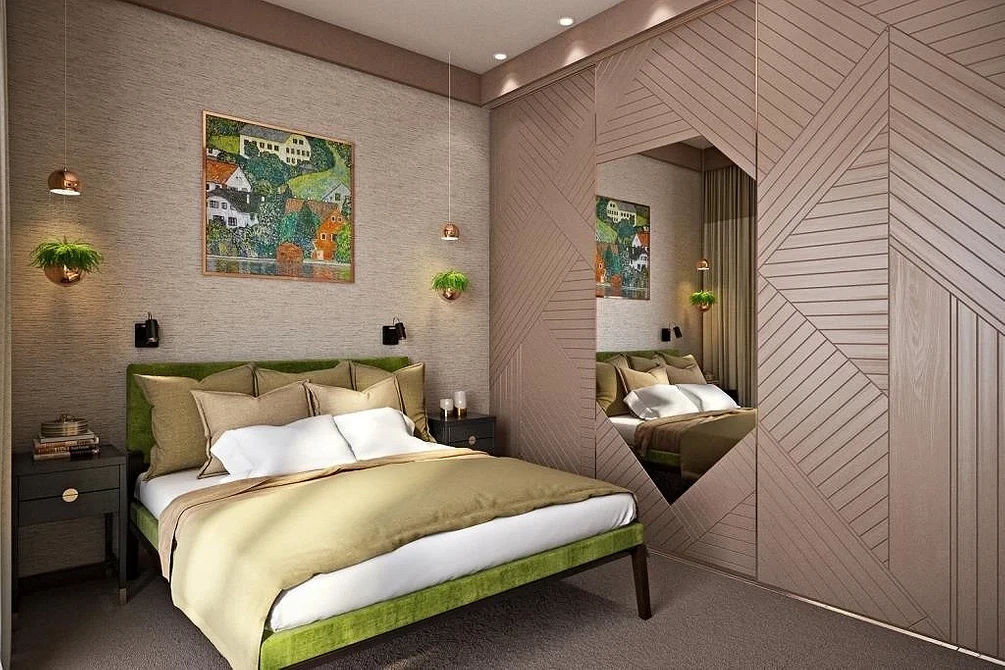
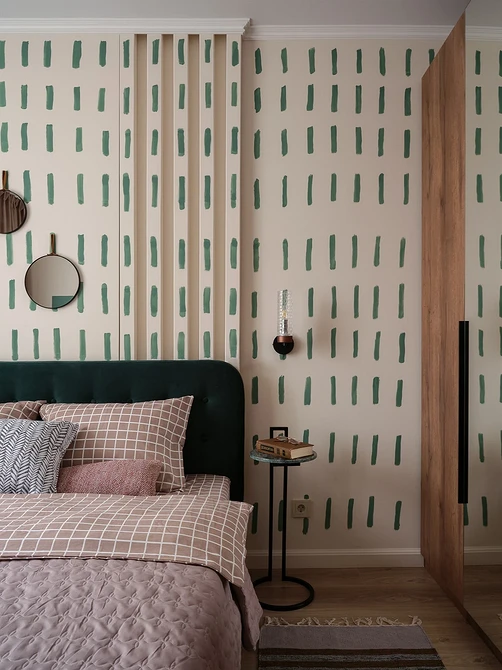
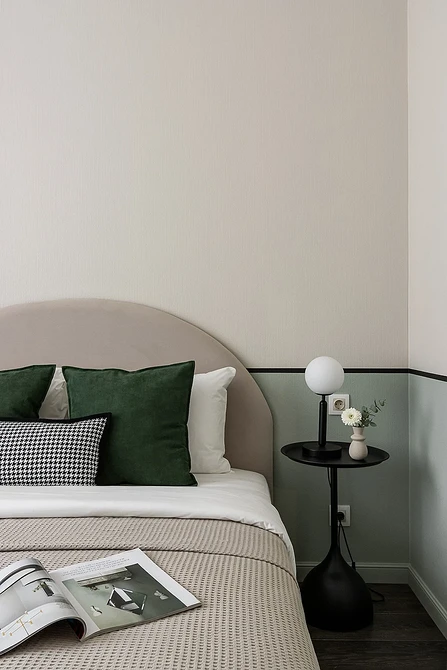

What to Do in a Beige Shade
Finishing
The most obvious and substantial option is beige wallpaper in the bedroom. They cover most of the space, so the floor should be in different shades (darker or lighter, but can be in the same palette), and the ceiling should remain white to avoid blending with the walls. If the wall shade is very pale, the floor and ceiling can be made brighter and more accentuated.
Considering beige is a neutral color, it’s better to choose wallpaper with embossing or a subtle pattern. Alternatively, you can cover the surfaces with decorative plaster featuring an interesting texture. To prevent the walls from being bland, one of them can be contrasting: for example, designed in a chocolate-coffee palette or adorned with a painting or a large mirror.
A floor in wooden-wheat shades is a choice for lovers of classic and natural styles, as it usually means wooden parquet. It is typically done in richer tones close to brown, but the opposite option is also possible, where the walls are darker than the flooring. This solution looks fresh and adds a special charm to the room – that’s how a modern beige bedroom should appear.
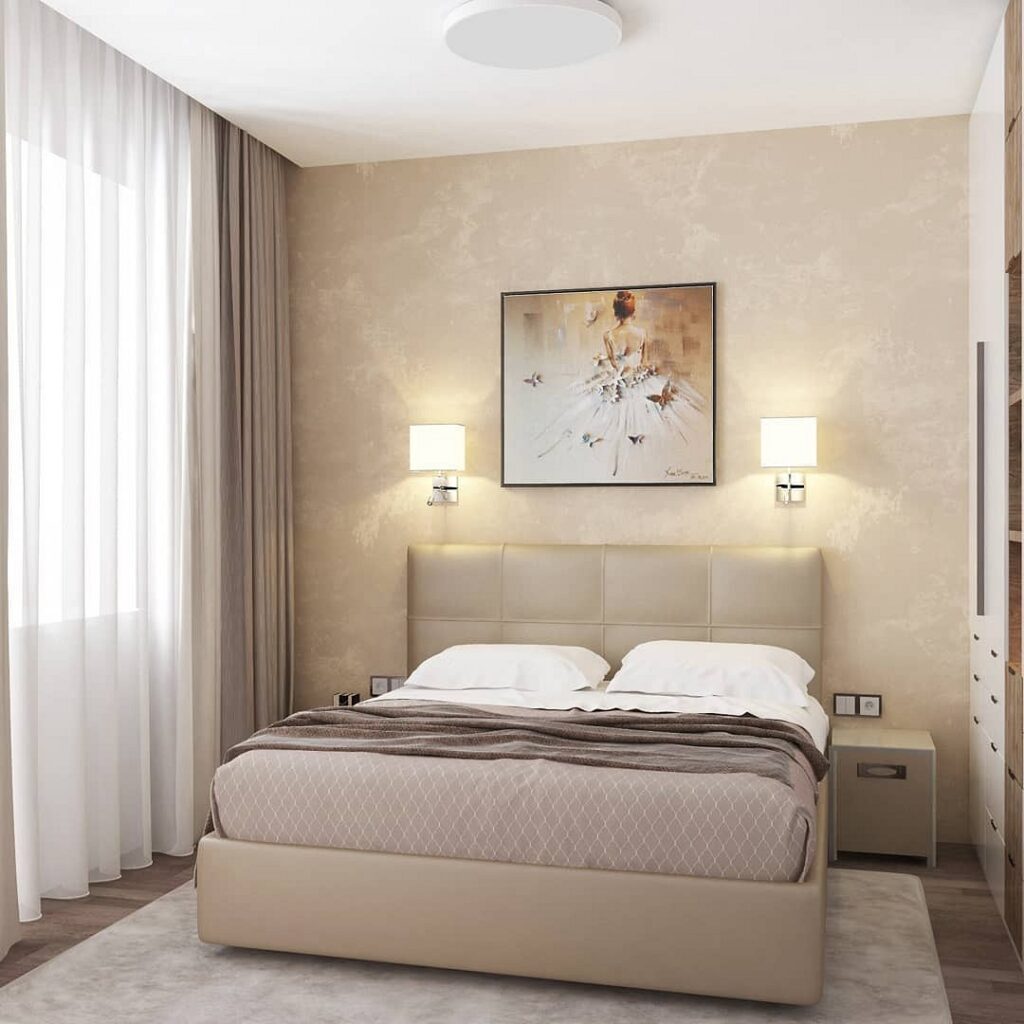
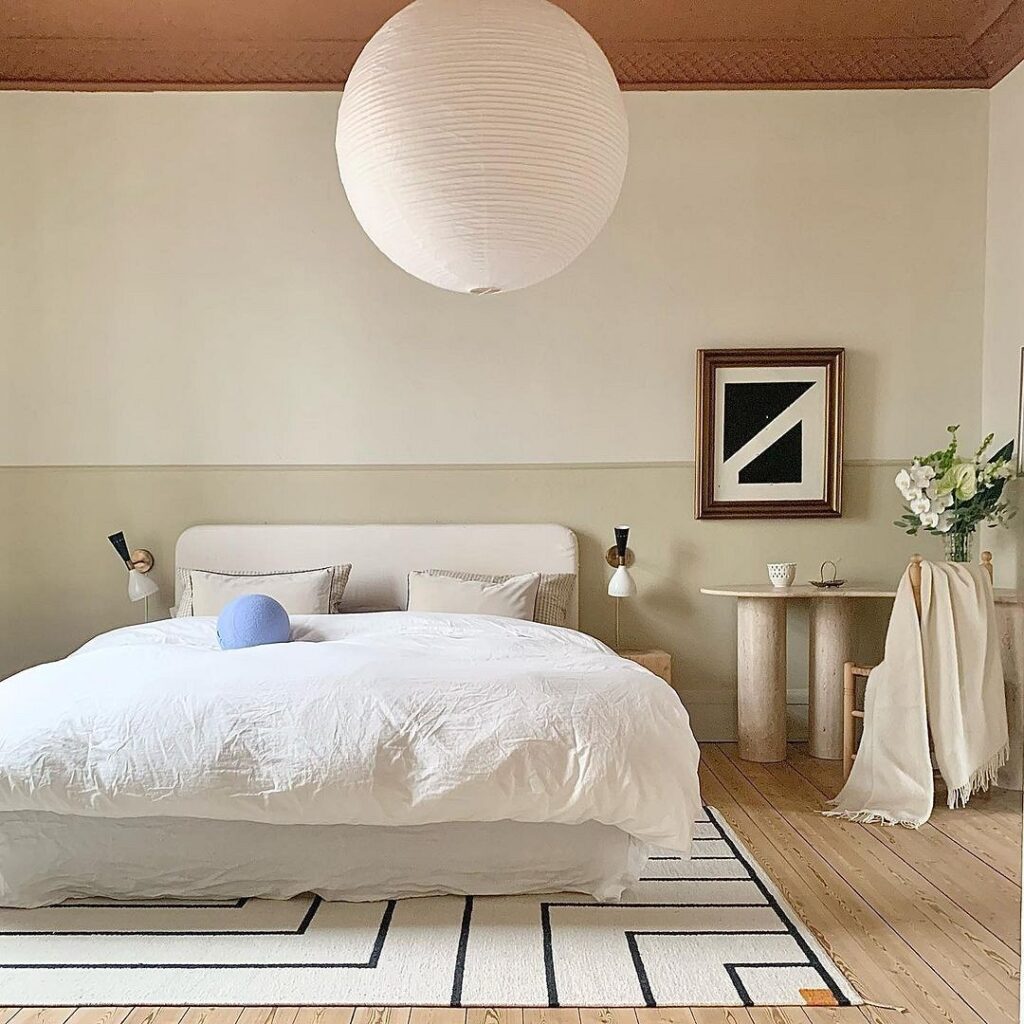
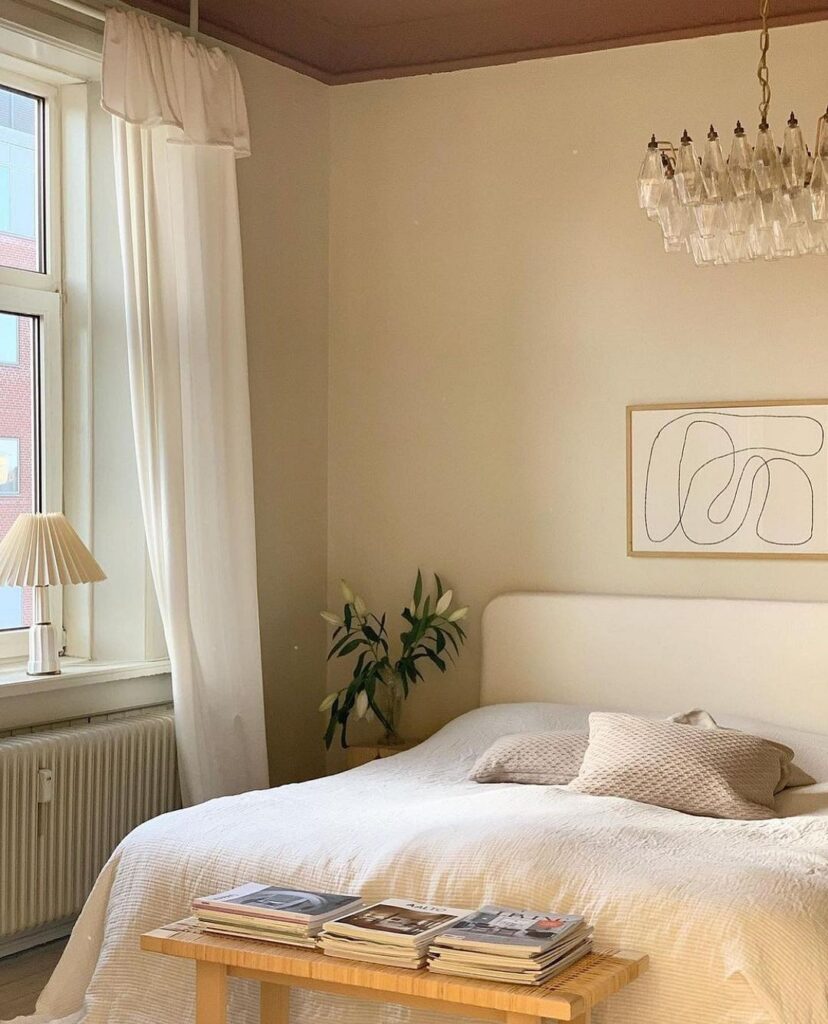
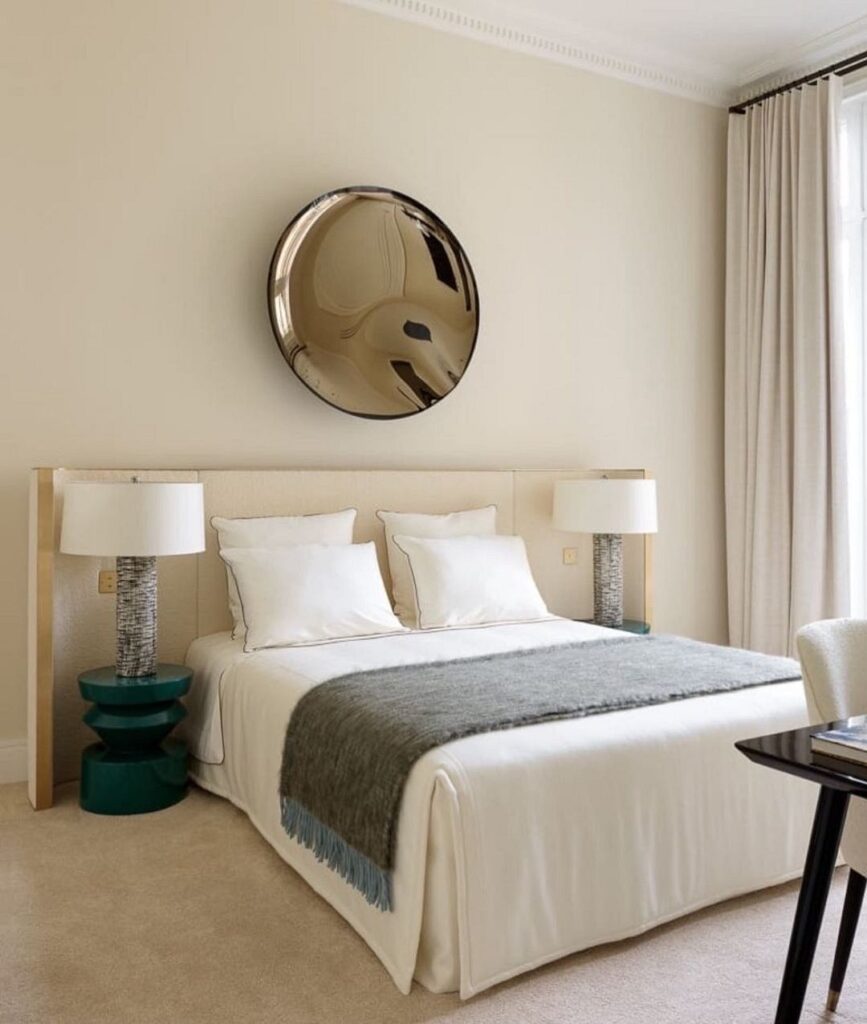
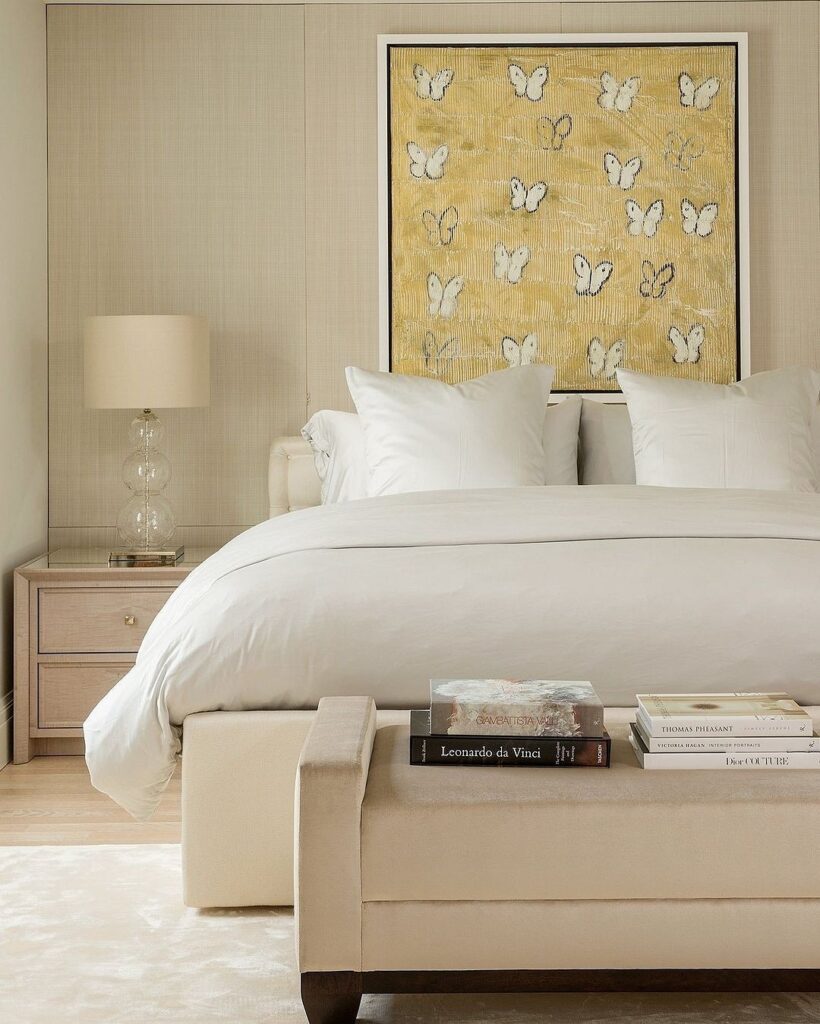
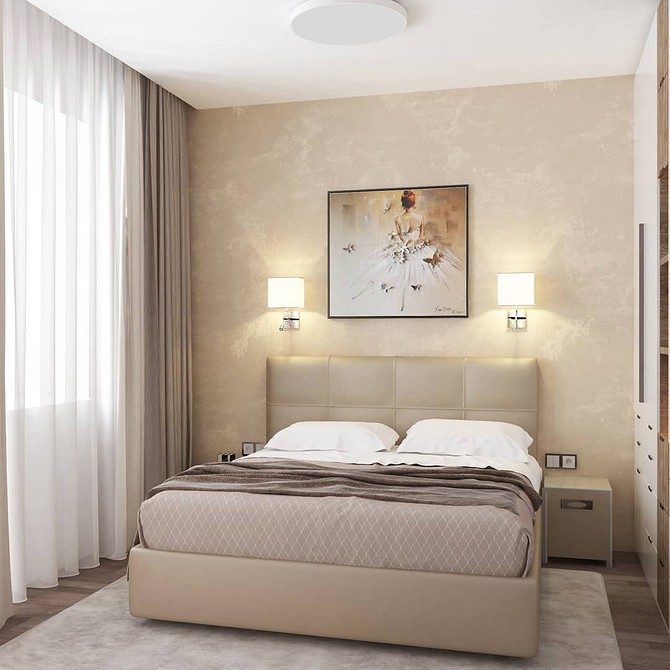
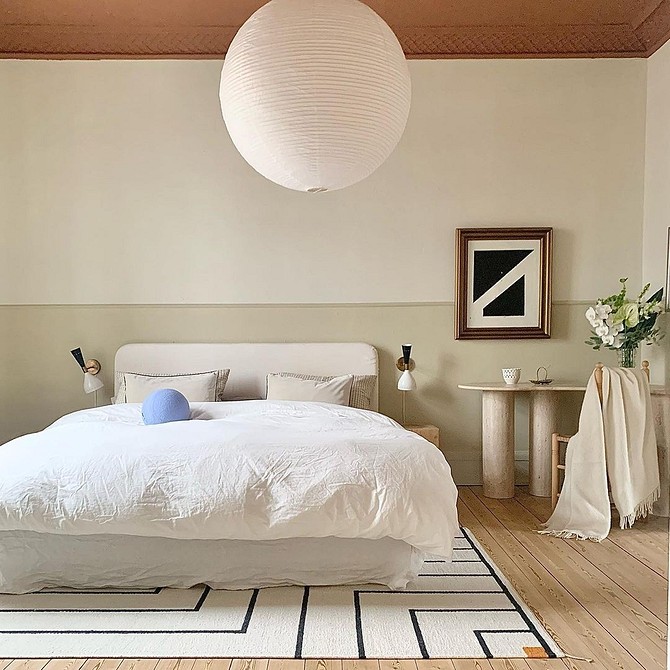
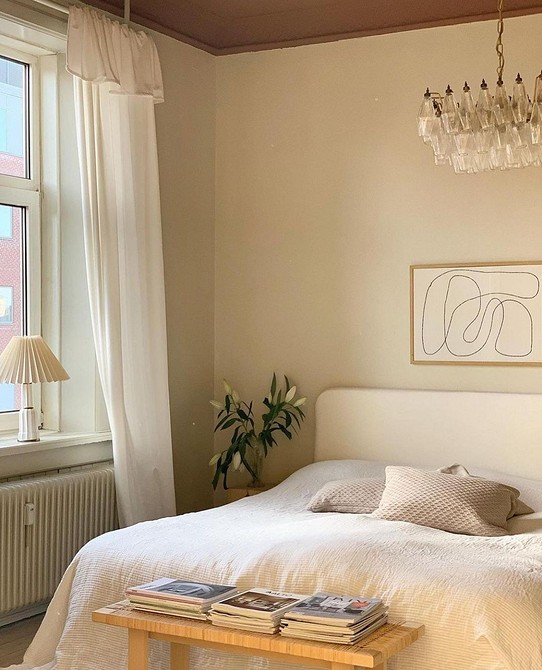
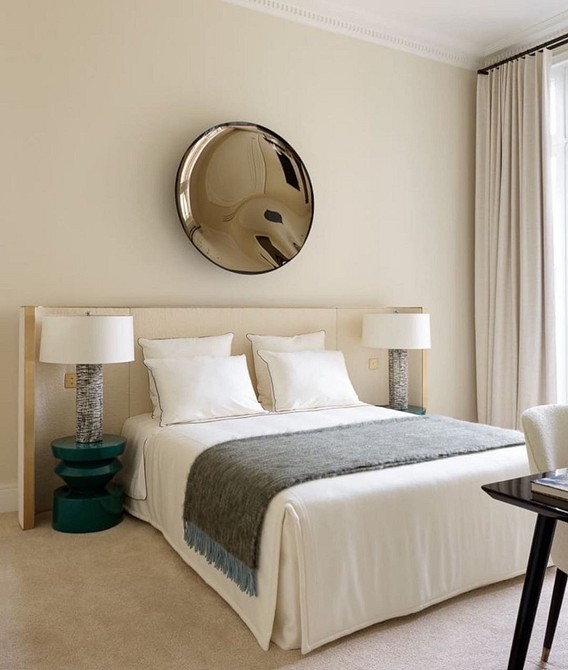

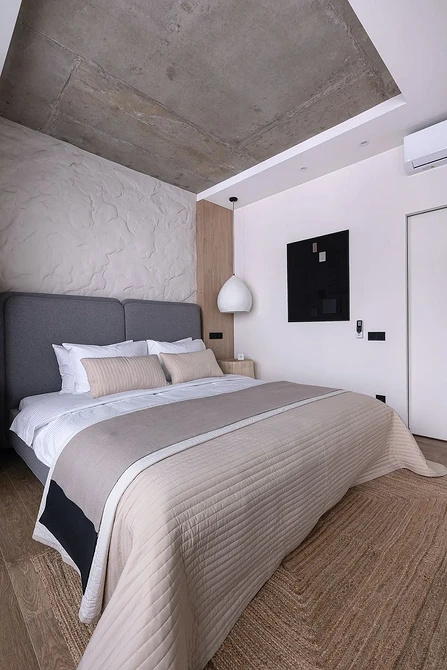
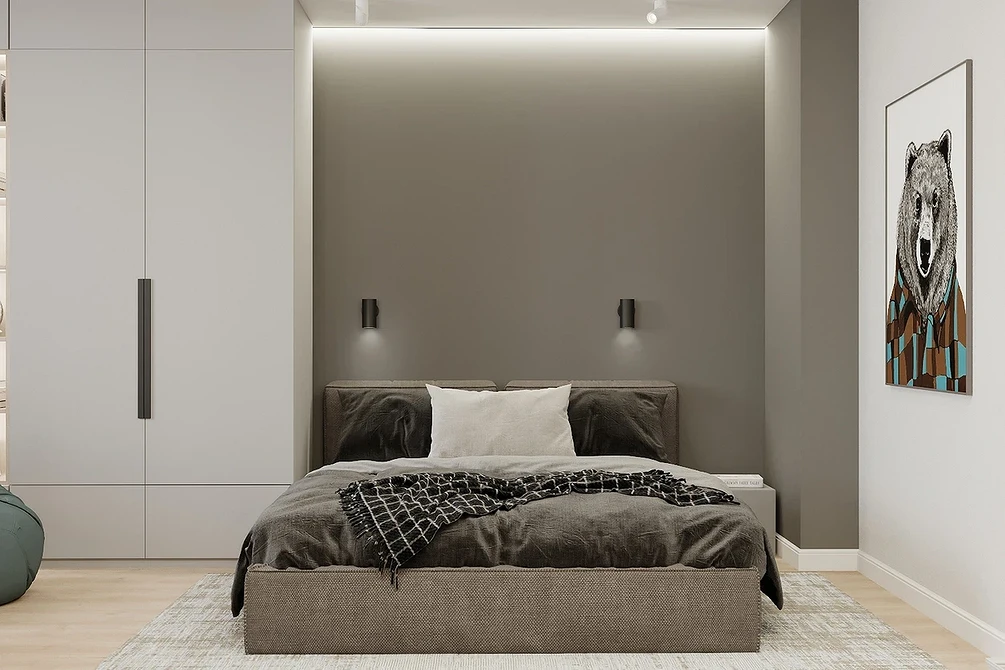
Furniture
In a bedroom, people usually don’t place much furniture: a bed, a bedside table, and a wardrobe, sometimes complemented by a couple of chairs or a dressing table.
Therefore, even if they are entirely painted in beige (or made of wood), they are unlikely to become the dominant feature.
To increase the presence of this shade, you can employ some clever tricks. If you like a bedroom with a beige bed, let not only its legs and base be in this color but also its headboard. If the model lacks one, you can order a stationary one that attaches to the wall. The wardrobe can be made wall-to-wall, providing ample light brown tones. Additionally, almost any room can successfully incorporate a wooden decorative panel or screen.
Beige furniture in the bedroom can also be woven. This is not the most obvious solution, but it certainly deserves attention. Beds, chairs, dressers, and even chests made of rattan, wicker, and bamboo are appropriate in styles like country, Provence, boho, and eco.
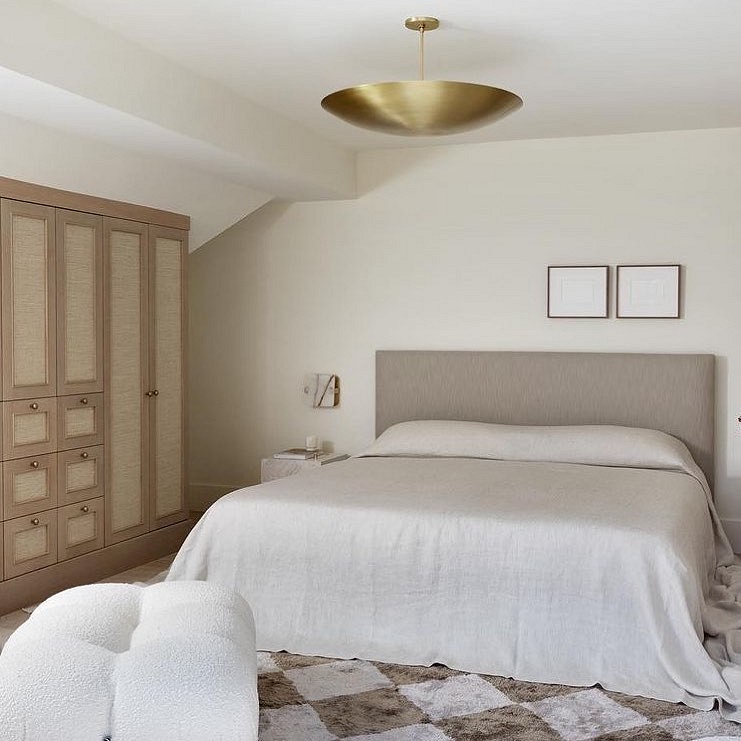
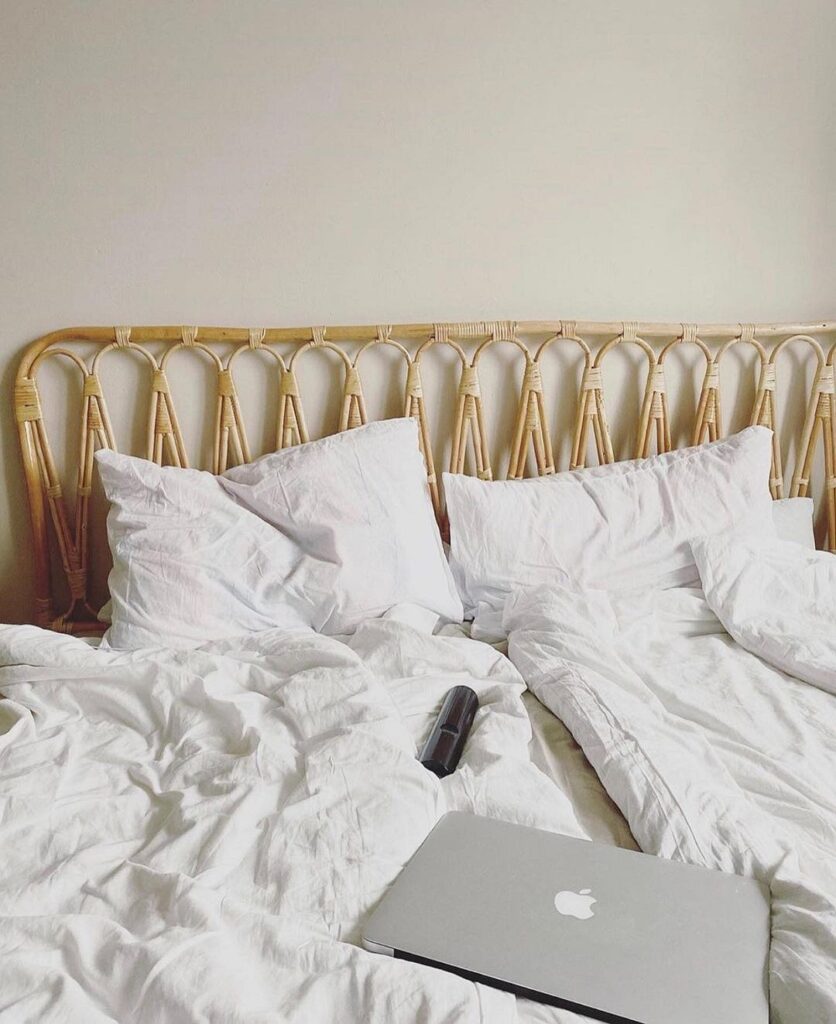
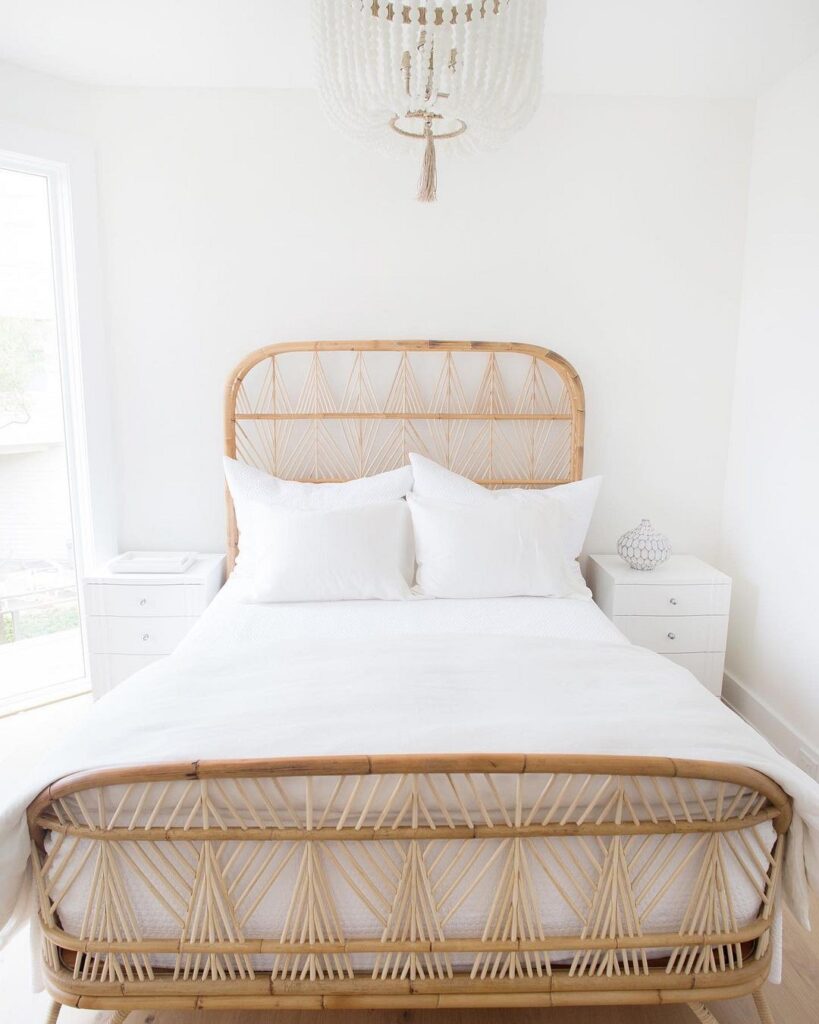
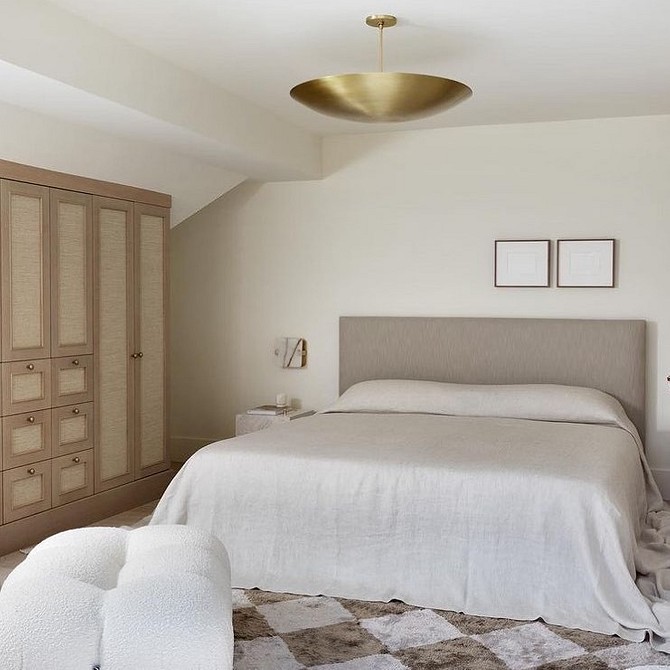
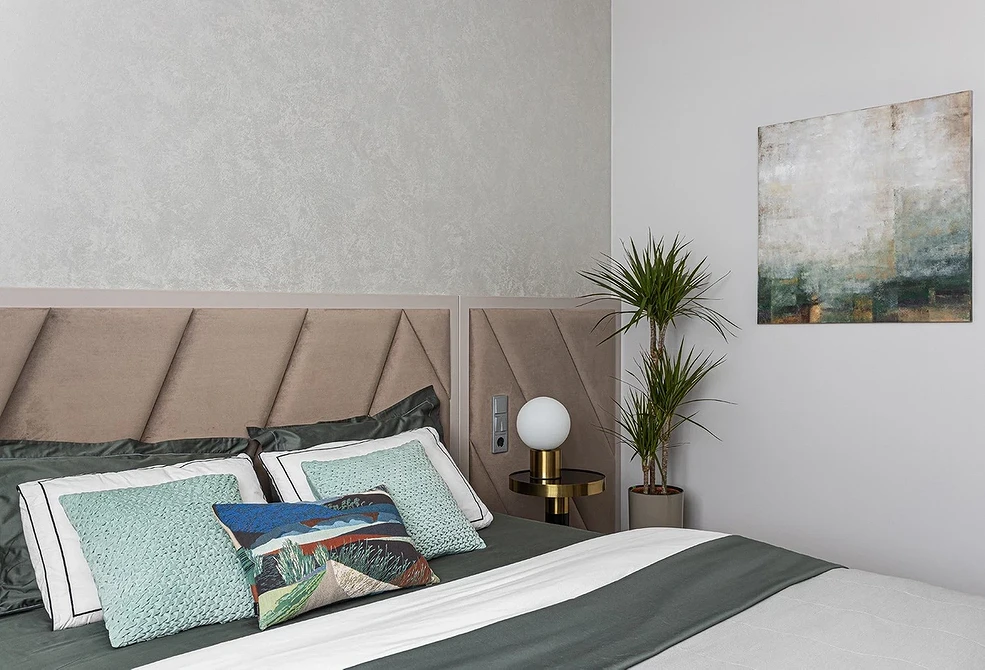
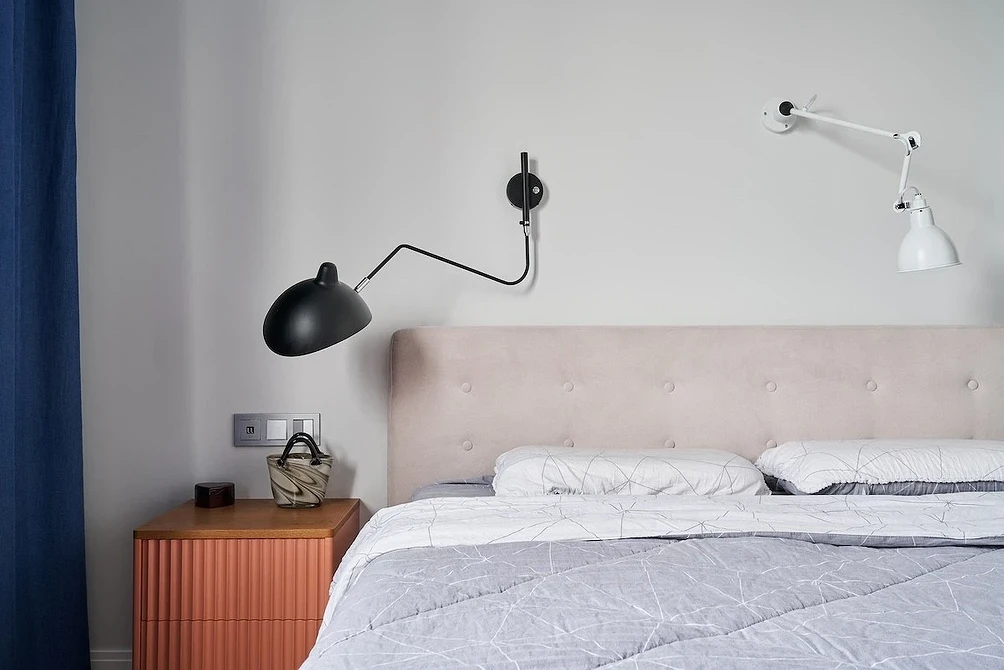
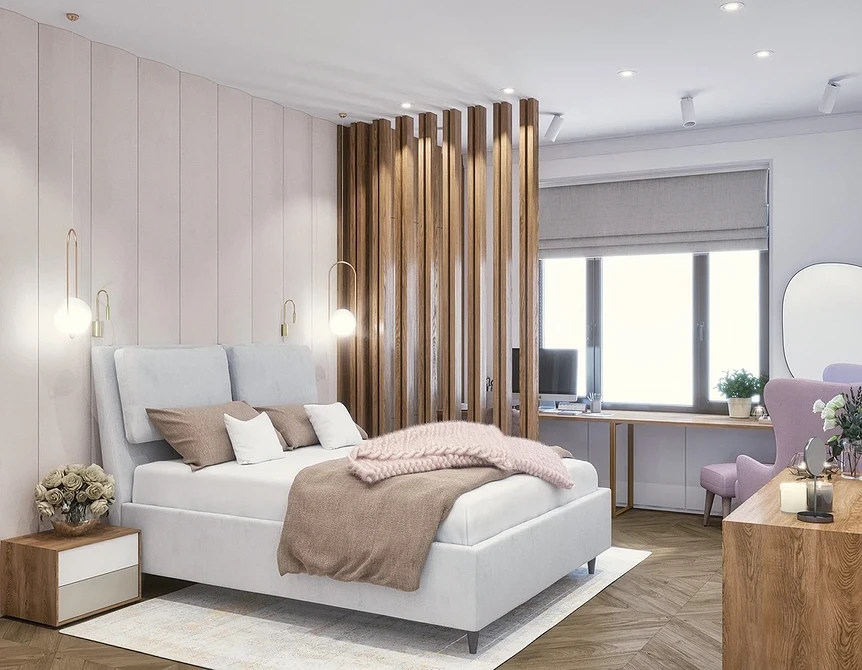

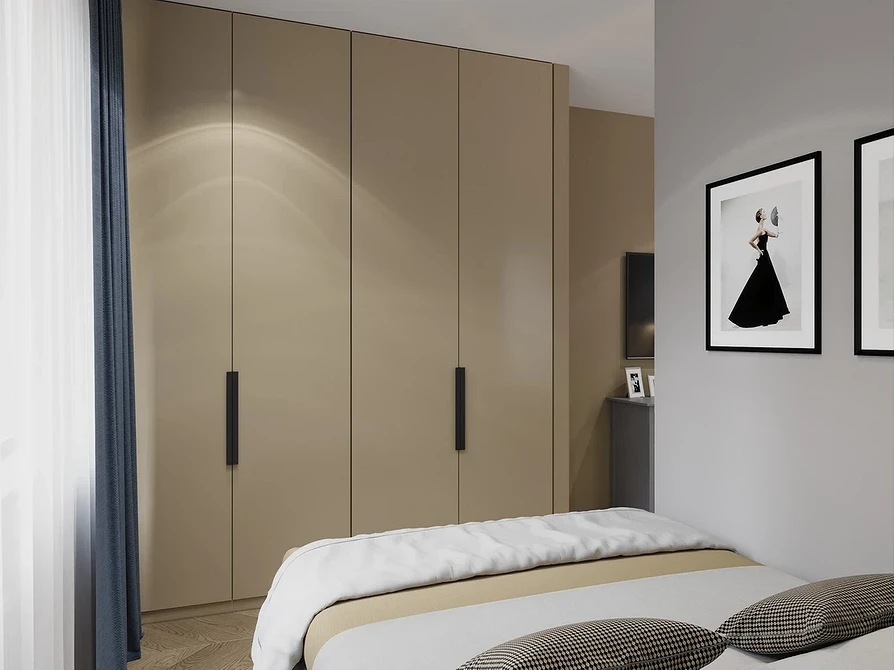
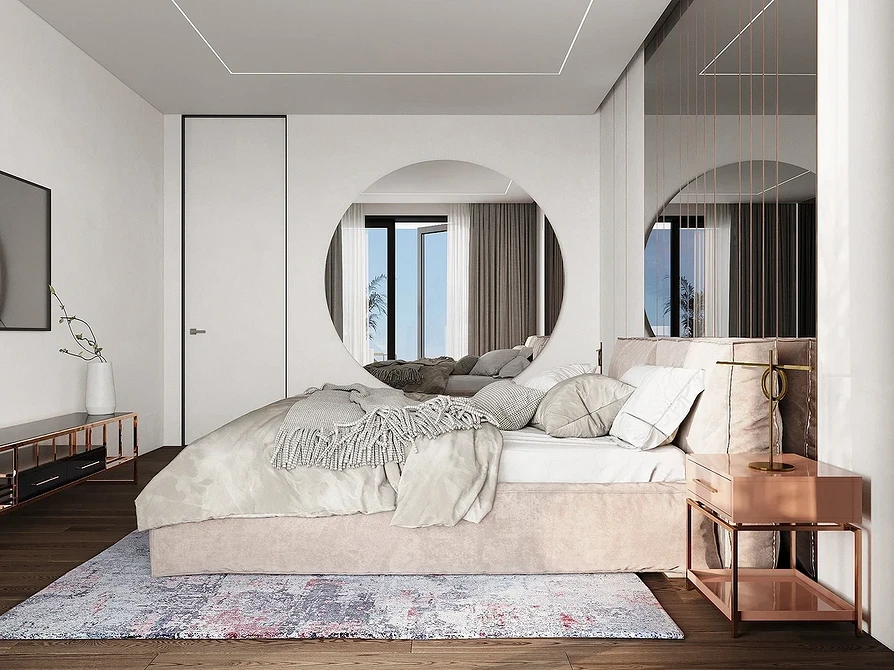
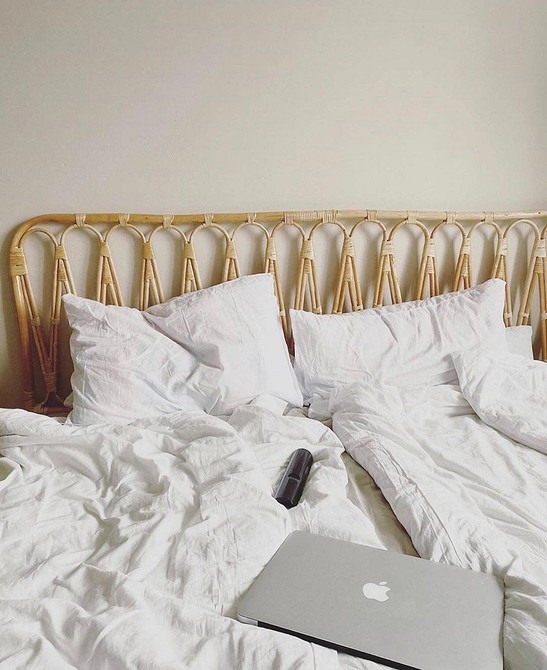
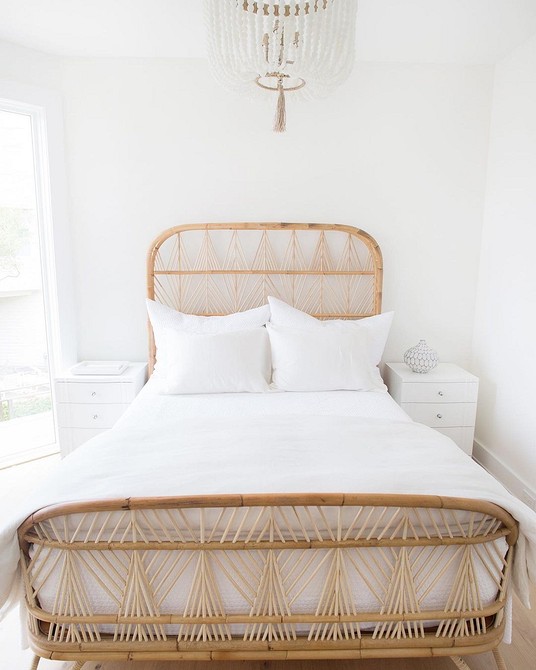
Textiles
You can create a beige bedroom interior not only through renovation. Sometimes, changing the home textiles is enough to completely transform the room.
Floor coverings, curtains, bedspreads, and decorative pillows occupy a significant part of the space, and their color greatly affects the perception of the setting. Therefore, if the room’s walls harmonize with light brown, which looks good with almost all shades, confidently choose items in cream-nut tones.
You can sew everything from one fabric (or very similar ones), making the interior look stylish and complete. Or, you can look for close shades and play with textures (even identical tones will look different), to give the room character and originality.
The situation can also be reversed: the finishing is done, and it’s time to choose textiles. If a beige bedroom is already made, what curtains, bedspreads, and carpets will suit it? All the tones mentioned above are apt: white, gray, blue, green, pink, and brown. You can keep it simple and stick to the same light brown palette, but then it’s better to choose textured products. If curtains, then from coarse fabric and cascading to the floor; if a carpet, then exceptionally fluffy; if a bedspread, then knitted, or even better, lacy. This way, the milky and cream shades won’t merge into the general background with the walls and furniture.
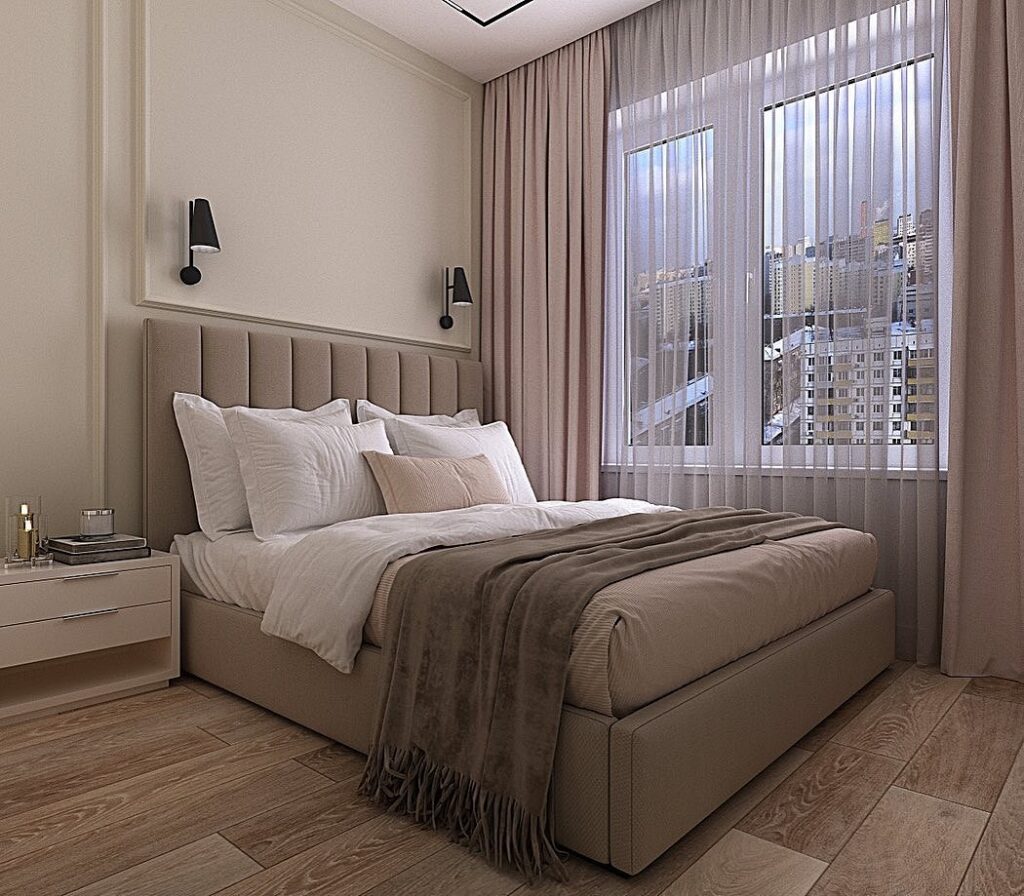
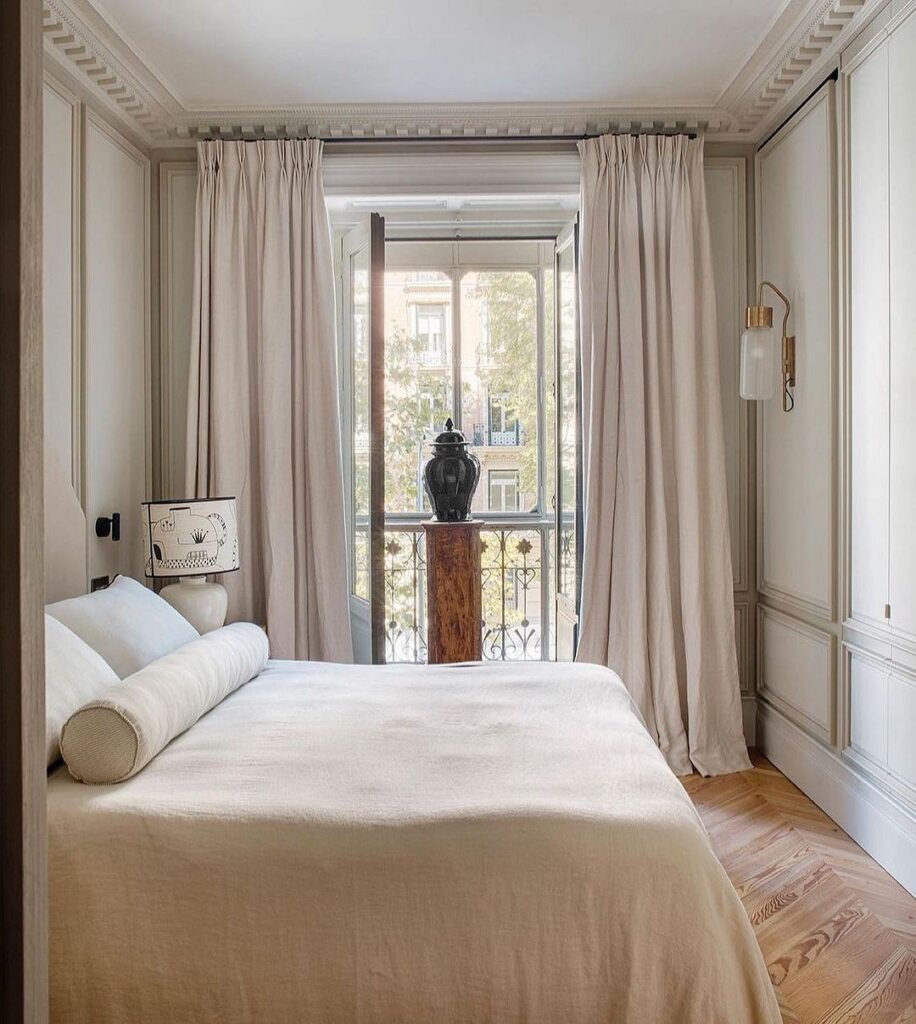
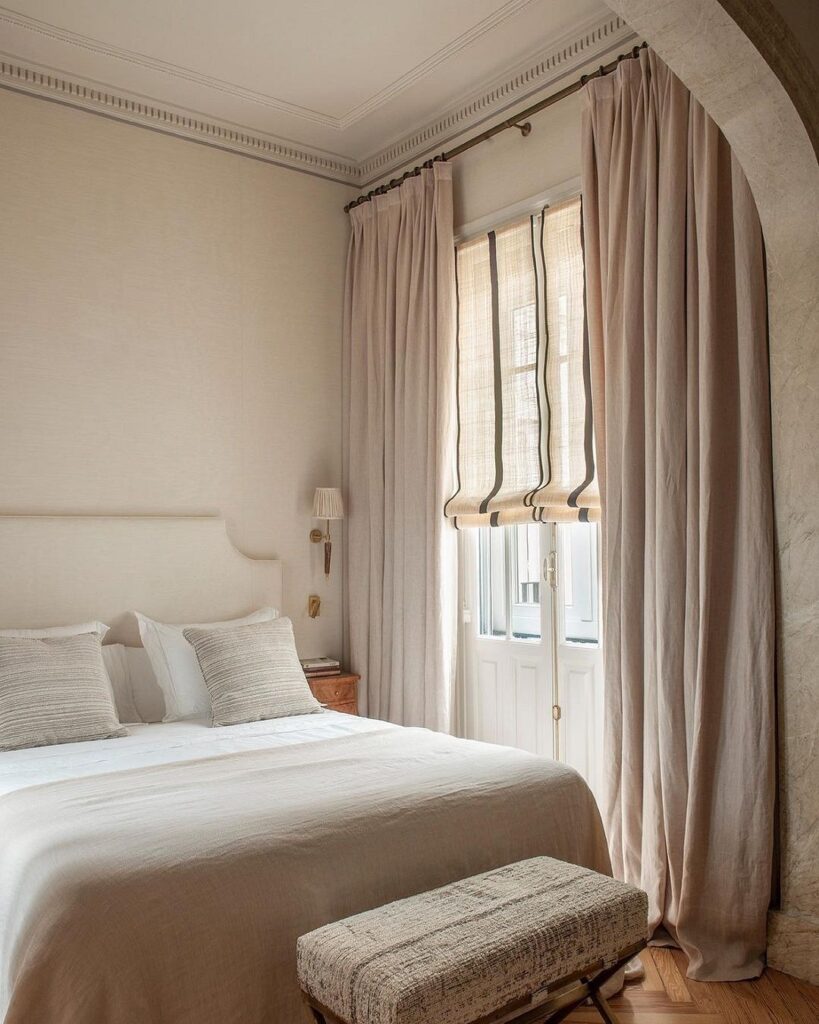
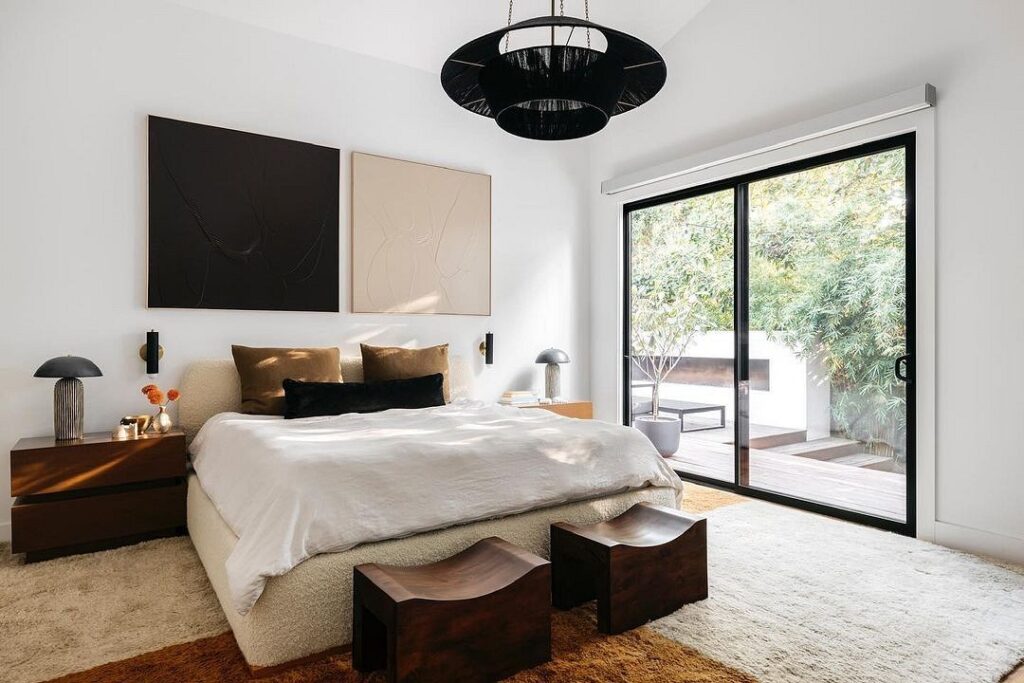

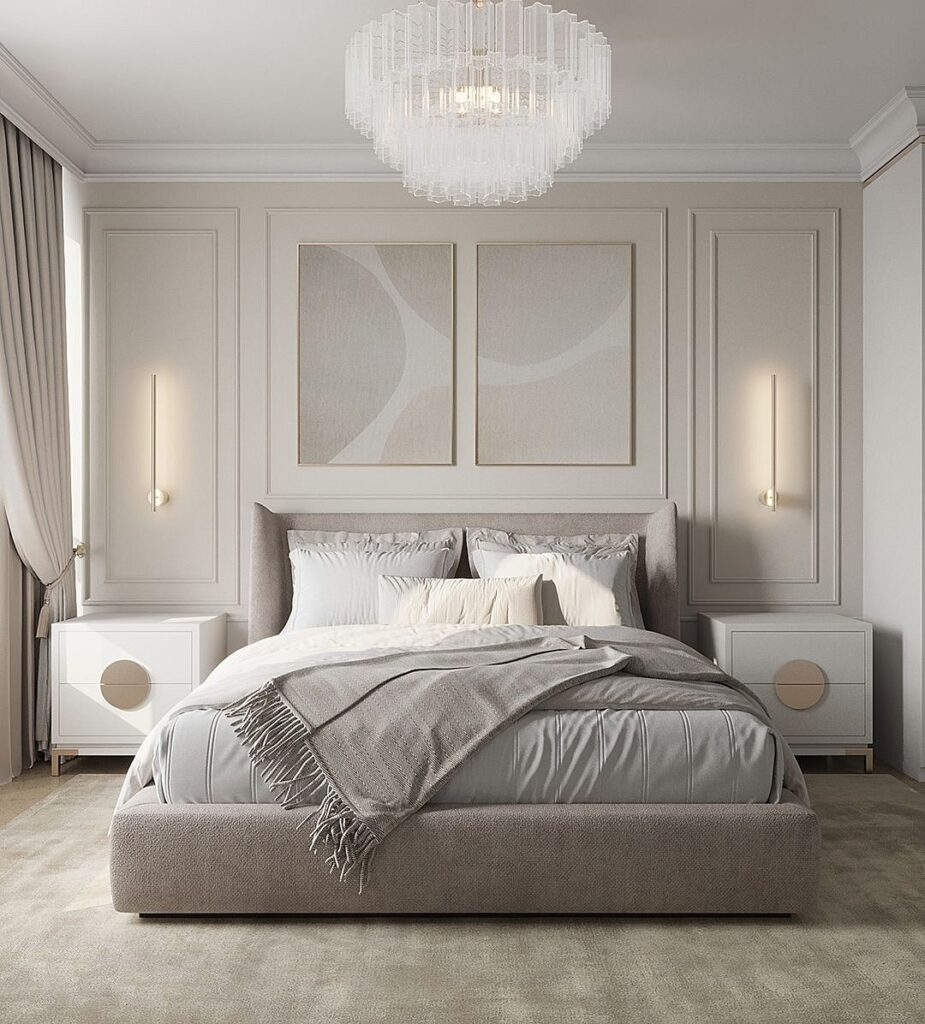

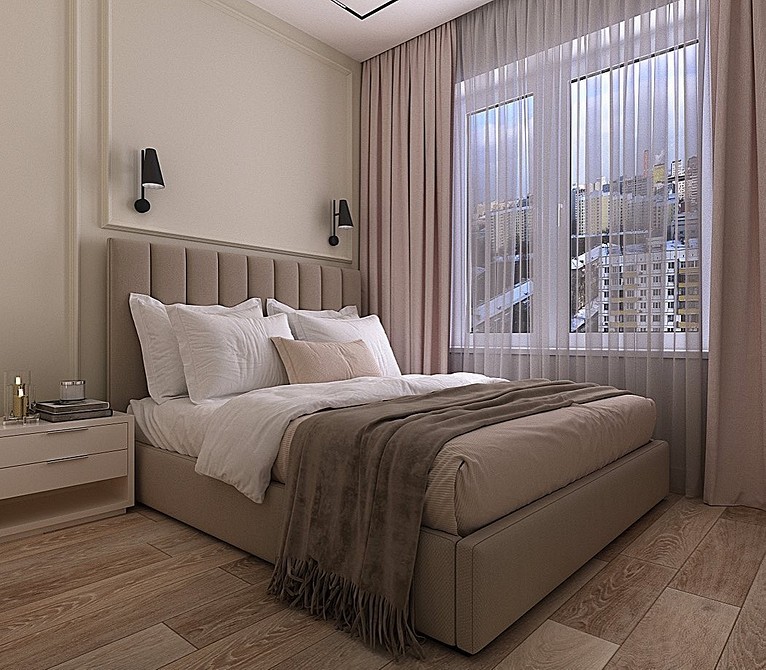
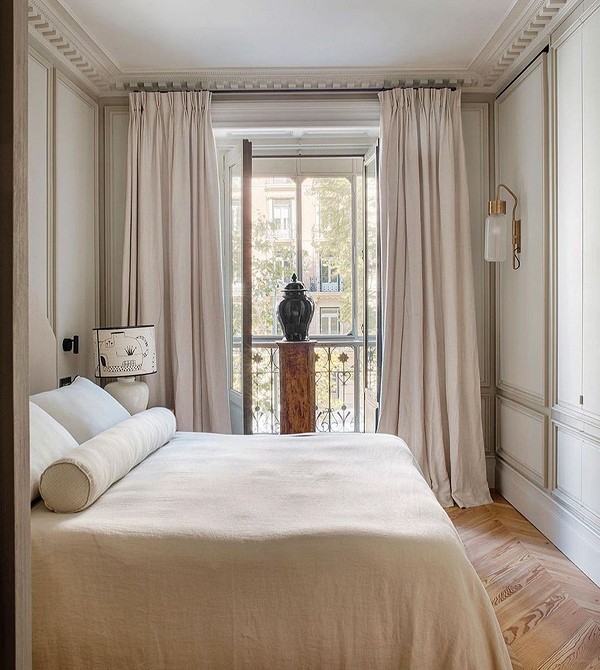
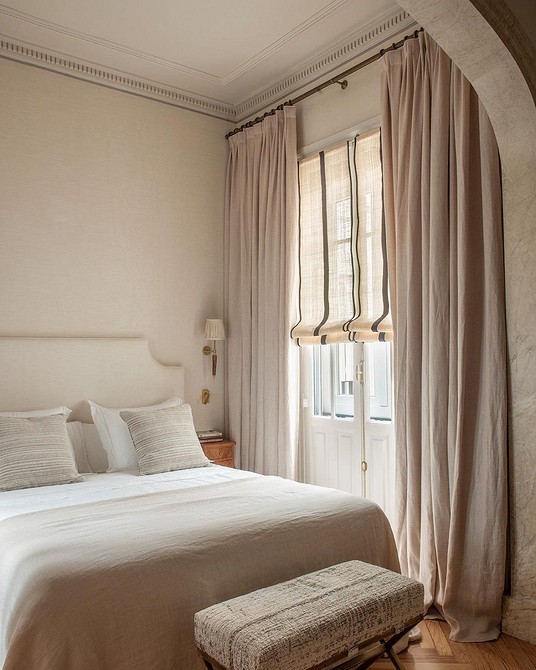
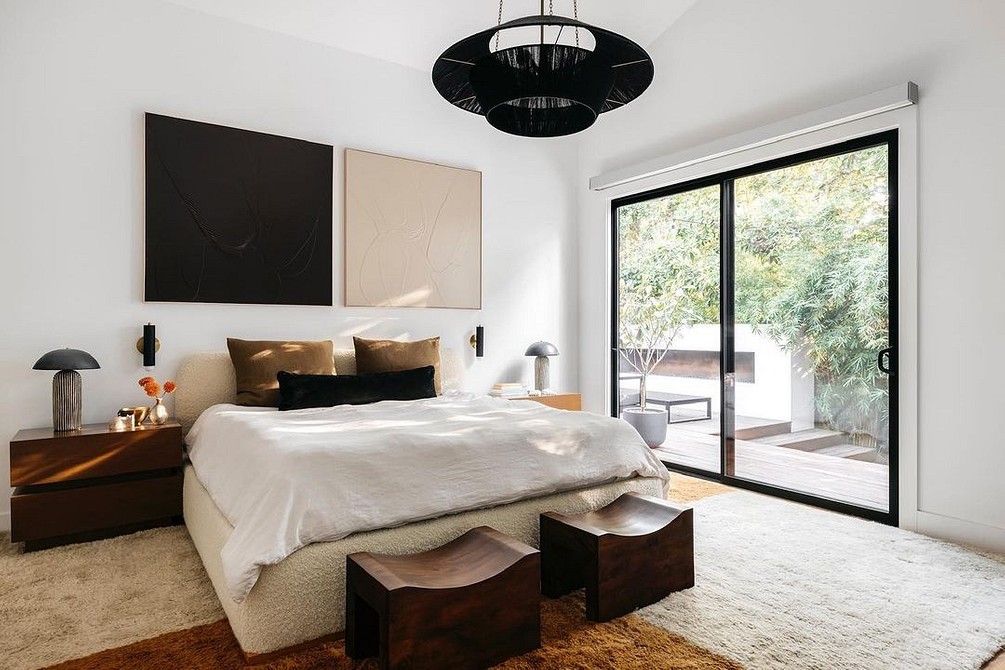
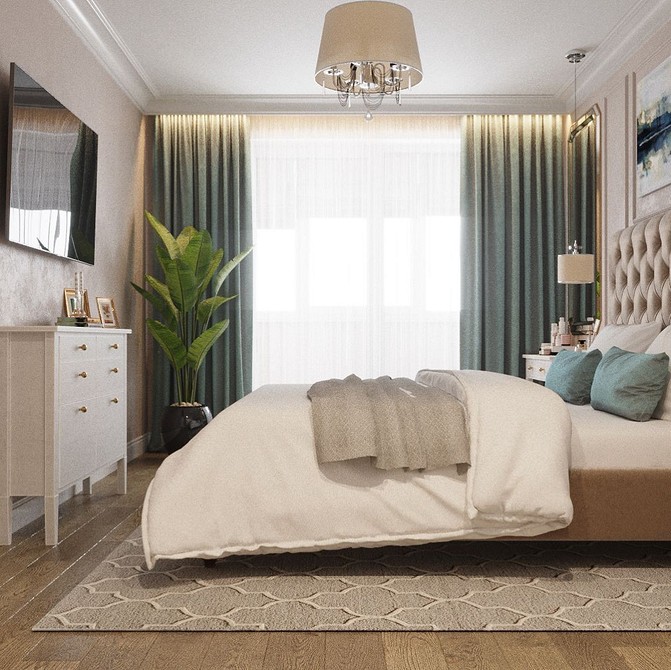
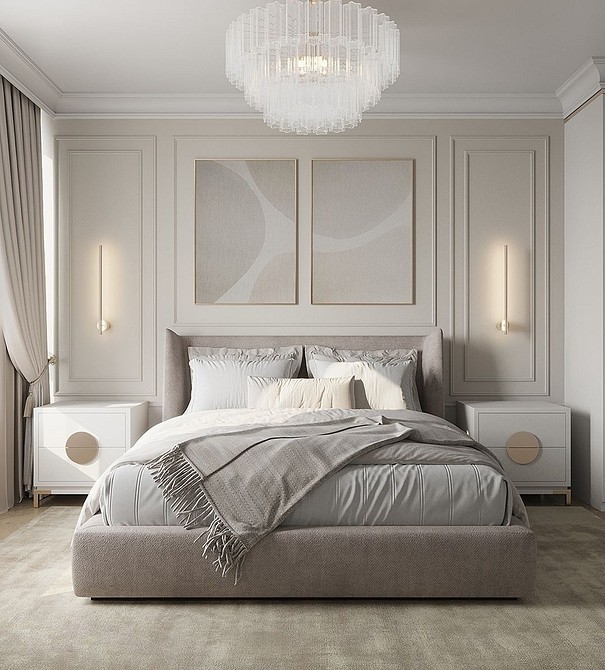

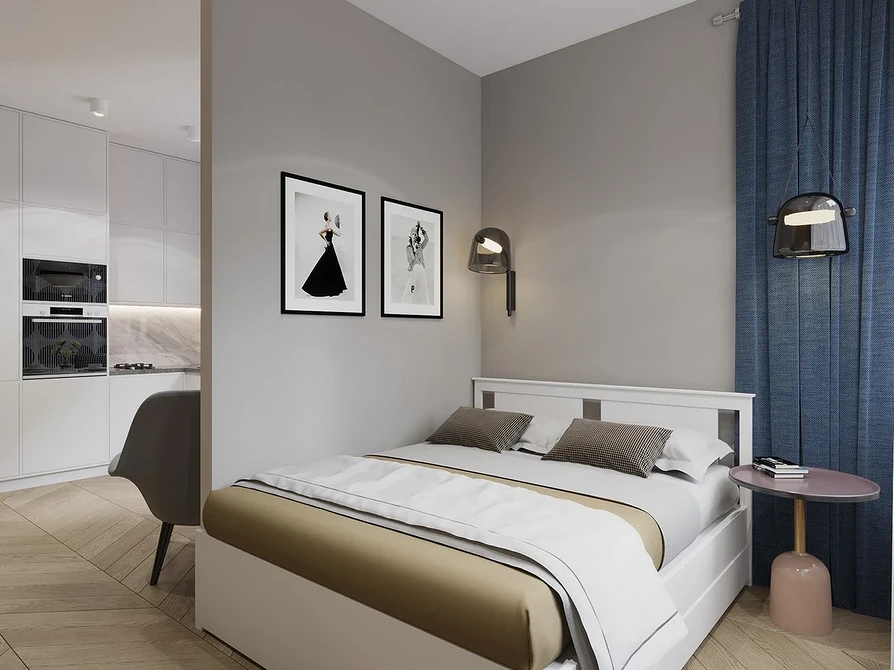
How to Diversify a Beige Bedroom Interior (Photos and Recommendations)
Bright Accents
Despite its versatility, beige often turns out to be too neutral and inconspicuous, even when combined with other colors.
While generally beneficial for a bedroom, many crave more vibrancy in such a setting. Vivid details in juicy shades, like red, gold, orange, lime green, azure, etc., can add lively touches. A beige bedroom design truly comes to life in the company of such colors. But don’t overdo it: this should be either one large and noticeable element (like a carpet, chandelier, or painting) or several small ones (table lamps, sofa cushions, or art pieces).
Sometimes, one color isn’t enough to dilute the pallor of pale shades. Then, use two tones: better if they contrast with the finish but are somehow related to each other. For instance, a duo of mysterious purple and emerald, pure azure and scarlet, or delicate soft pink and pastel blue, etc.
Darker and richer interiors usually don’t need contrasting details and additions. However, if desired, they can be diversified with shades of brown or black.
By looking at photos of light beige bedrooms with different color accents, you can easily understand which design option is closer to you.
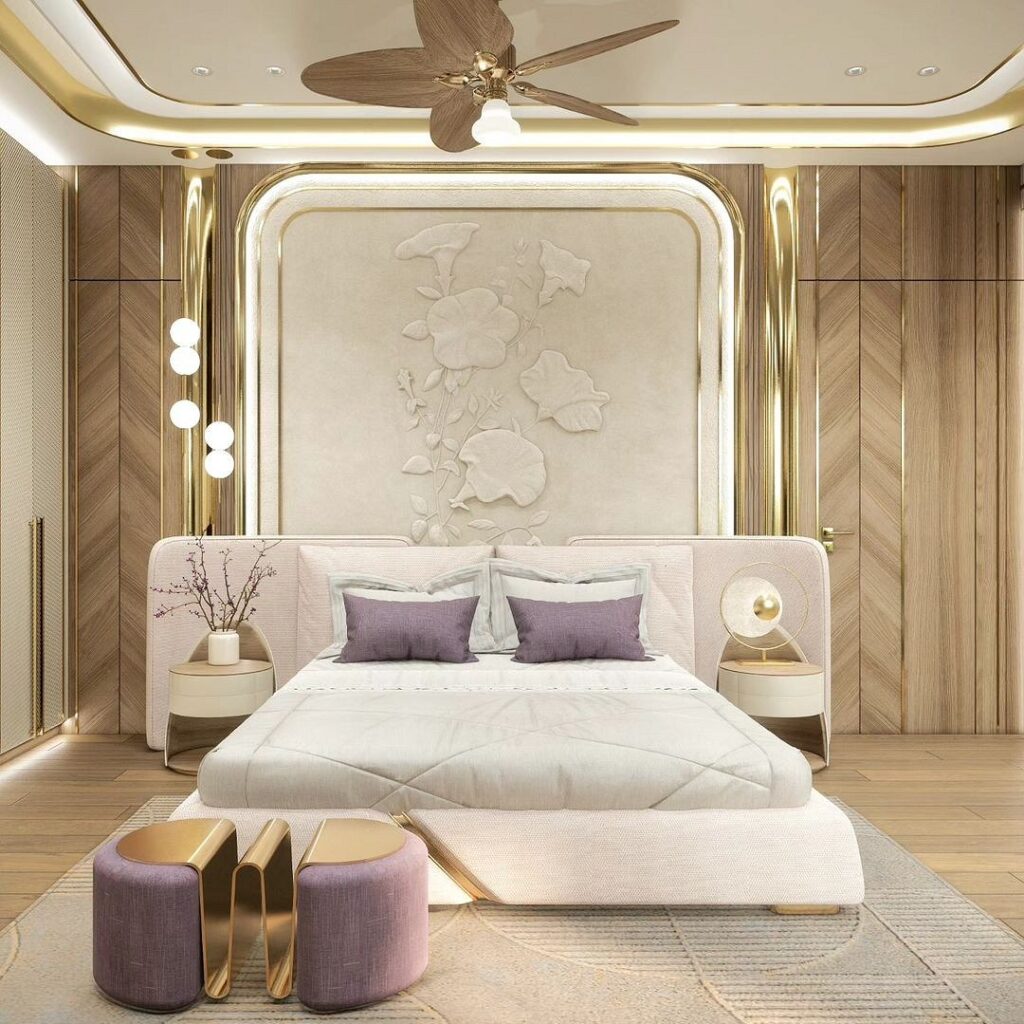

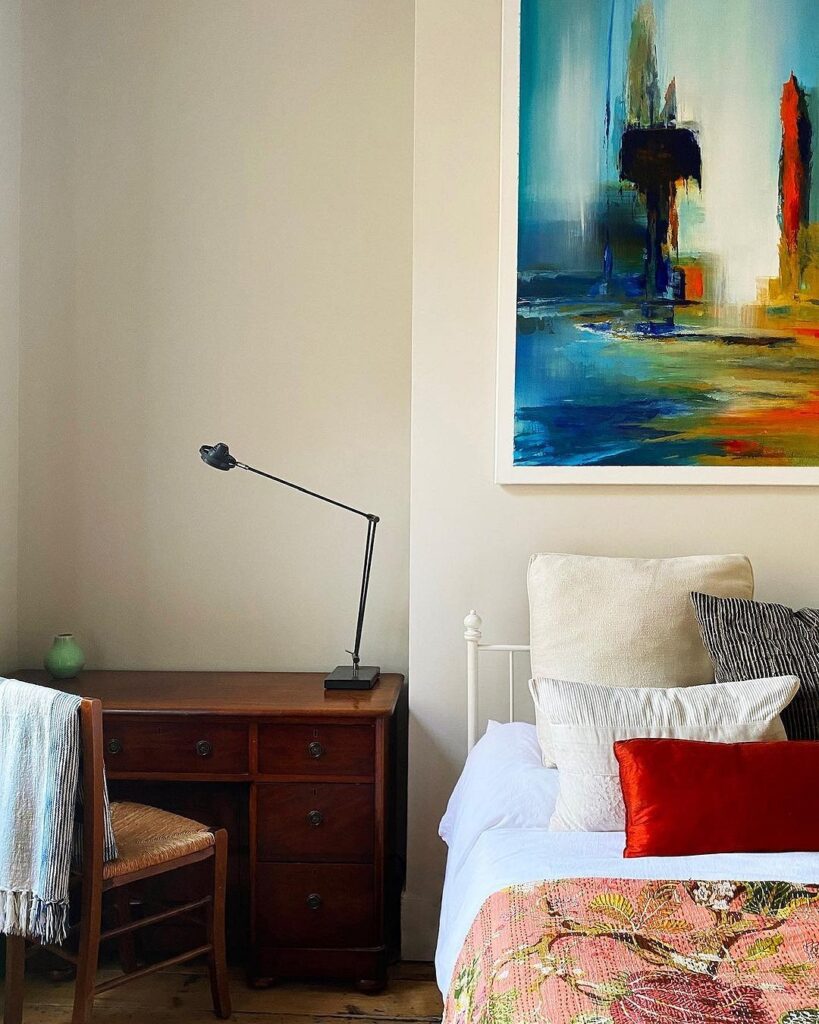
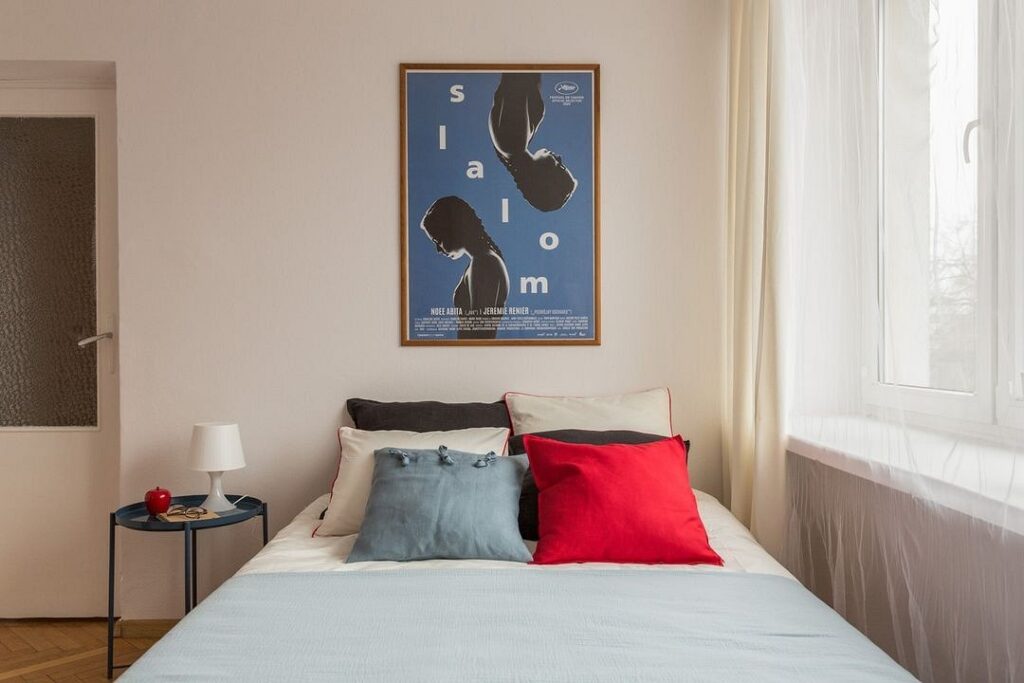
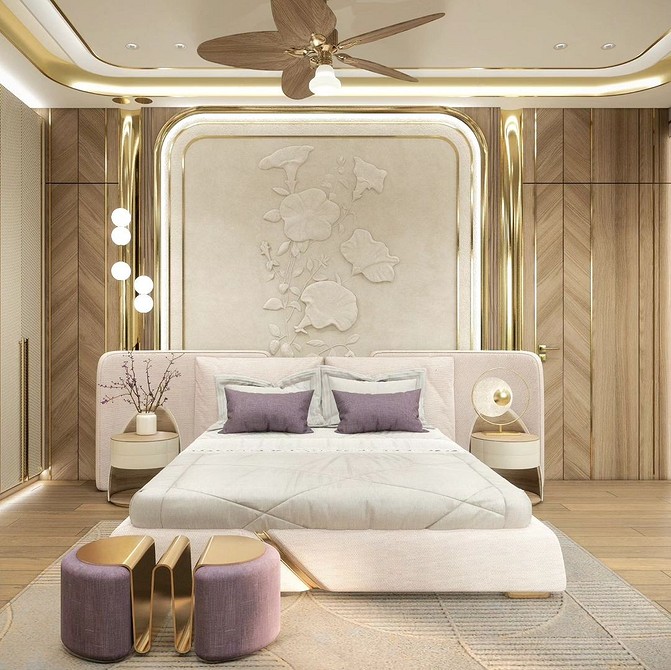

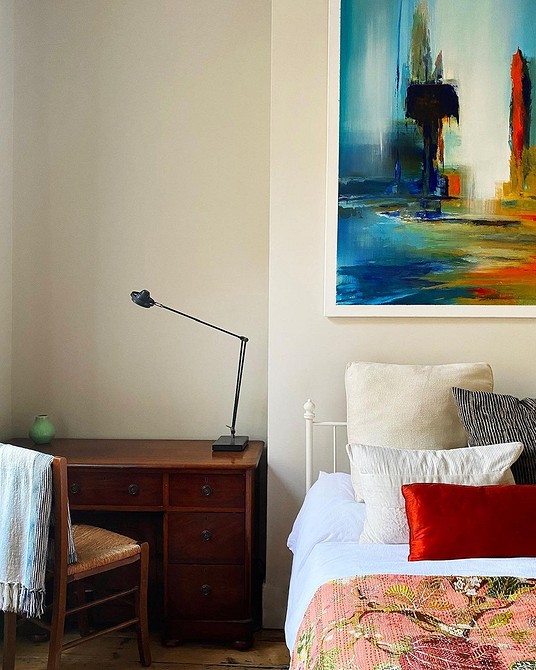
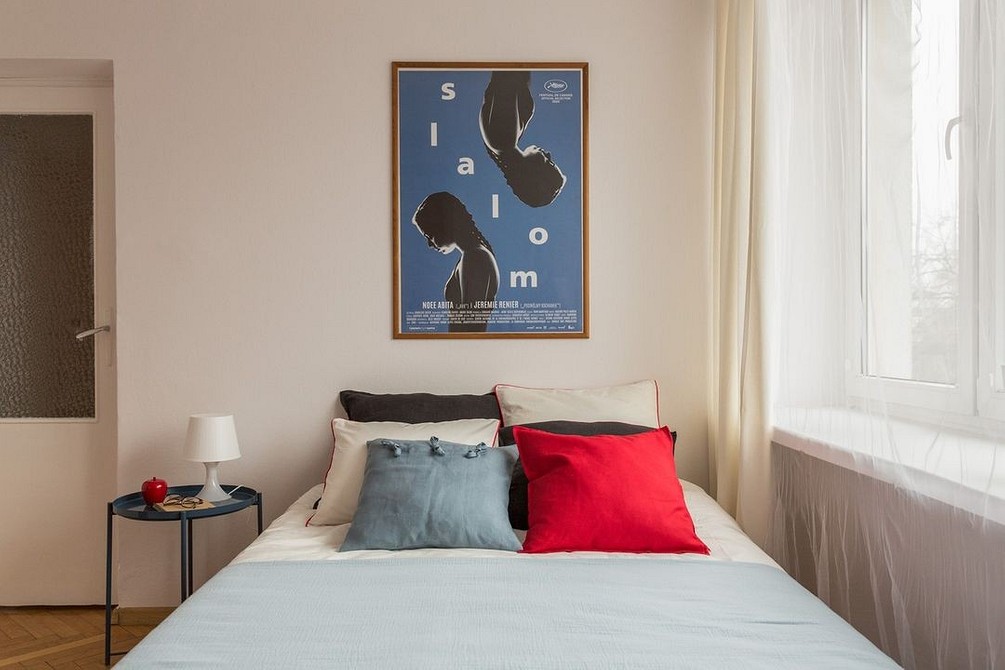
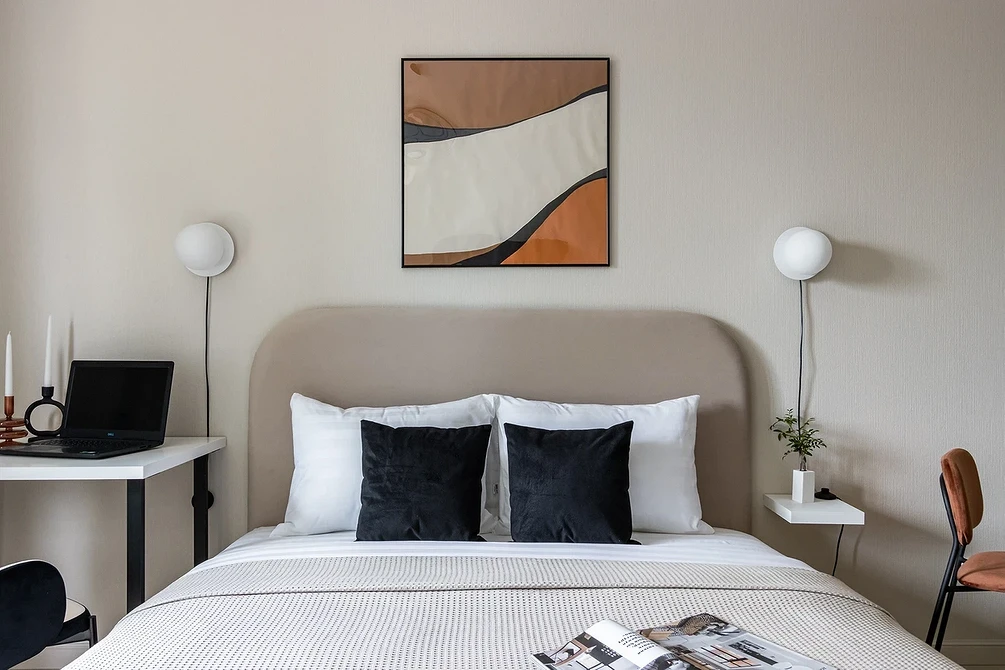

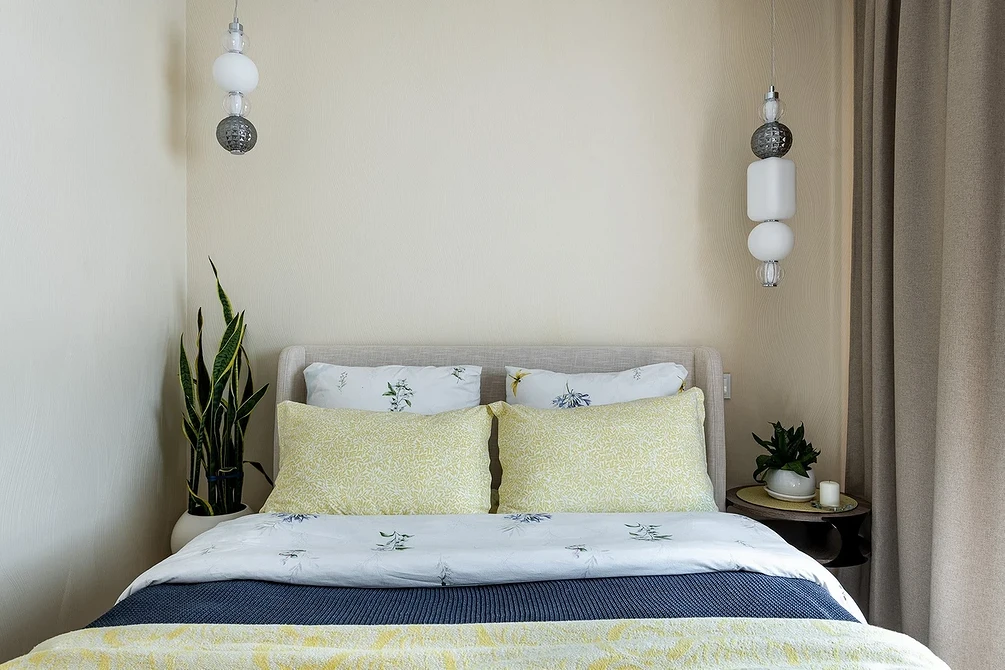
Adding Texture
The perception of beige tones significantly depends on the material’s characteristics: smooth and embossed wallpapers of the same shade will look different, and semi-transparent thin linen curtains appear quite distinct compared to the same, but rough and dense ones.
Shiny, velvety, crinkled fabrics, rough and polished wall surfaces, woven and classic furniture — the choice of textures is vast. But don’t get carried away with experimenting with them; everything should be in moderation. A simple rule can guide you: the more shades a beige bedroom design incorporates, the less variety of textures should be, and vice versa.

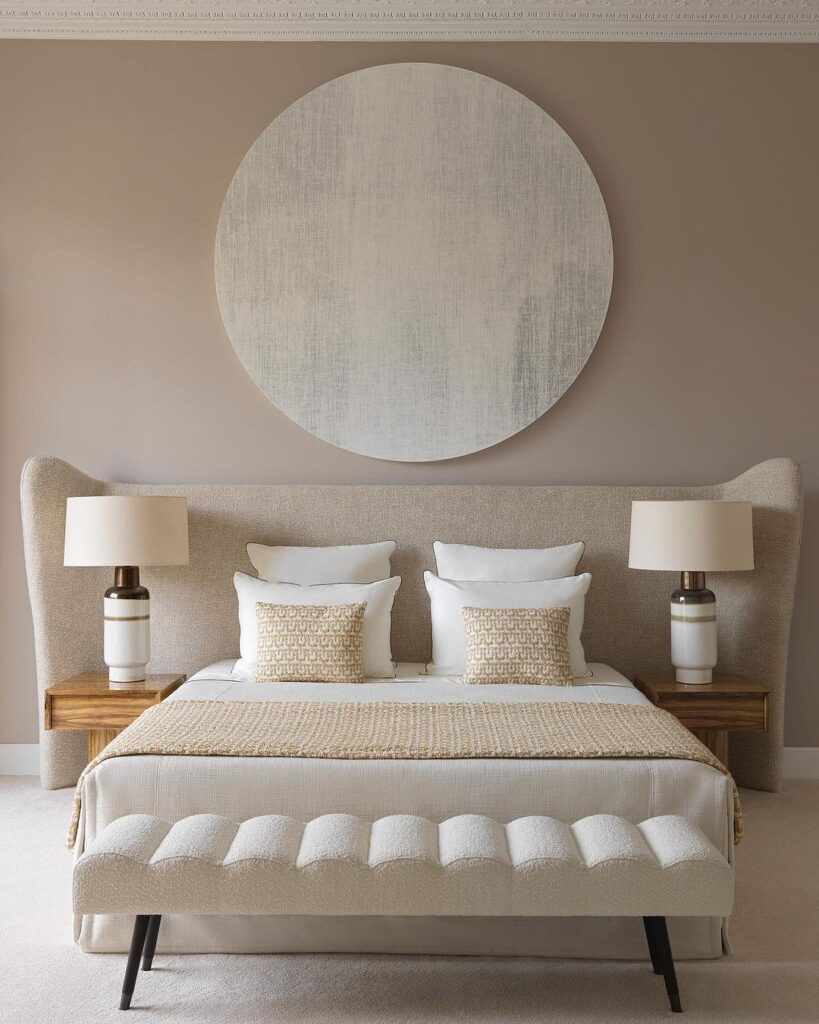
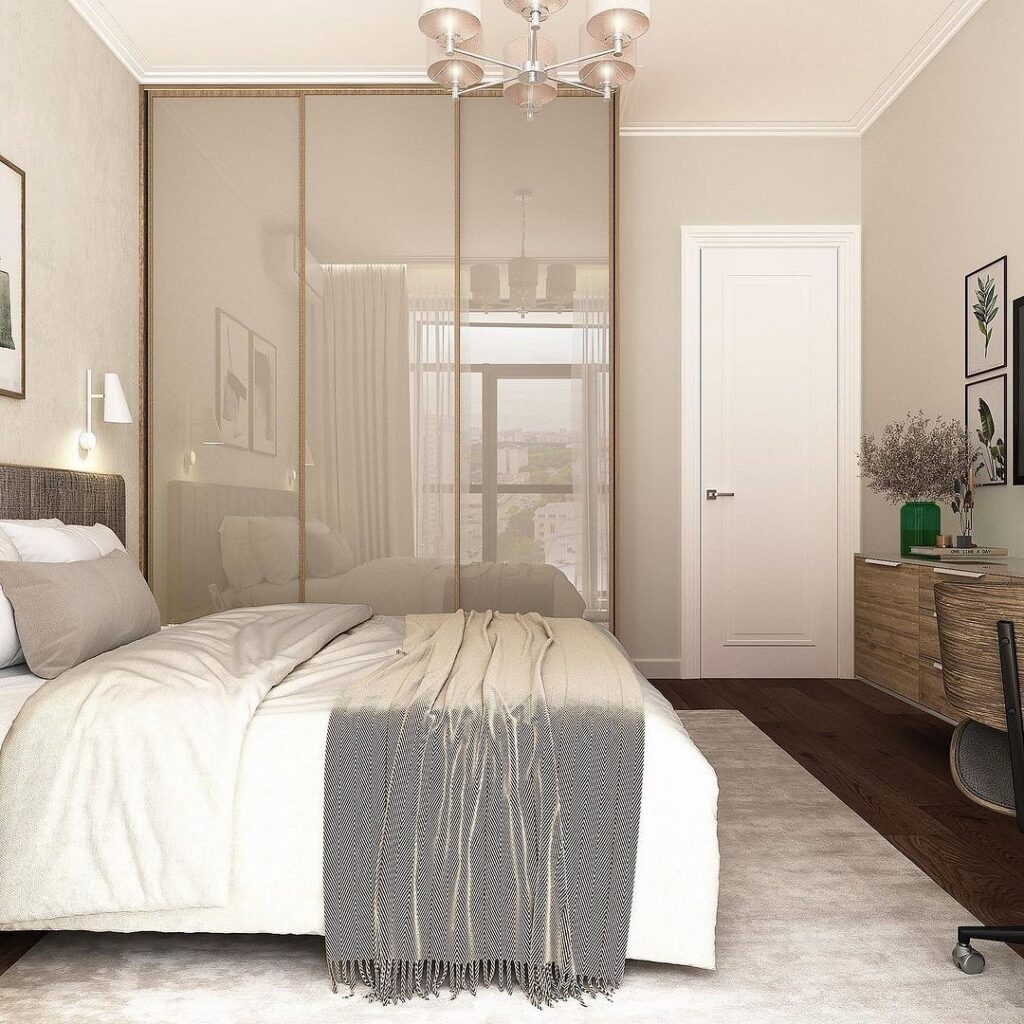
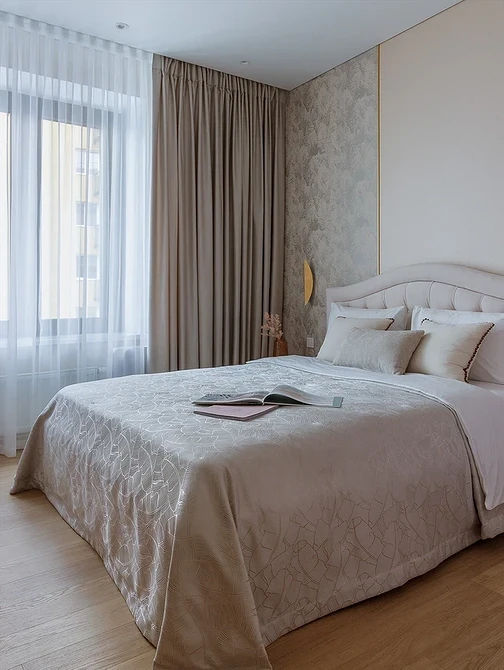
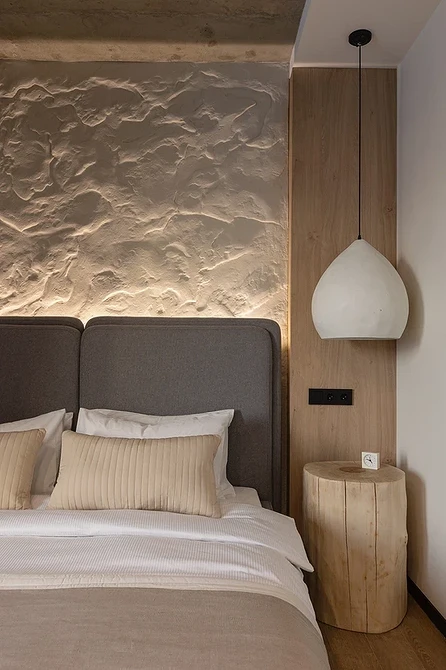
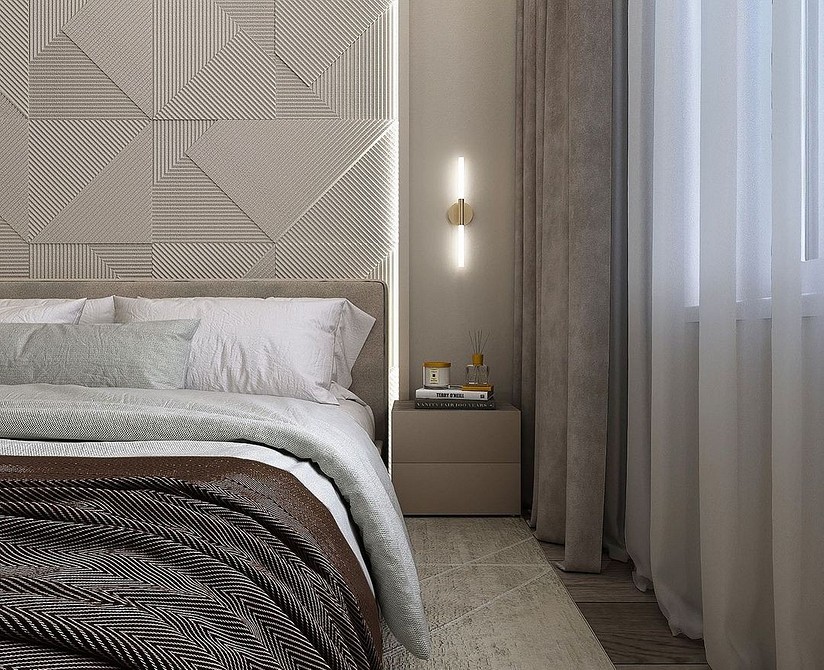

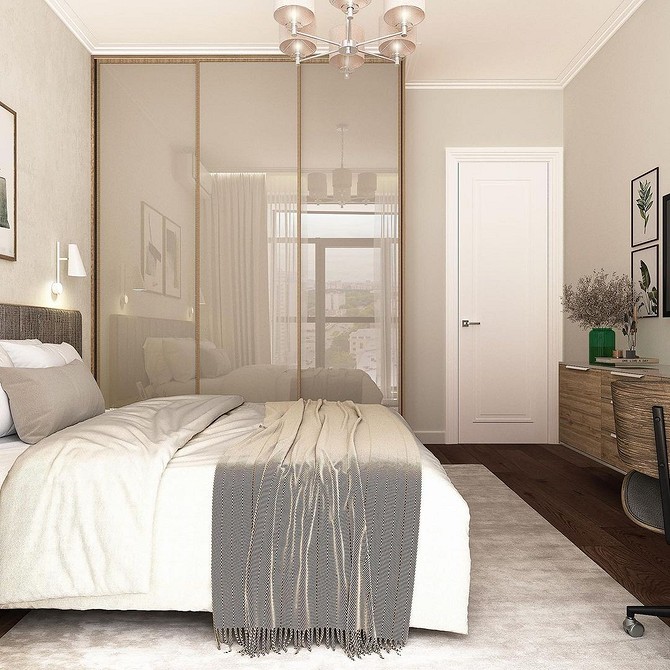

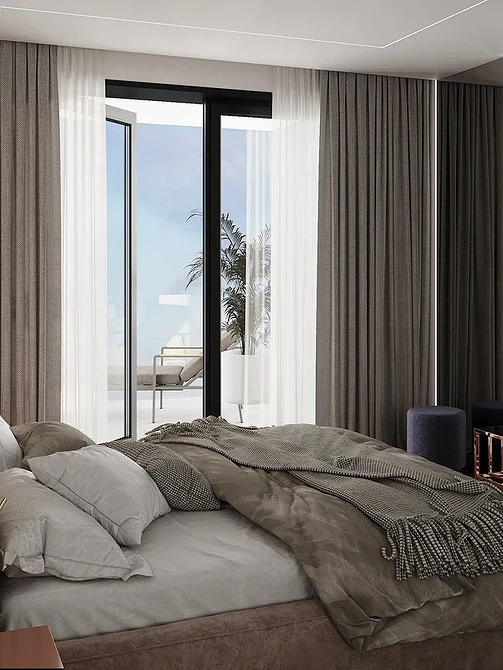
Styles in Which Beige Is Appropriate
This color is universal — its application is permissible in almost all styles. Here are a few recommendations.
- Beige is most commonly used in classical style: it can be said to be one of the pillars of such design. It is often complemented with white or gray, and gold is usually chosen for details.
- The same can be said for contemporary or minimalism: a cool light-brown palette is considered one of the central elements in such design. However, unlike classical style, it is complemented not only with achromatic colors but also with contrasting tones: blue, red, lilac, etc.
- Scandinavian style also often includes a light-brown palette. This is simply because the basis of the style is untreated furniture and other wooden items, usually made from light wood species.
- Loft style is not limited to gray concrete and terracotta brick. If a home has plastered walls, it’s often easier to paint them gray-beige than to mimic brickwork. Additionally, furniture and textiles in shades of latte and ivory harmonize well with other traditional colors of this style: black, brown, gray, and white.
- It’s impossible to do without sand-cream shades when creating a bedroom in eco-style. This direction is entirely composed of natural tones, so beige in the interior palette acts as one of the main colors.

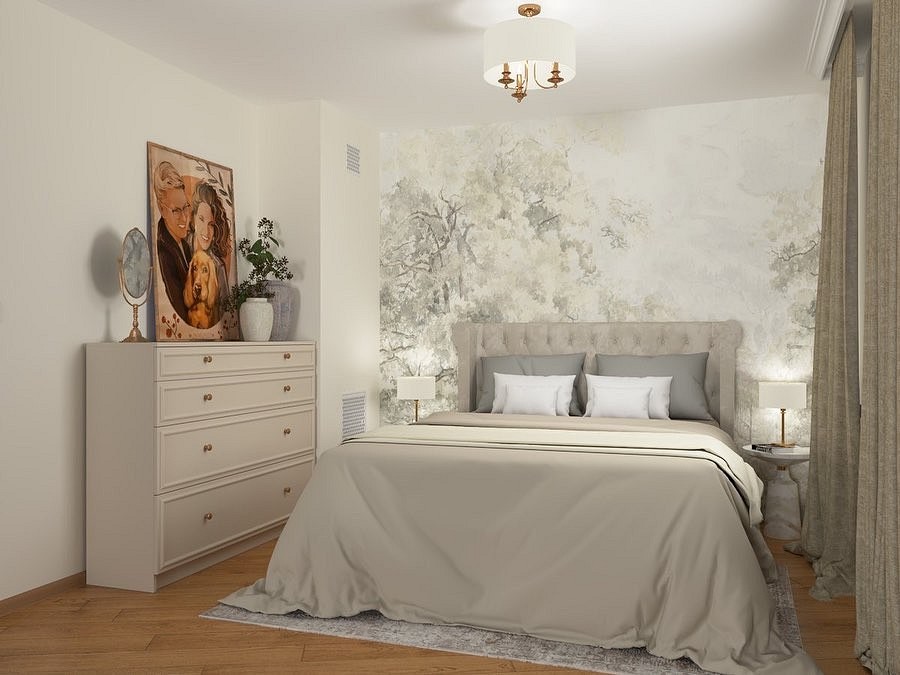

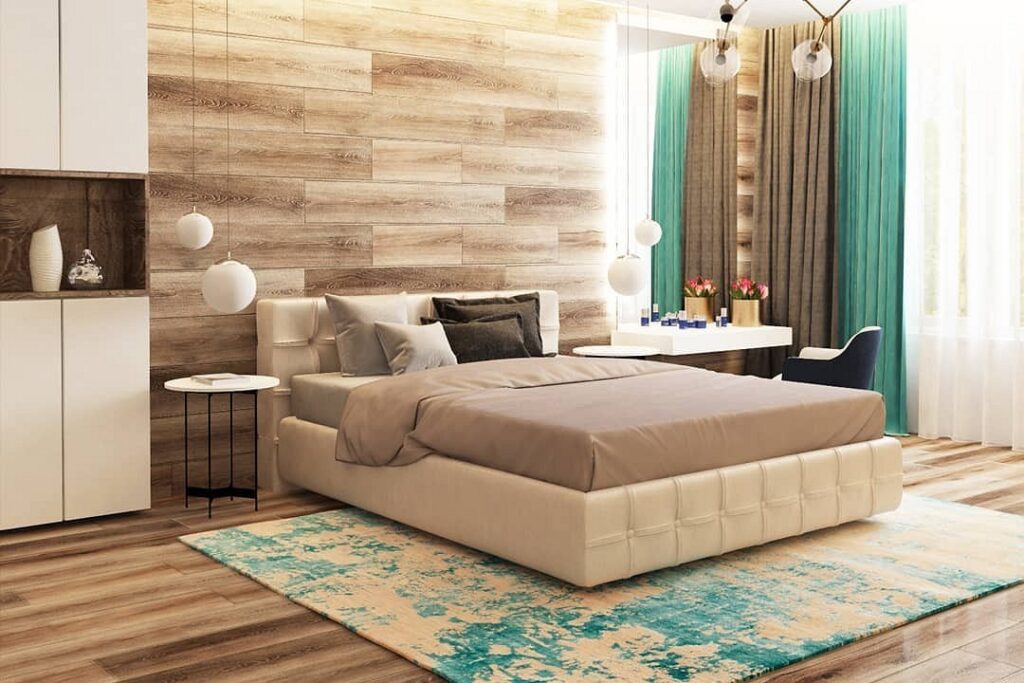
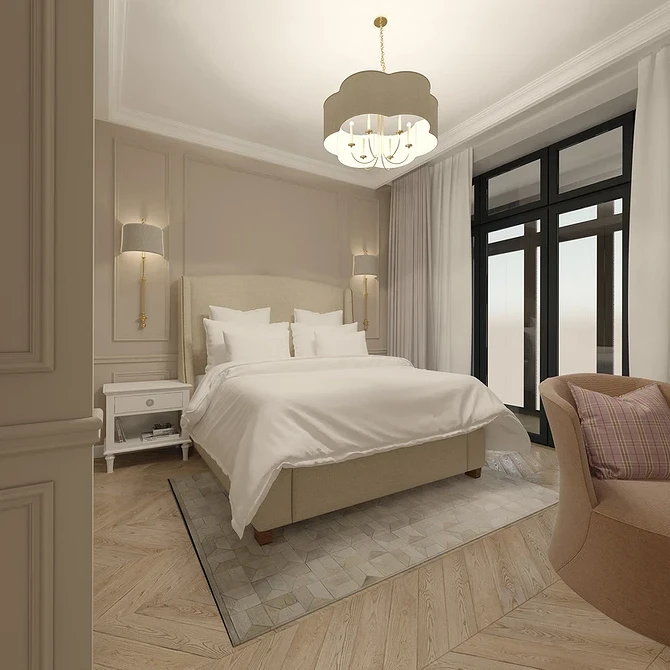
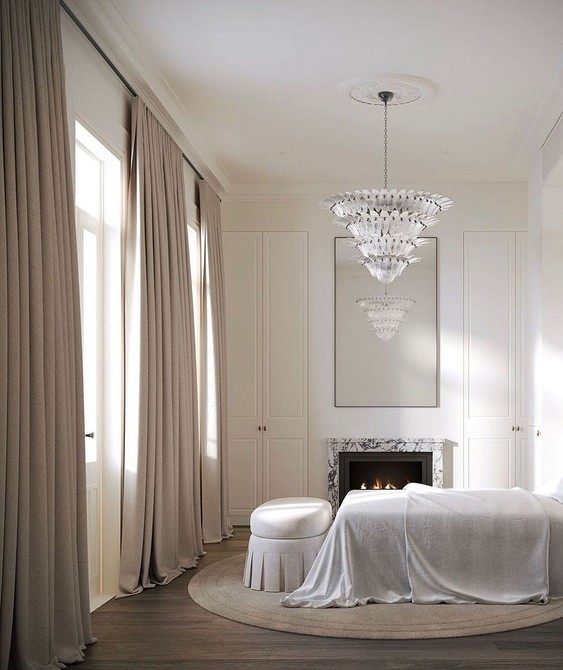
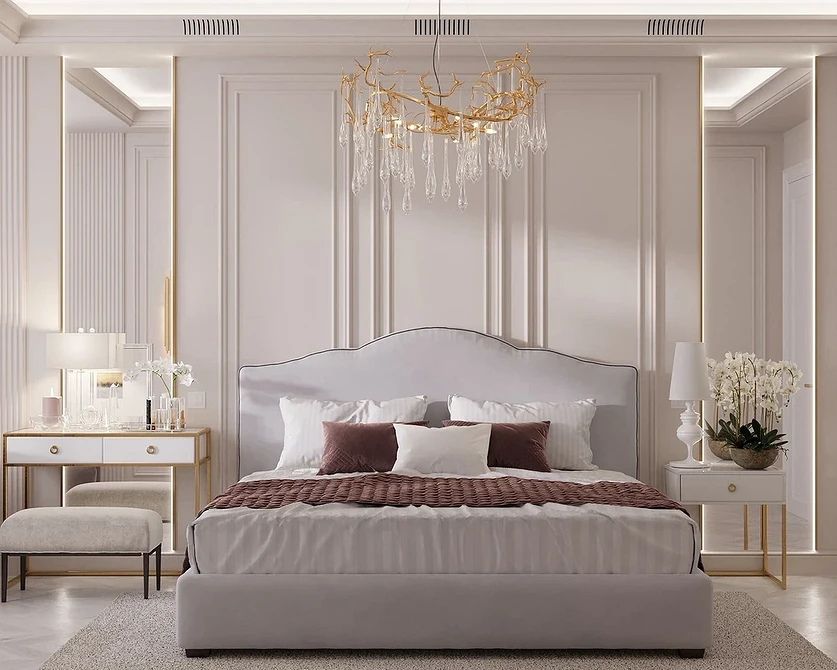
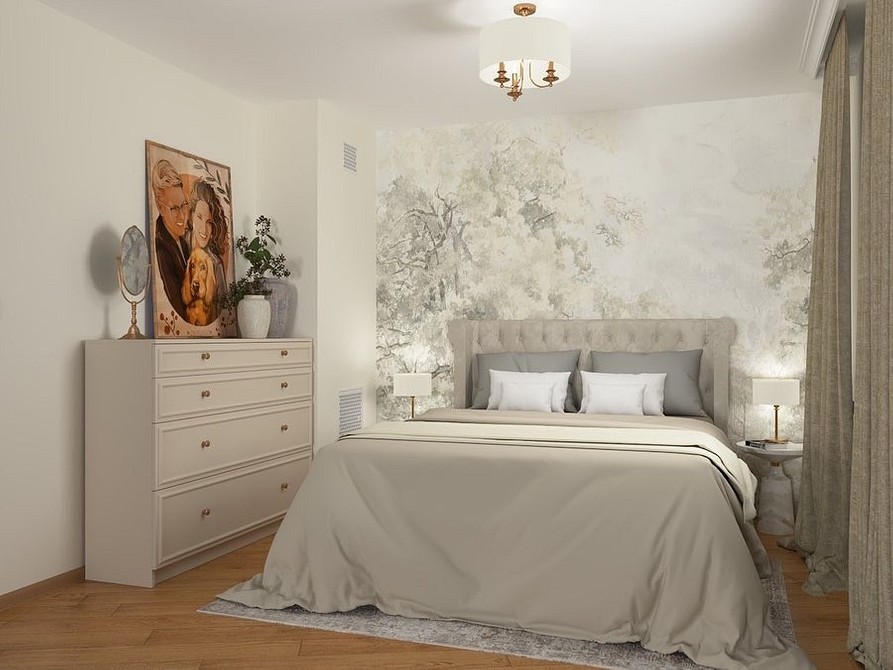
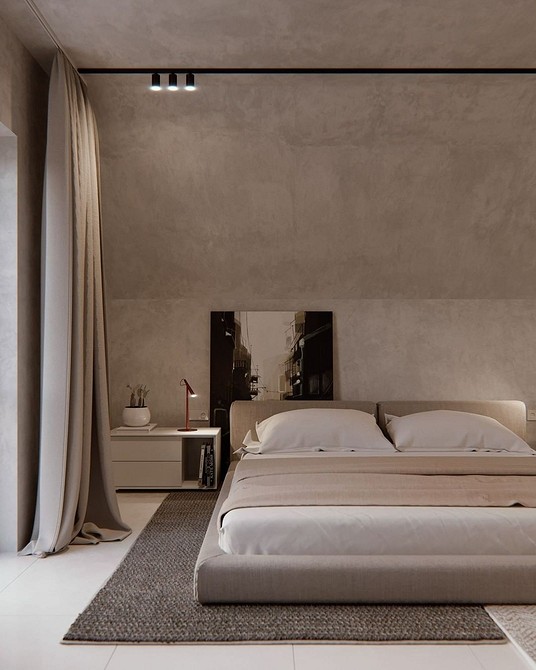
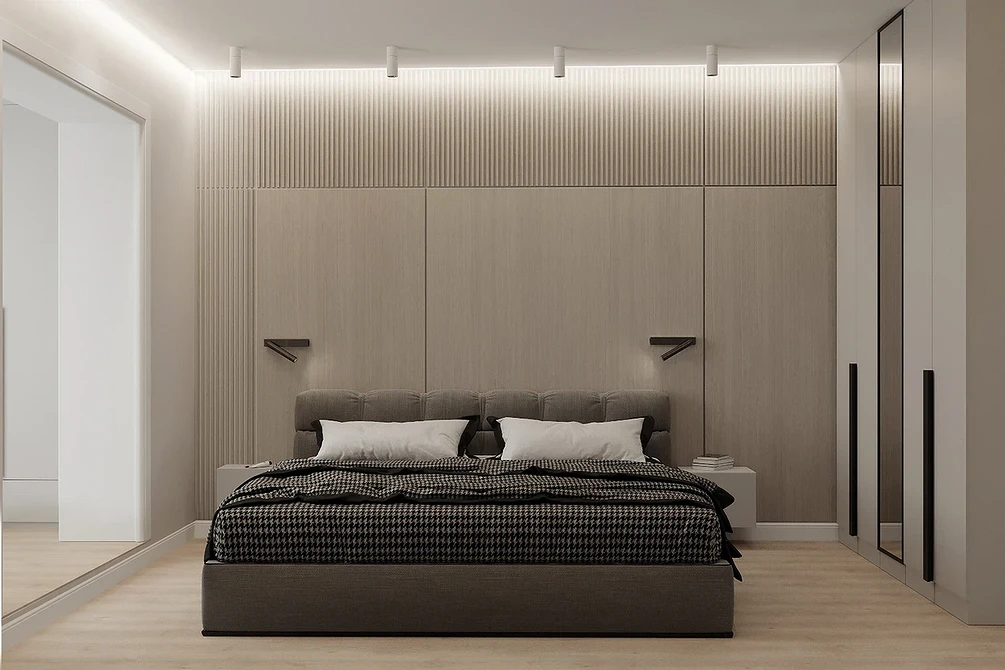
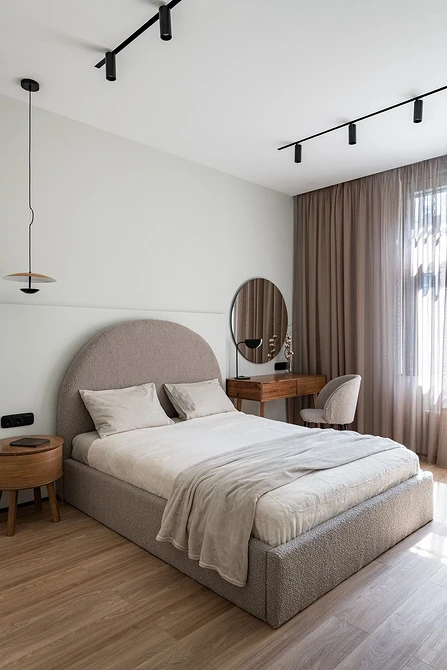
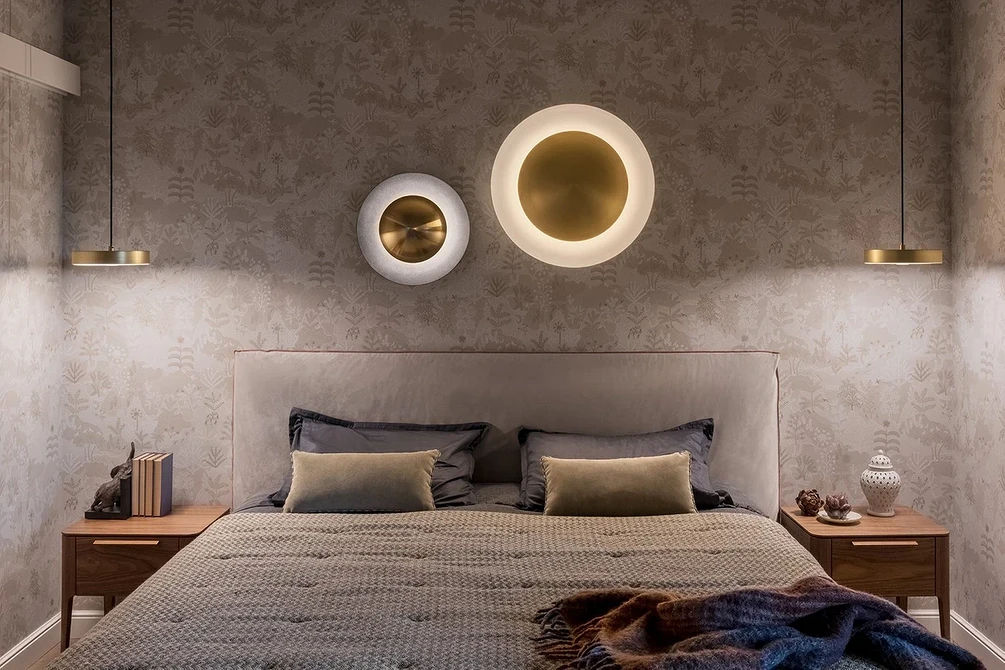
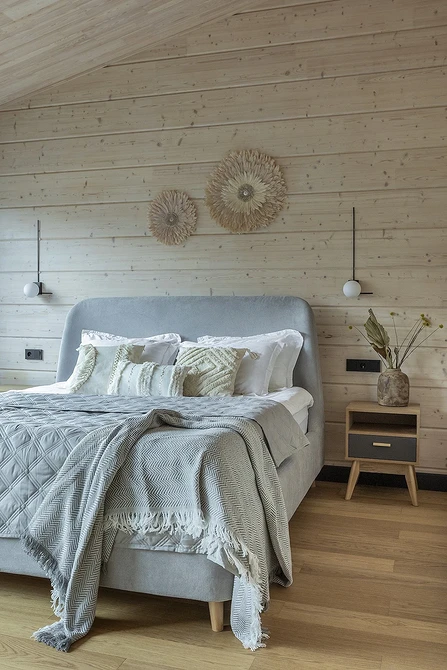
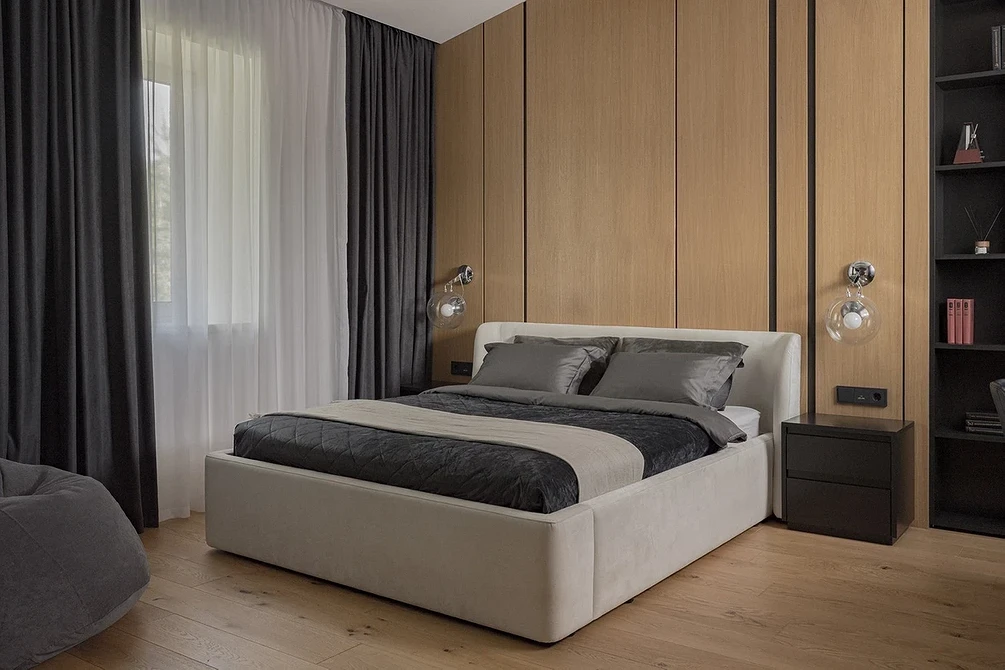

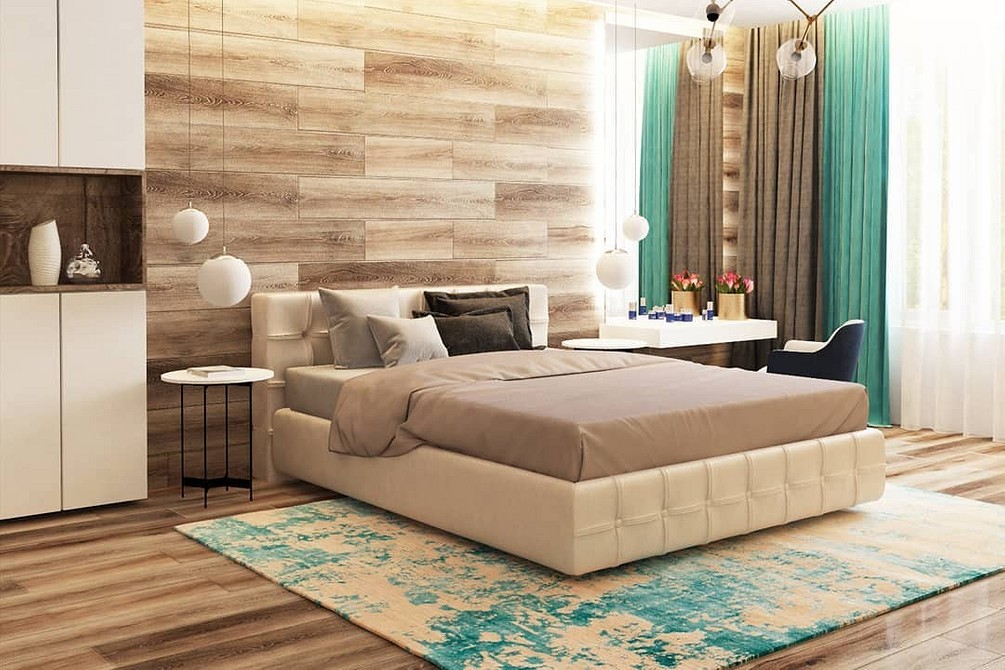

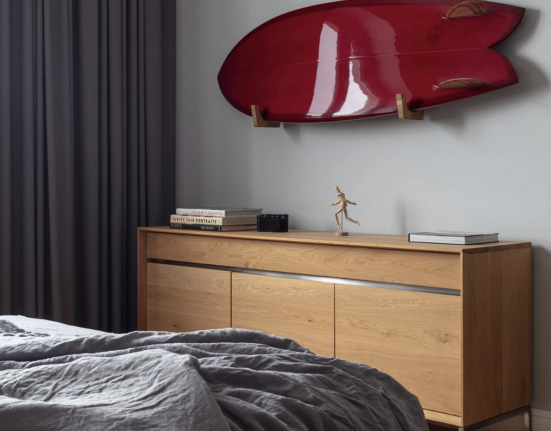
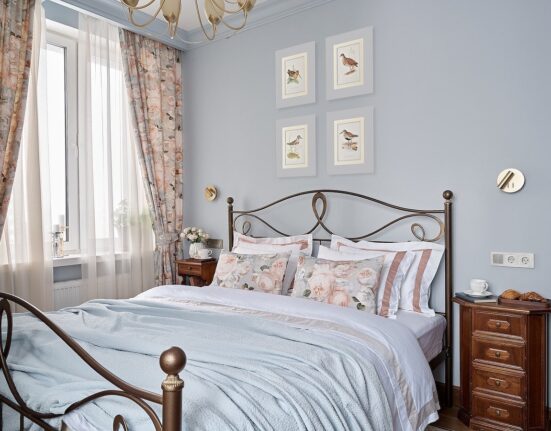
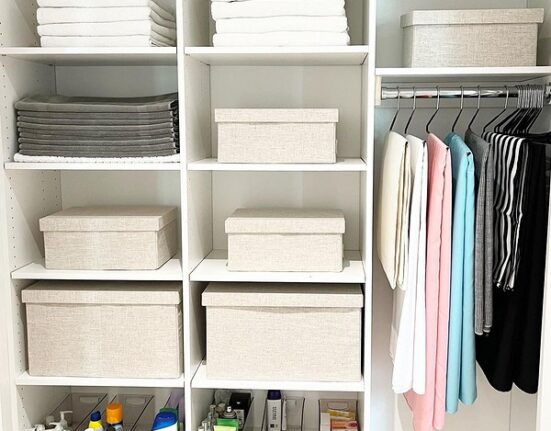


Leave feedback about this